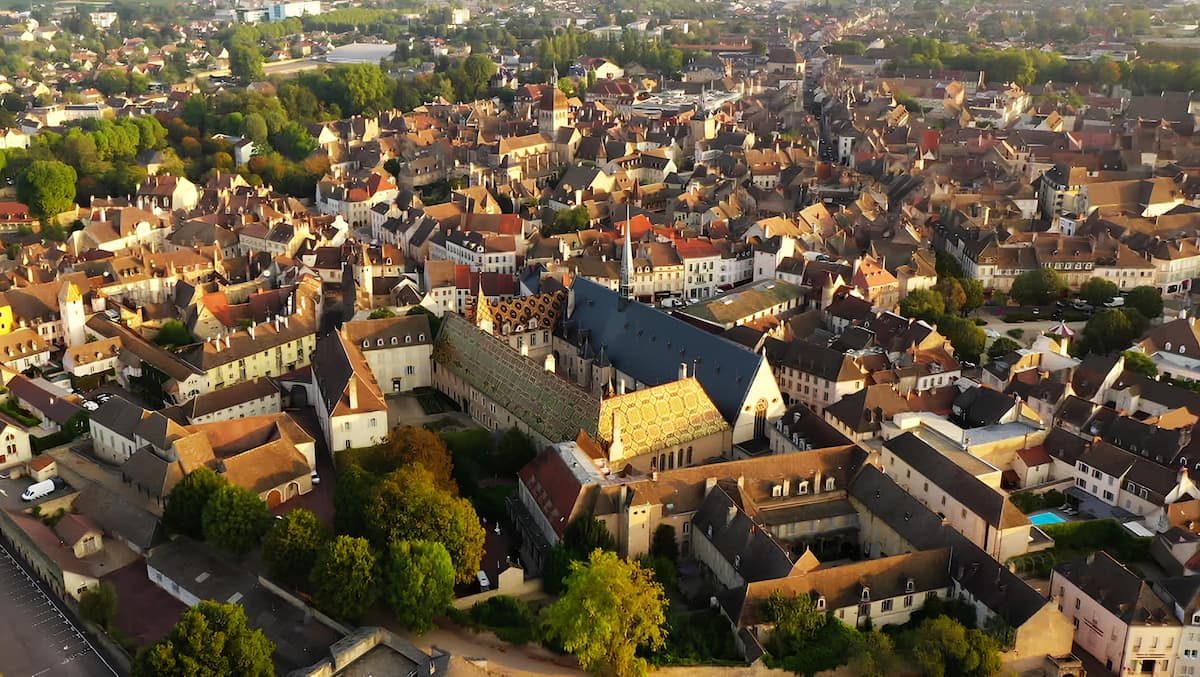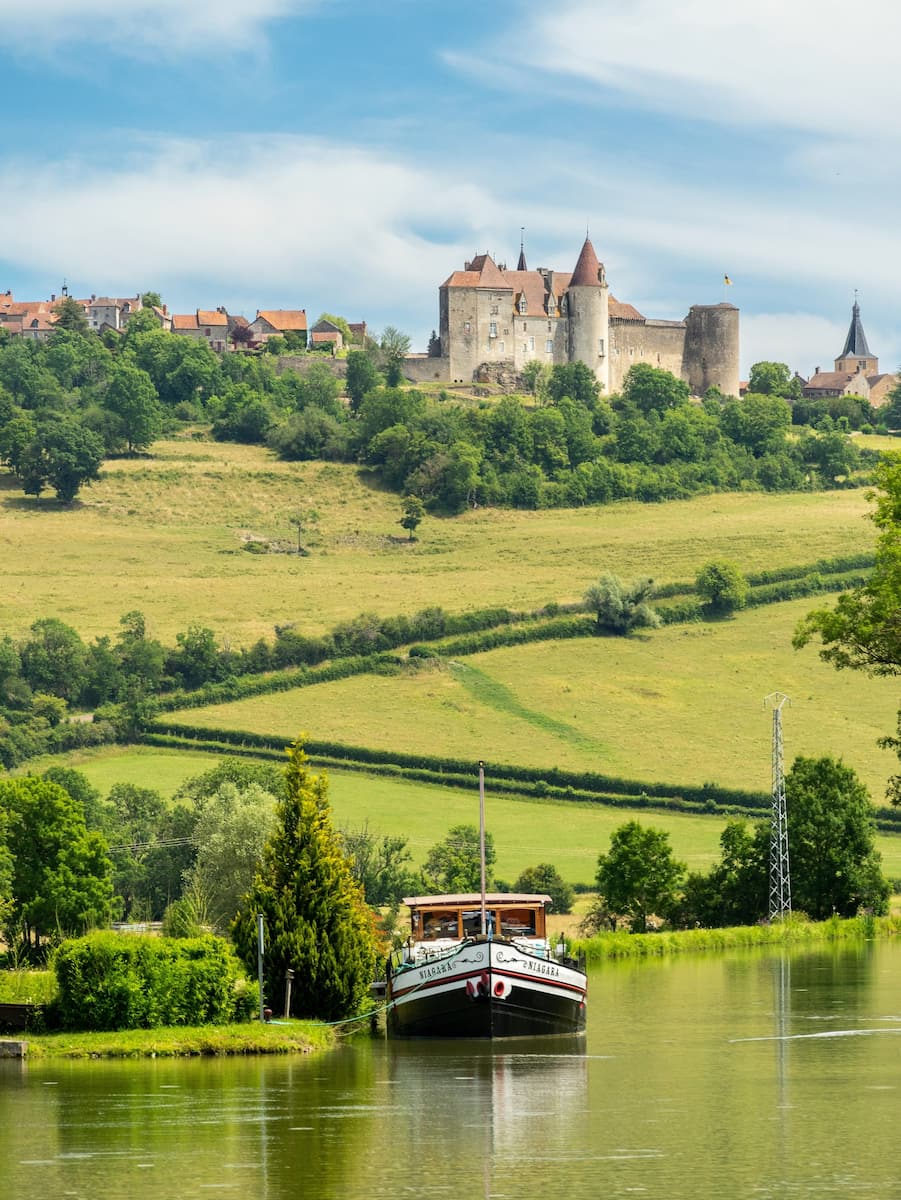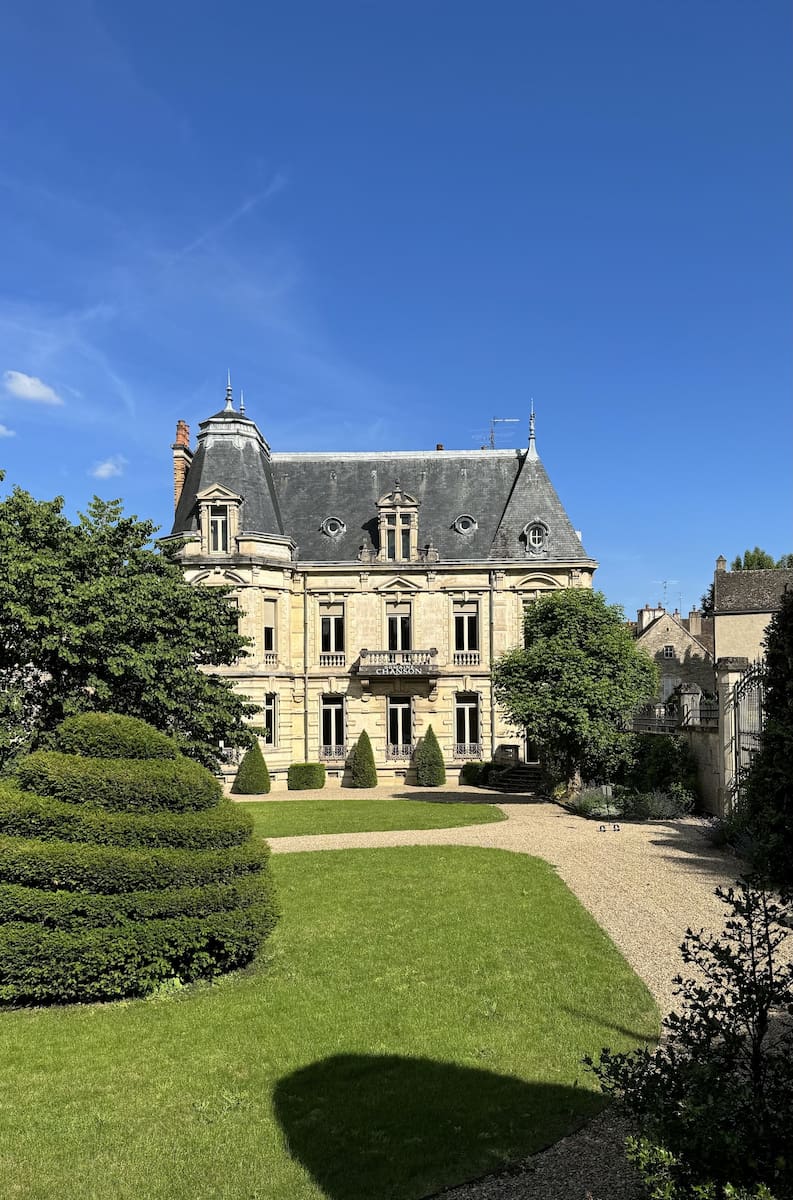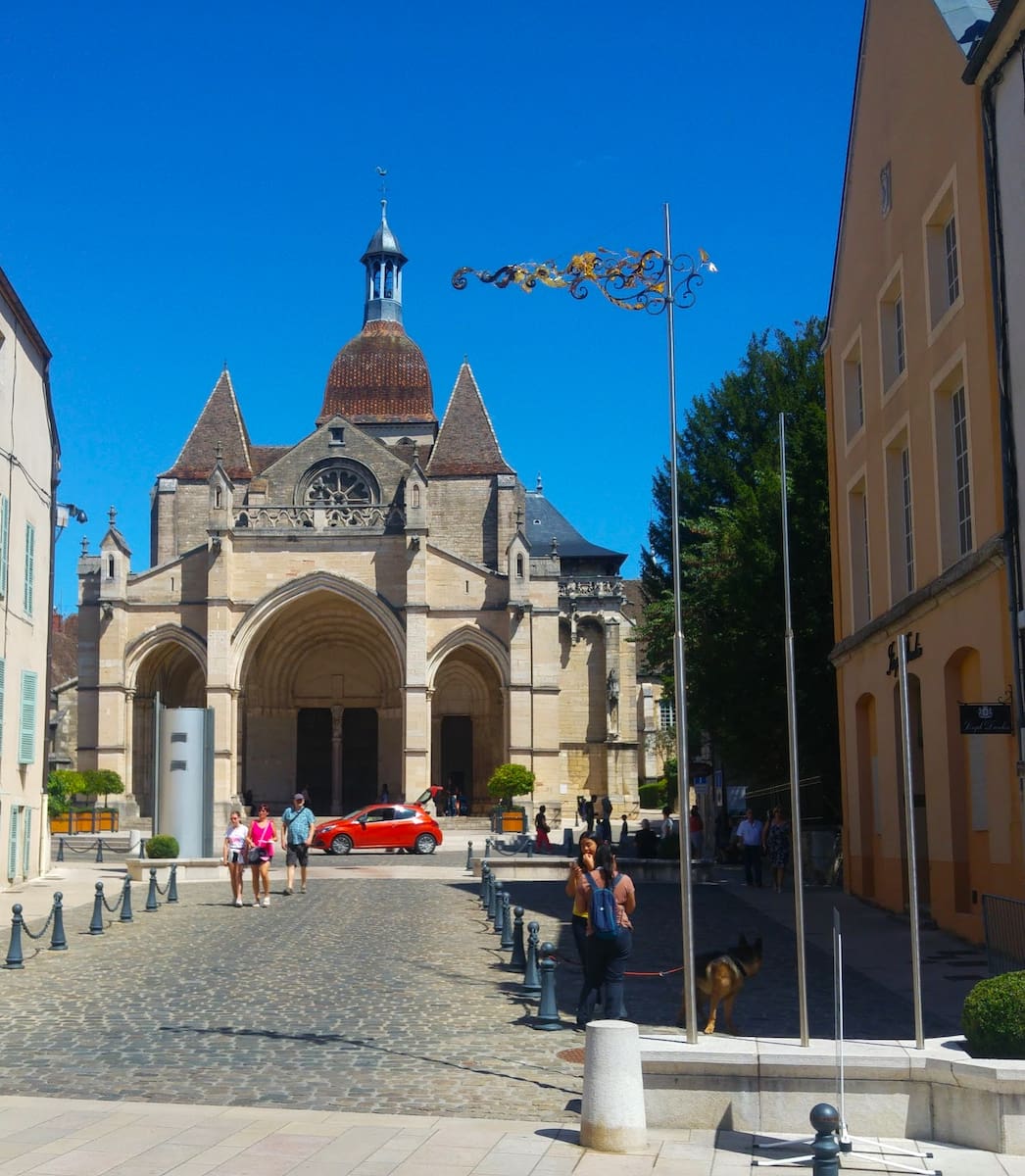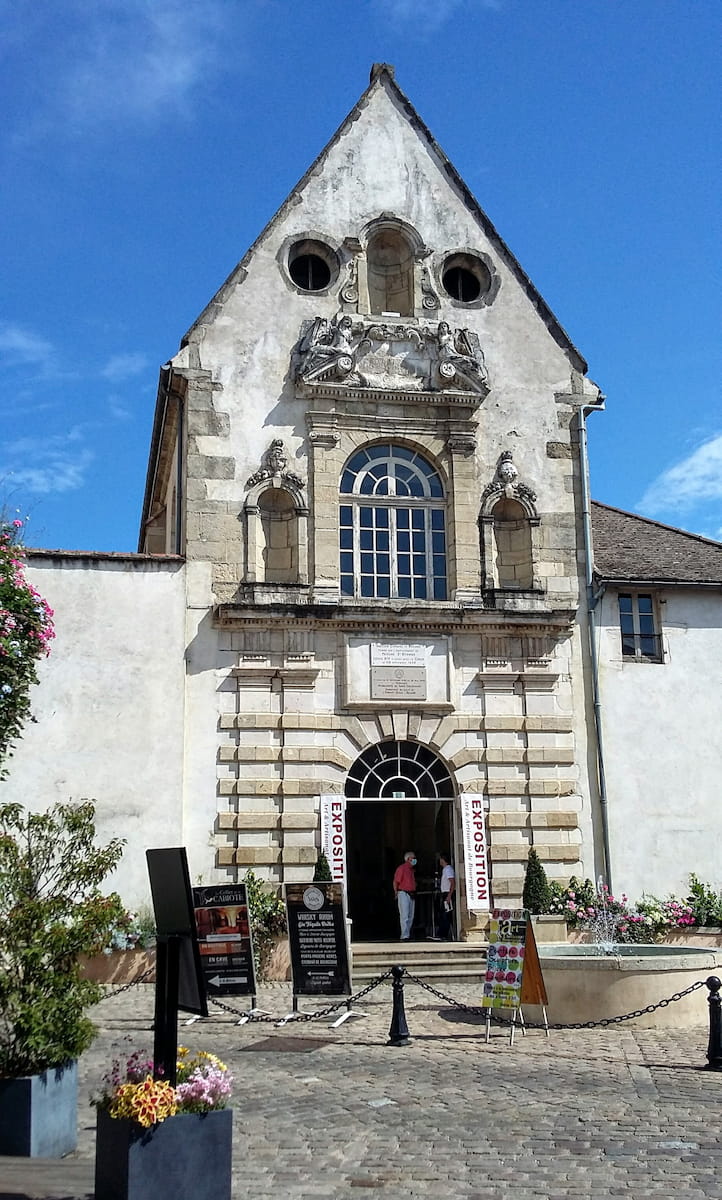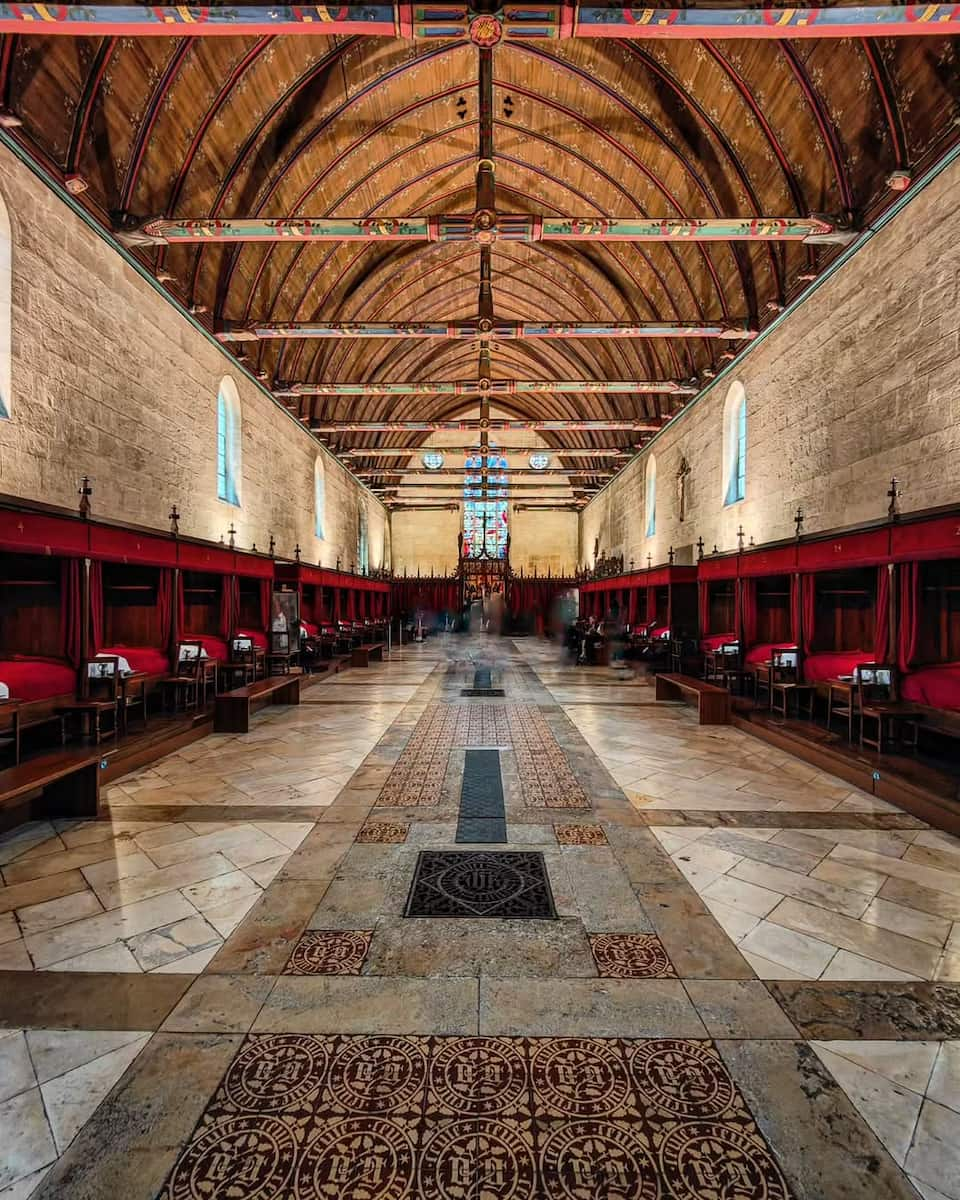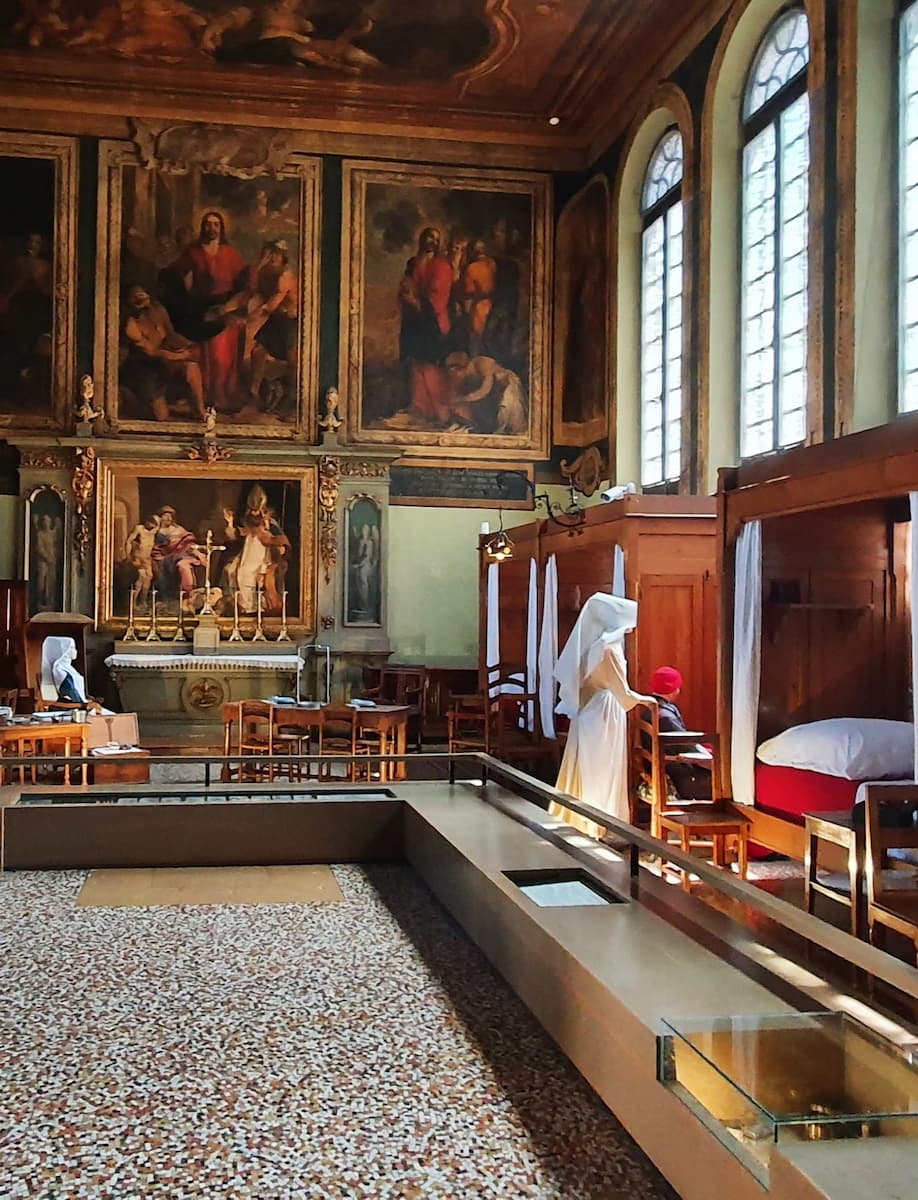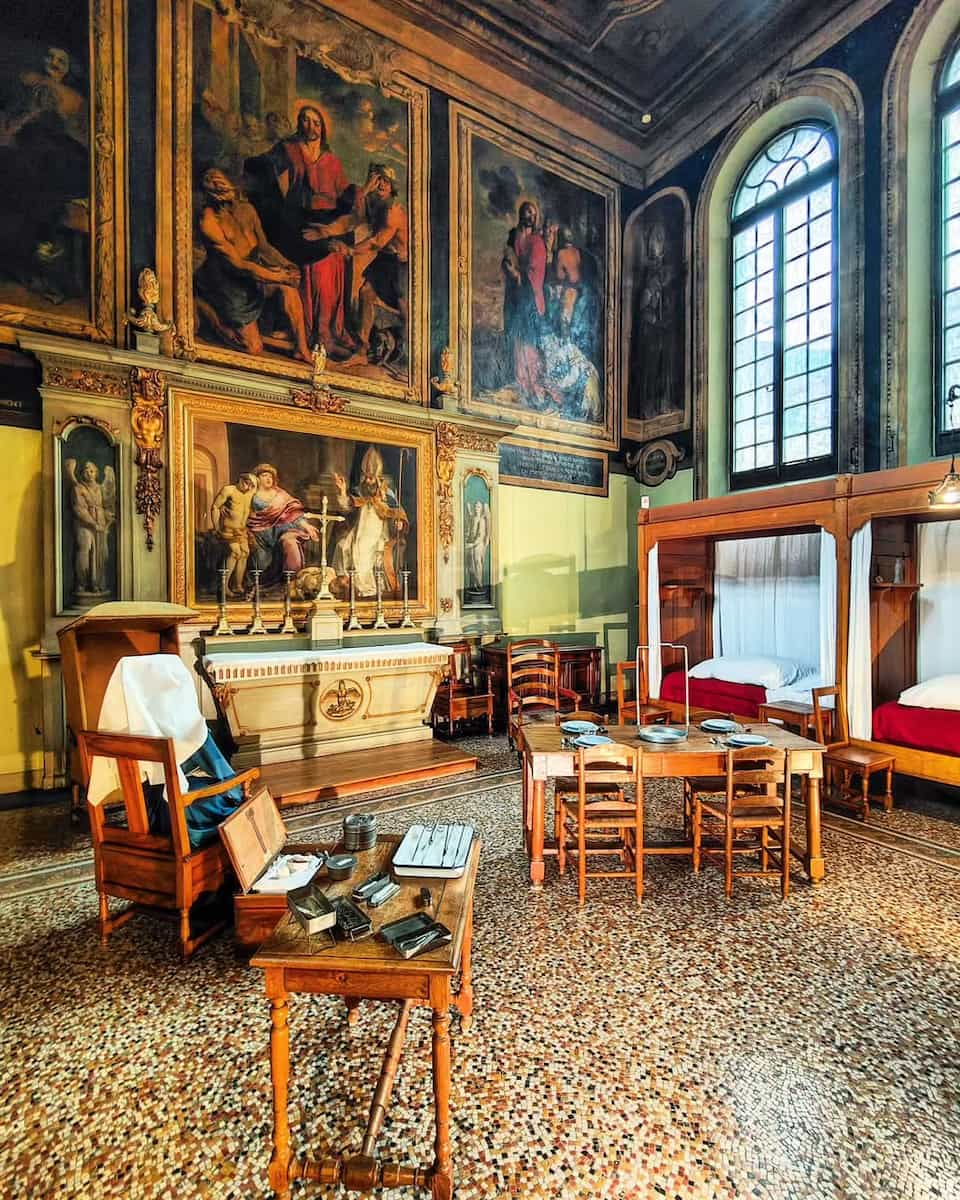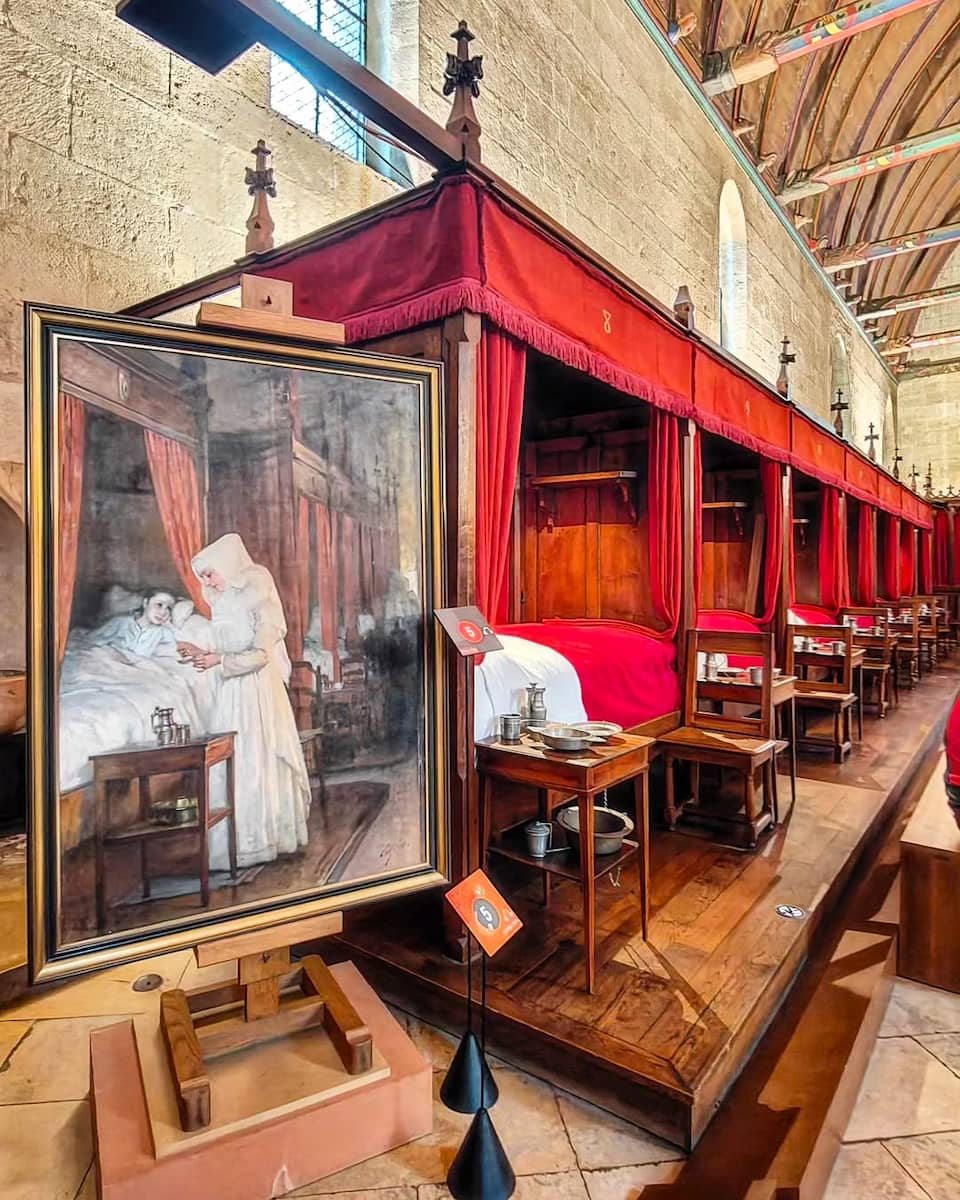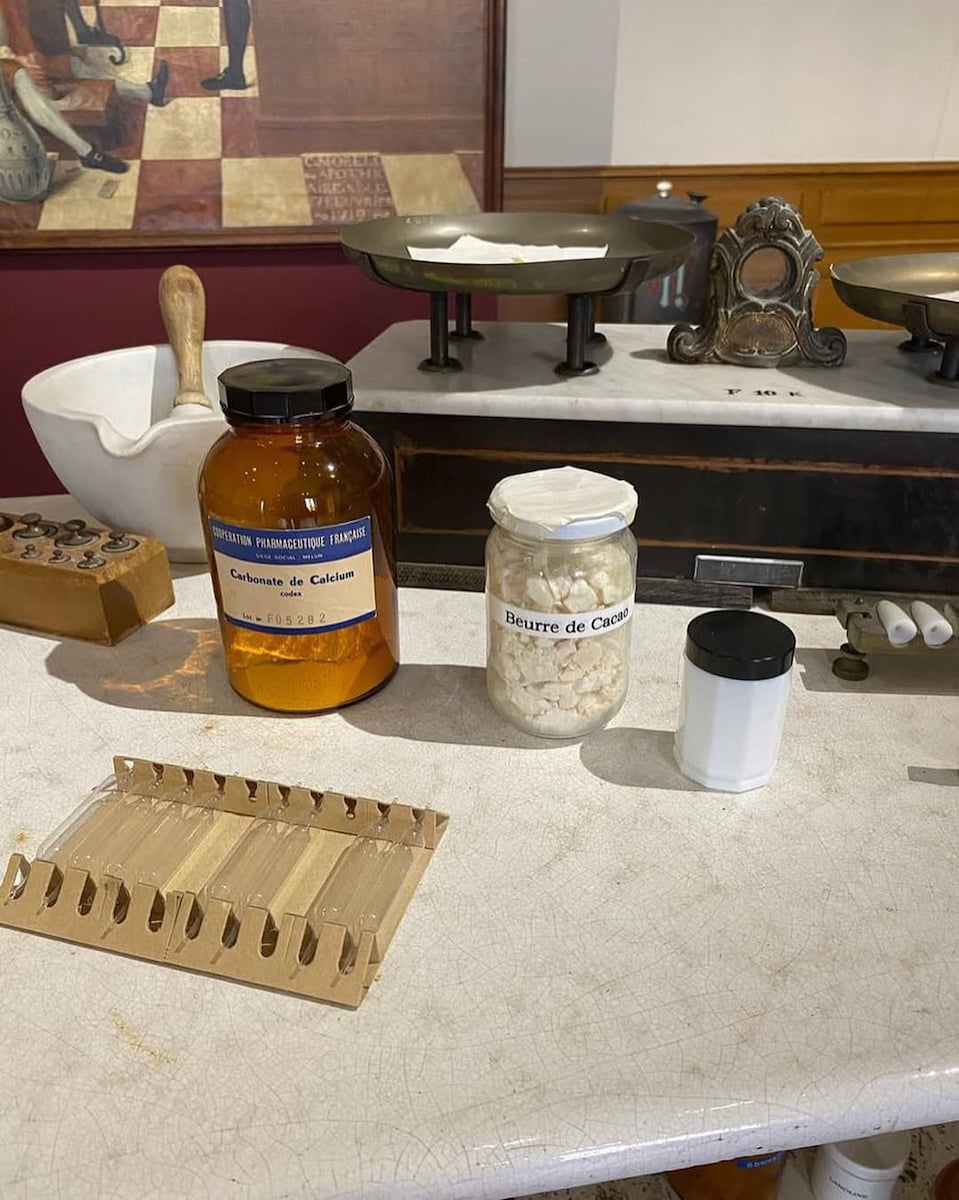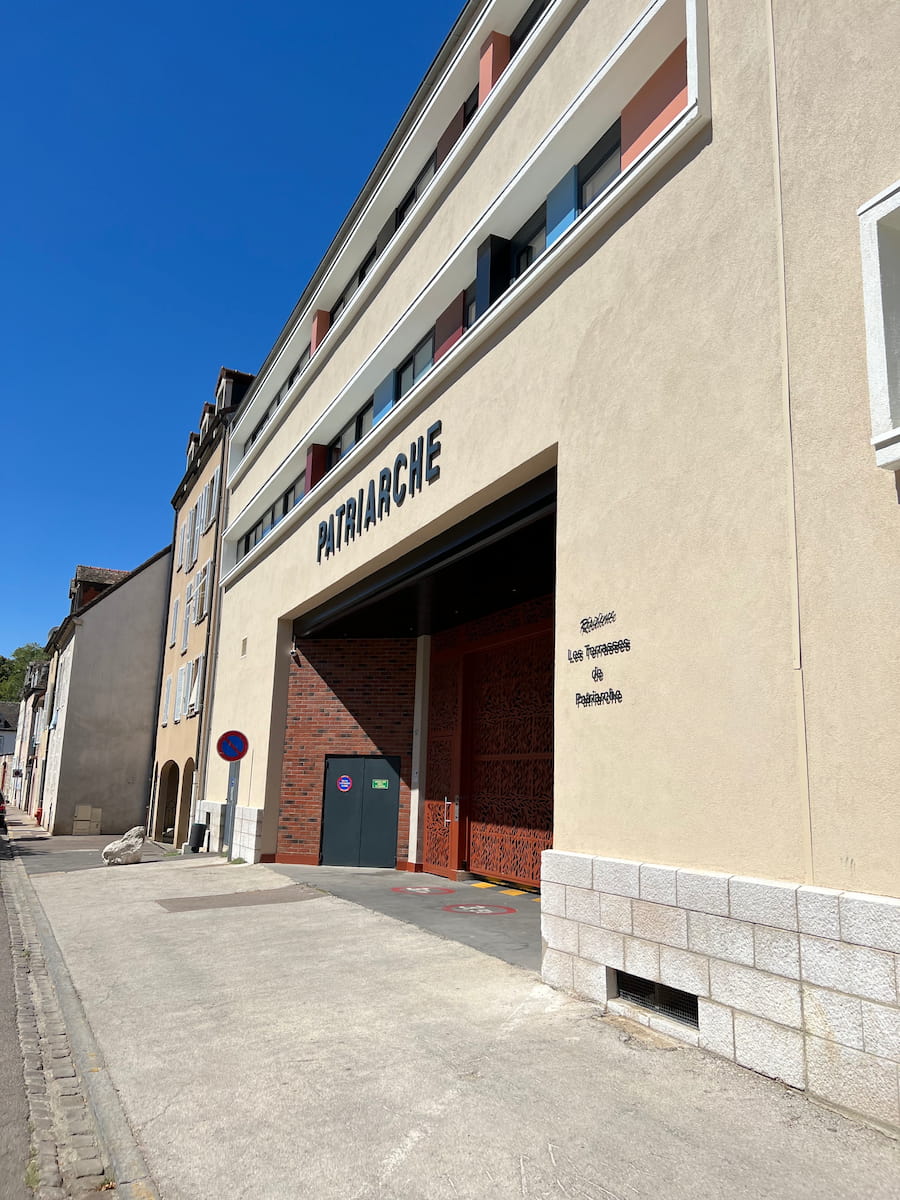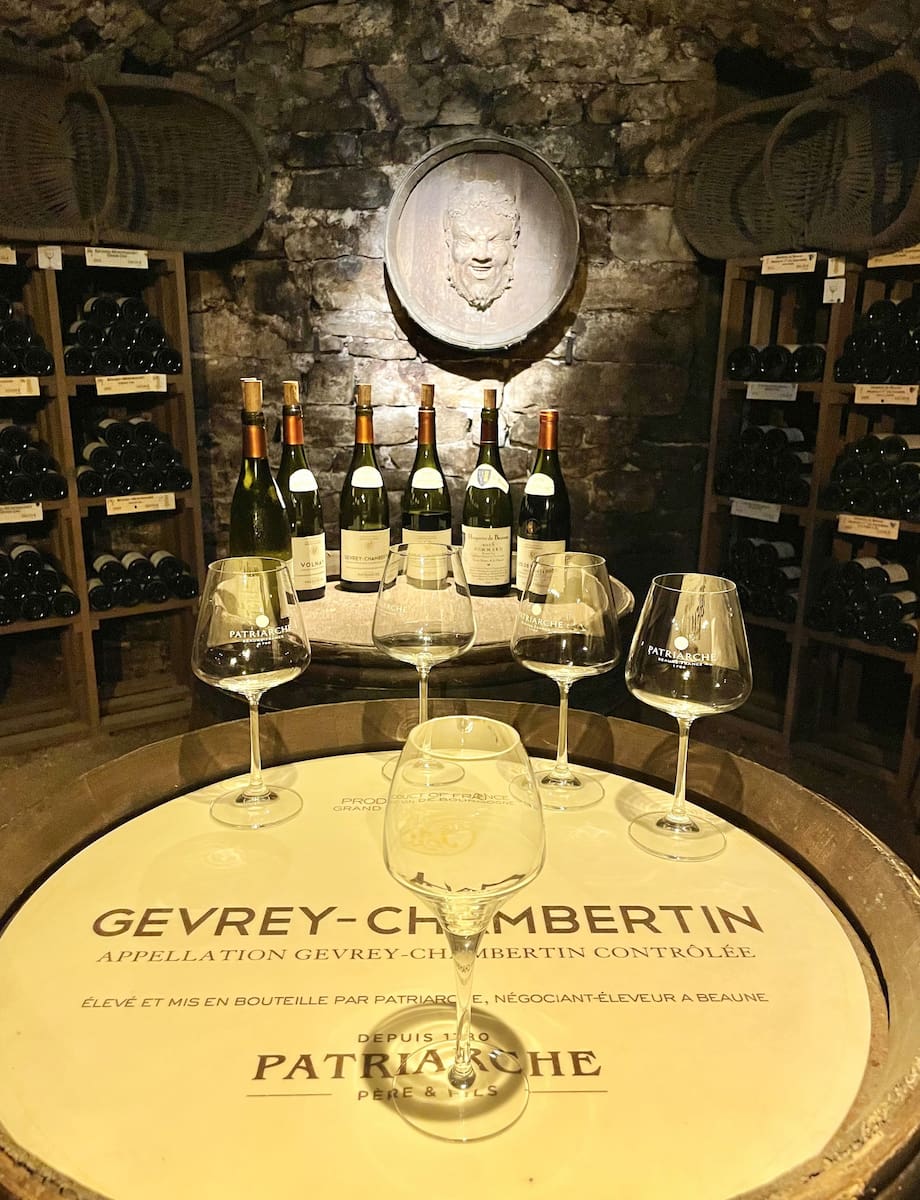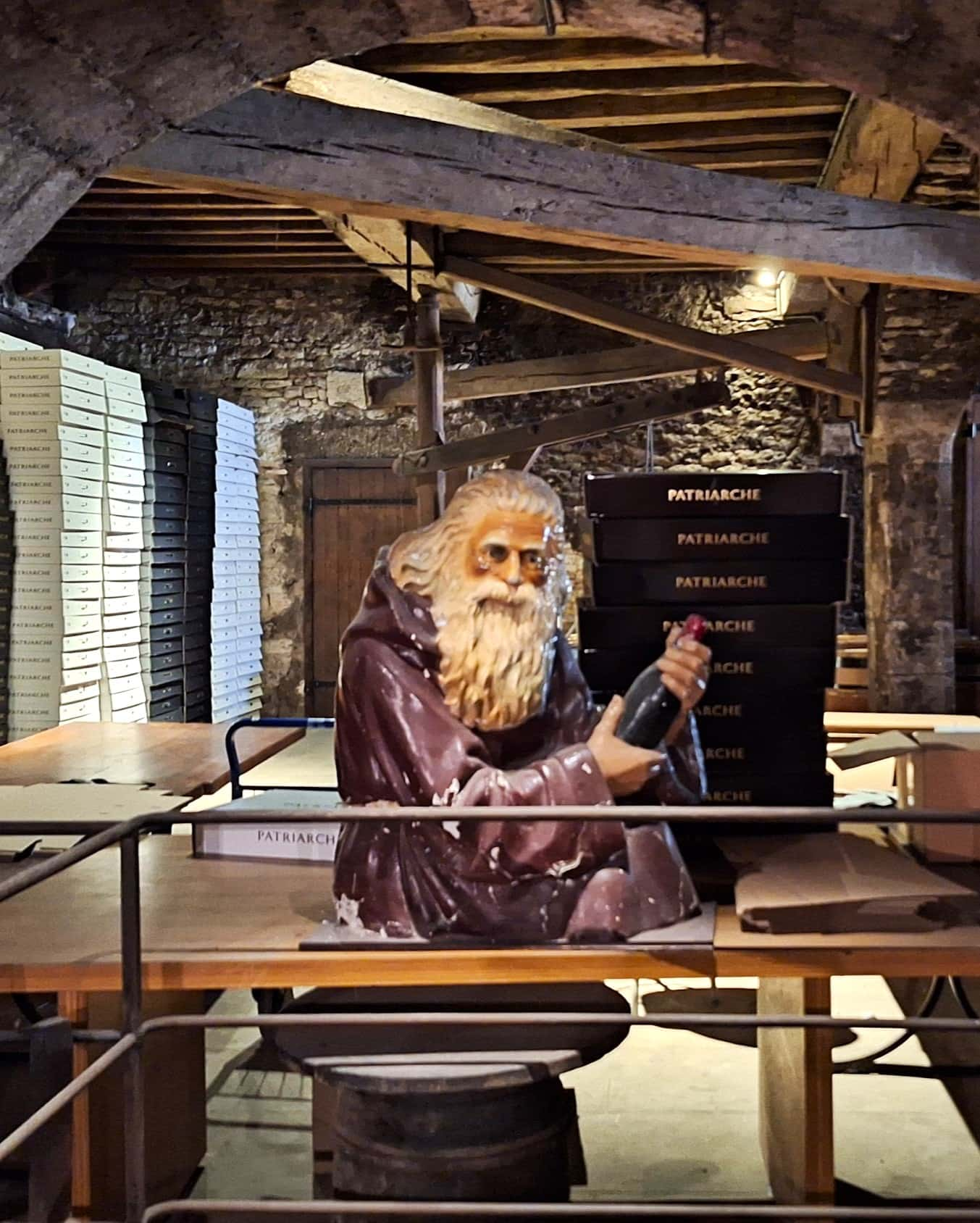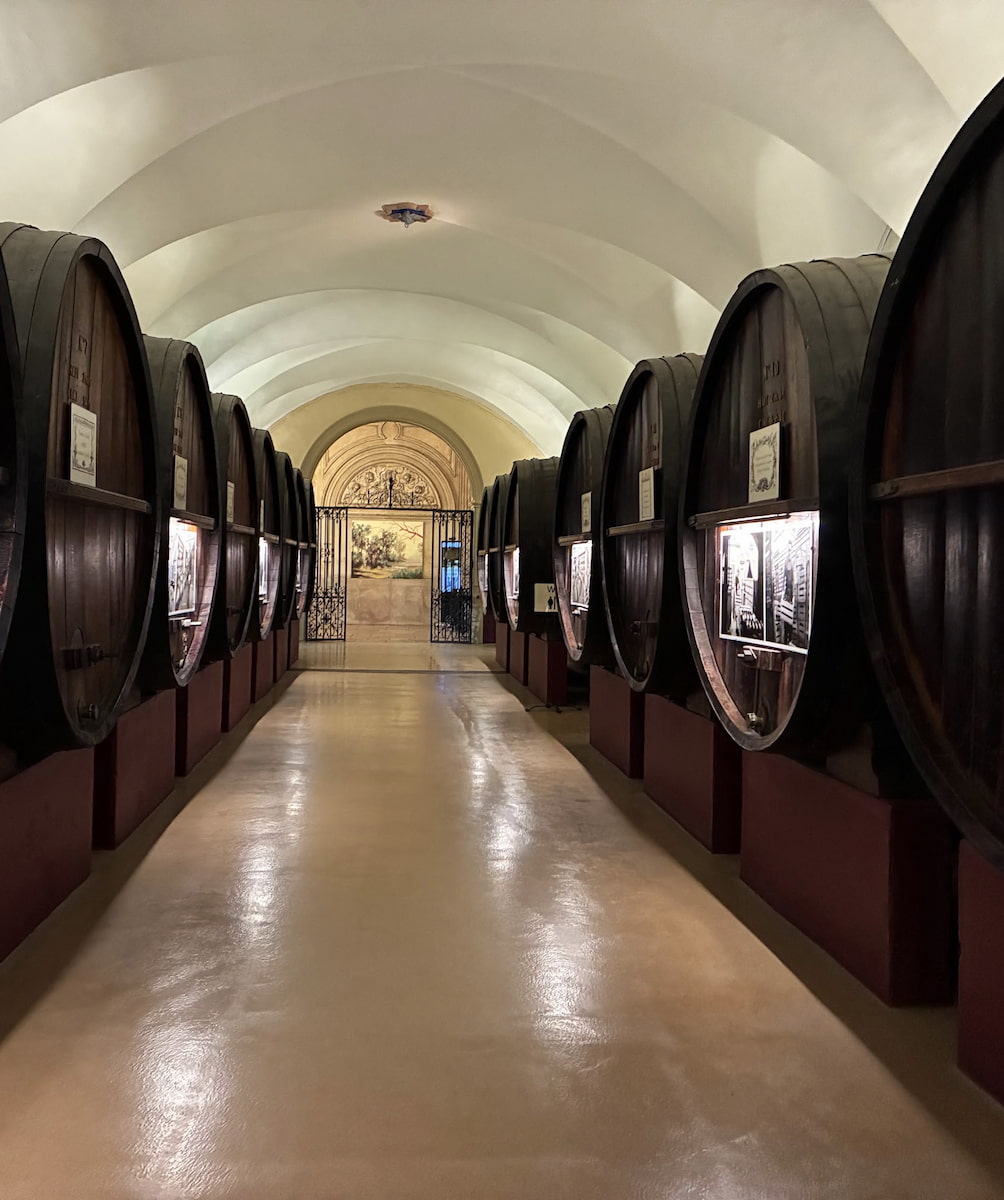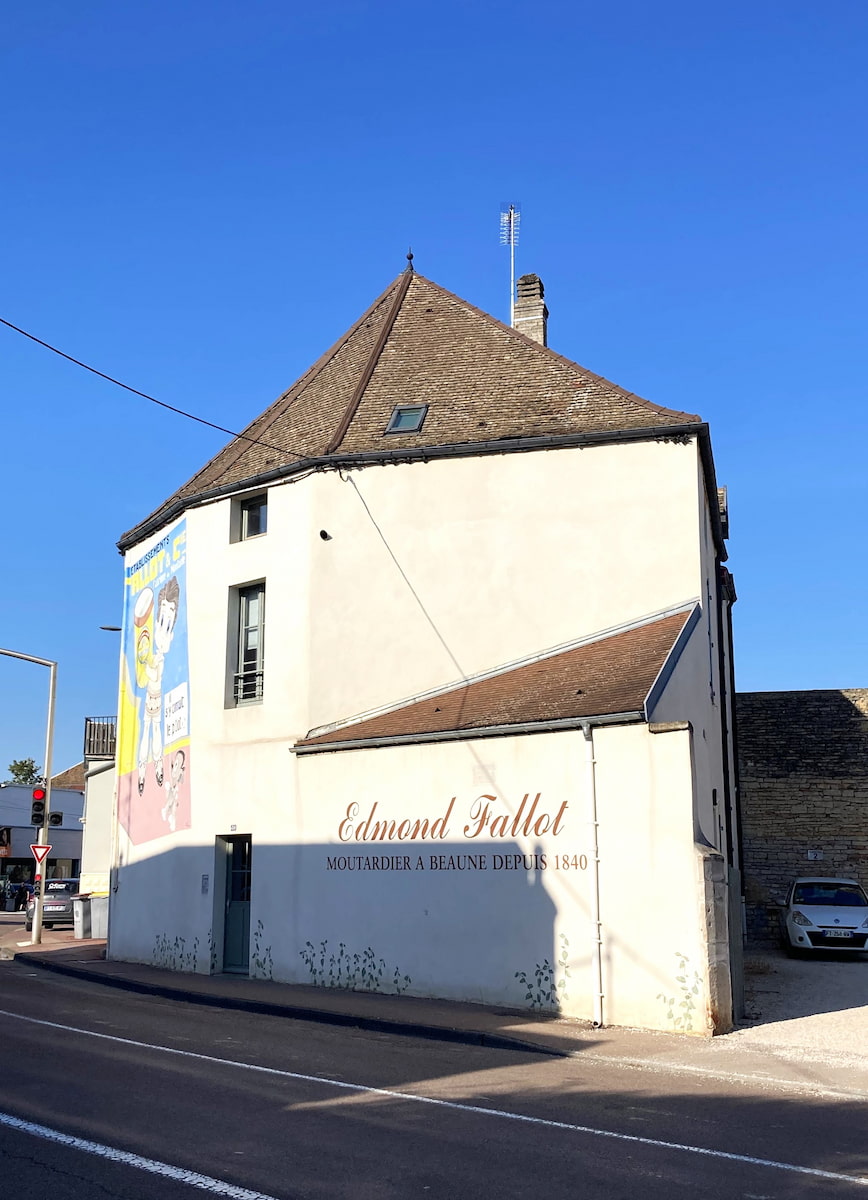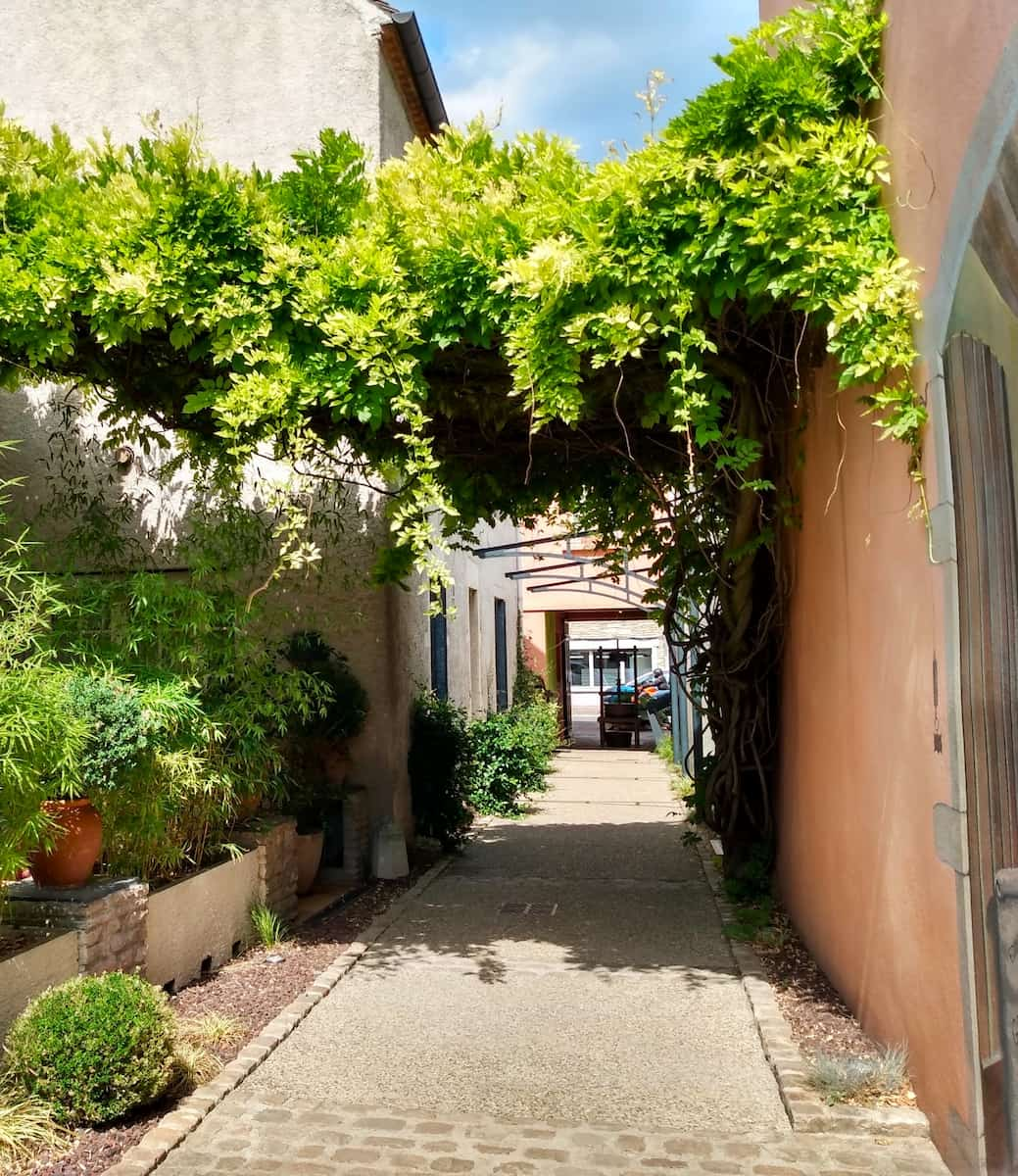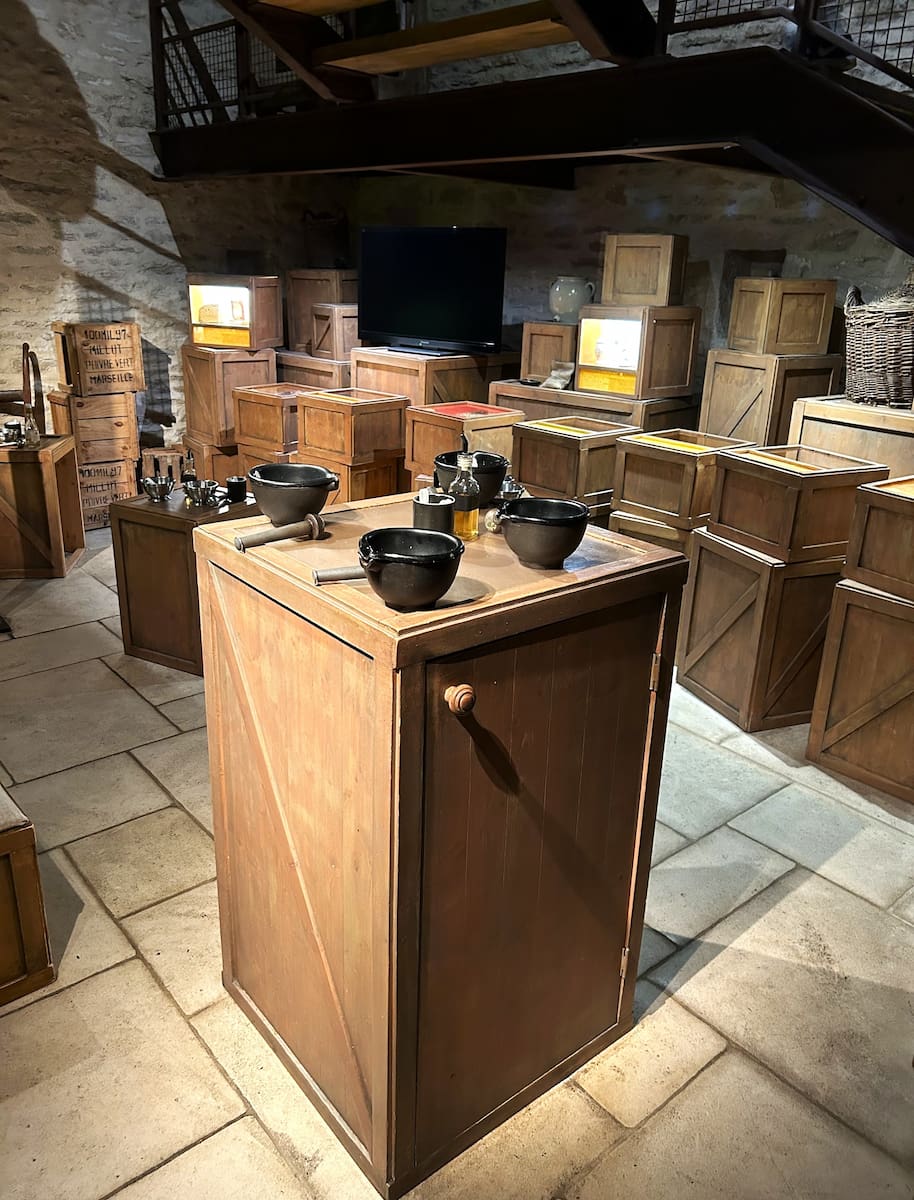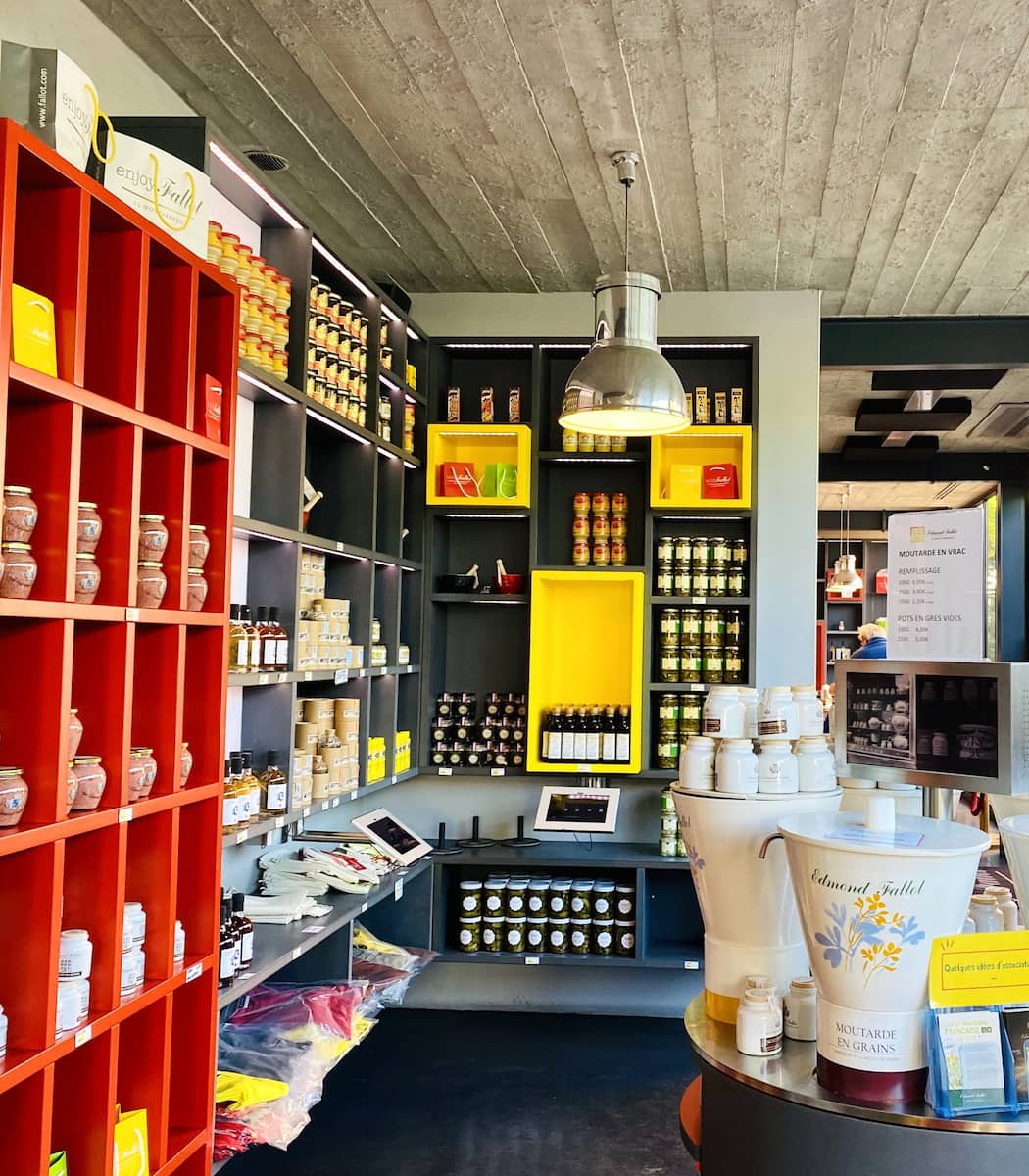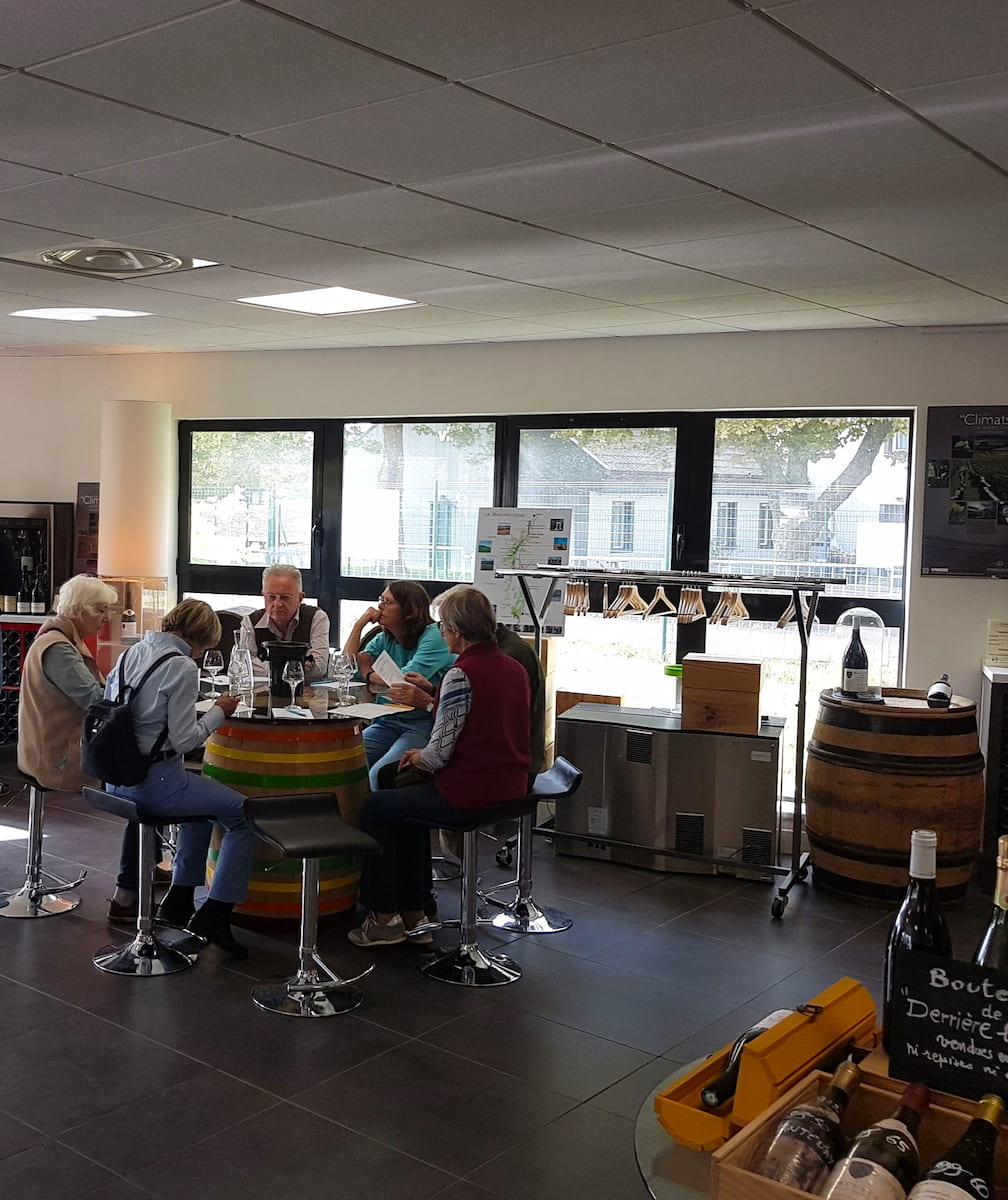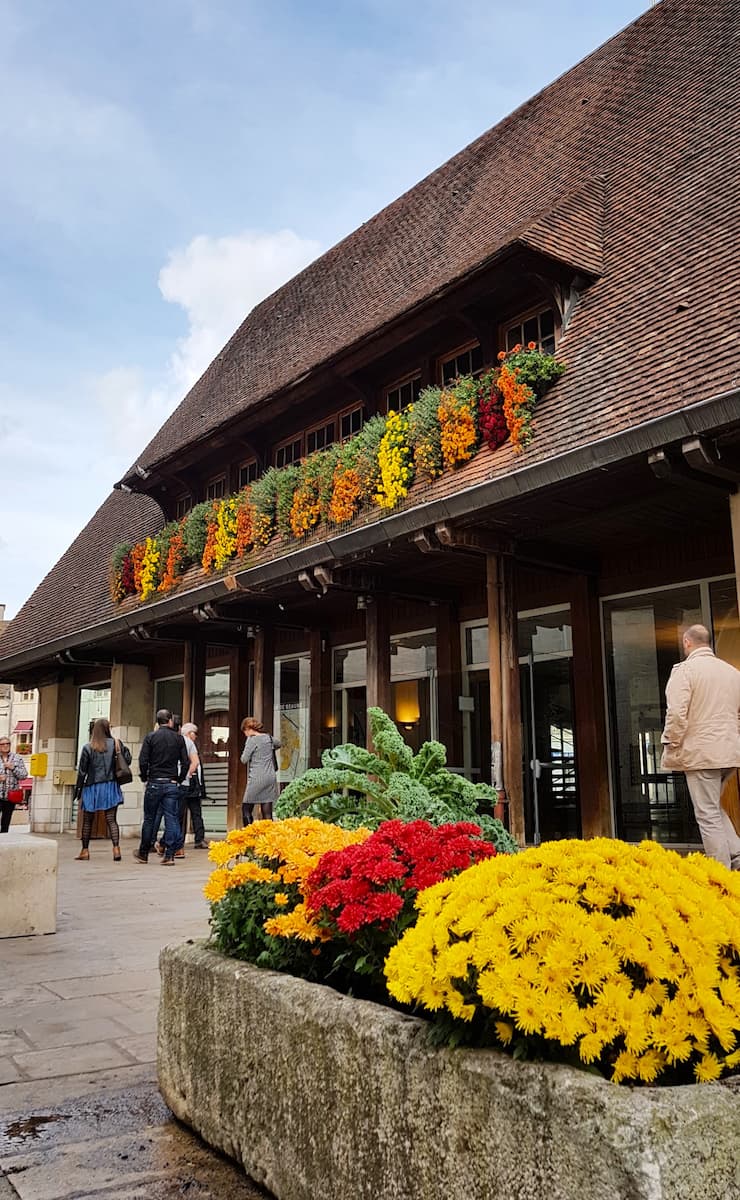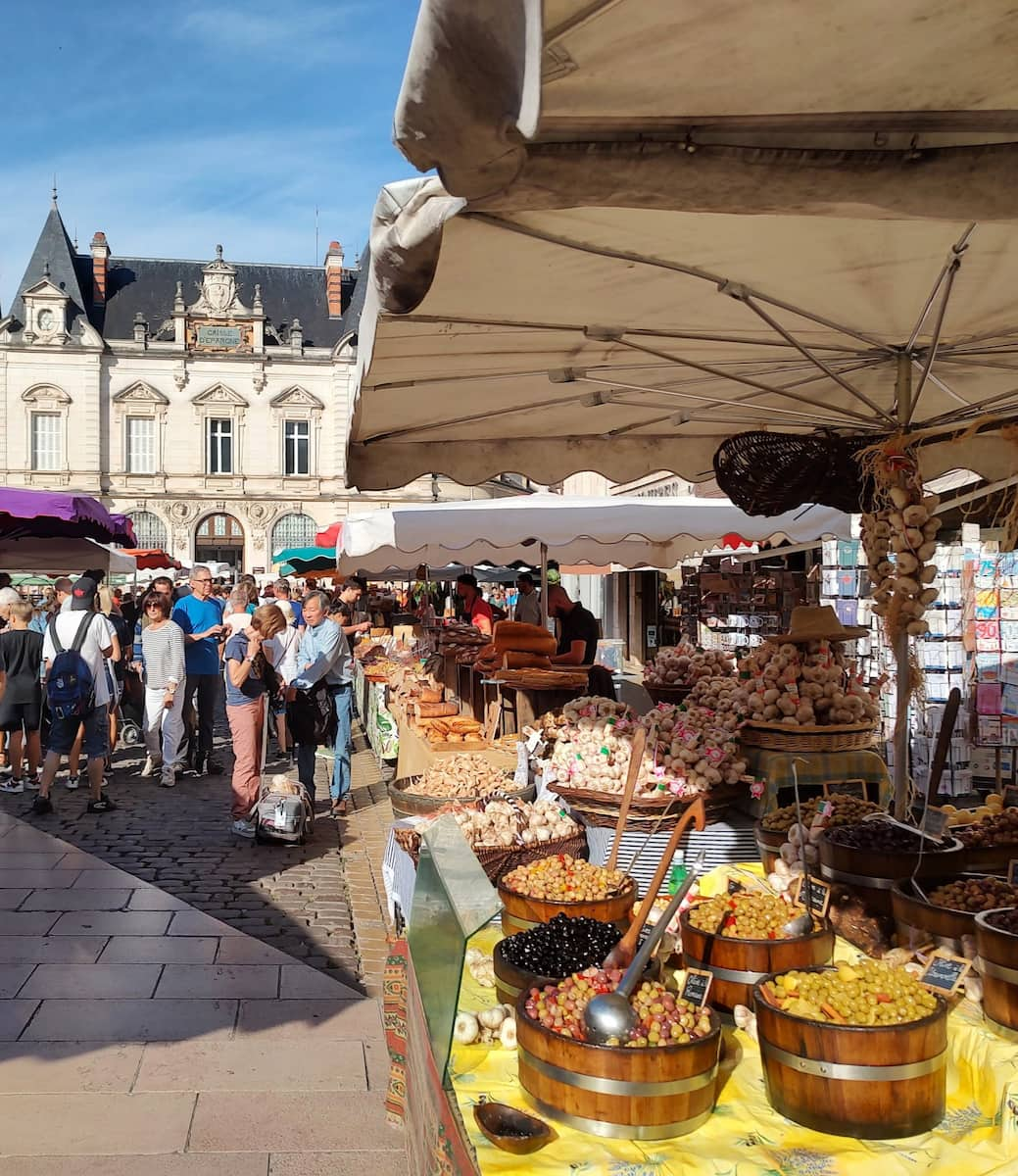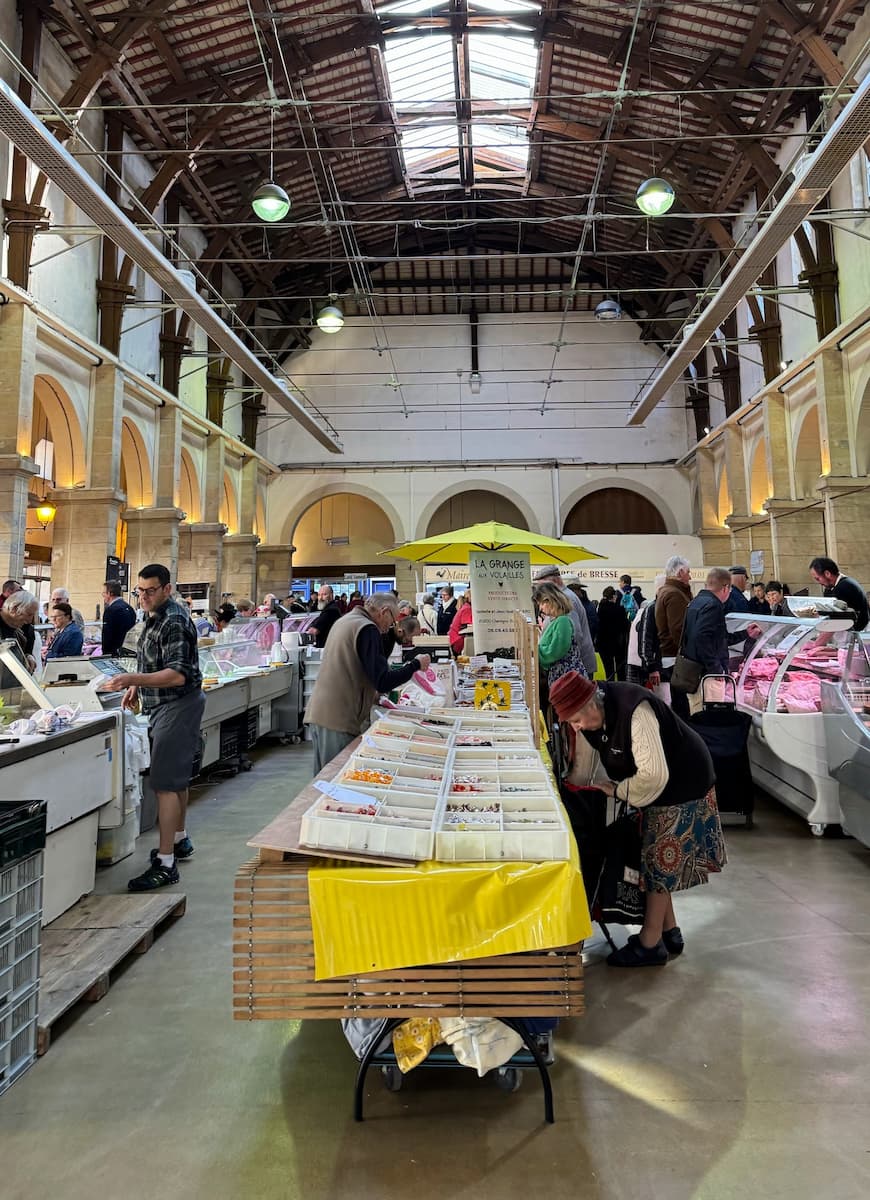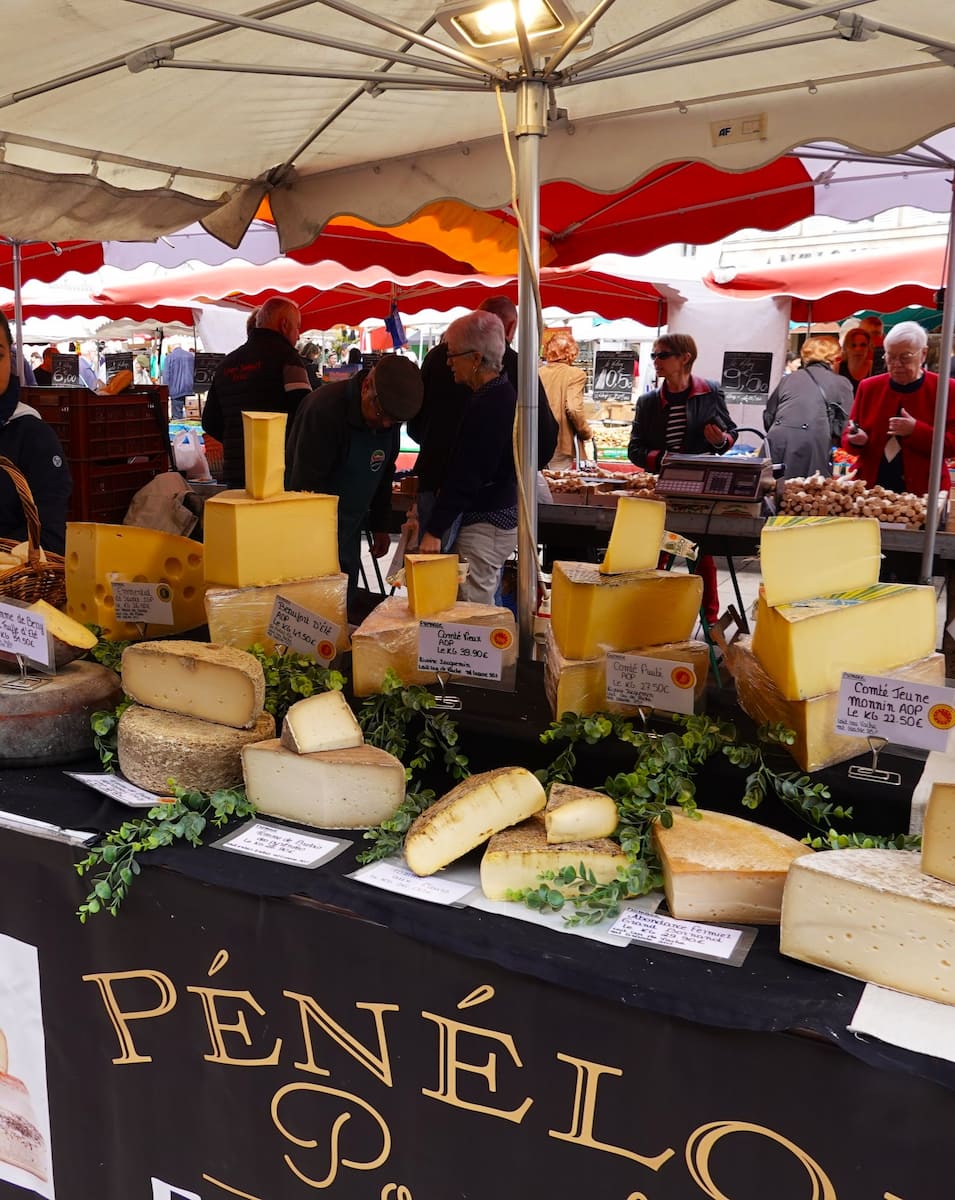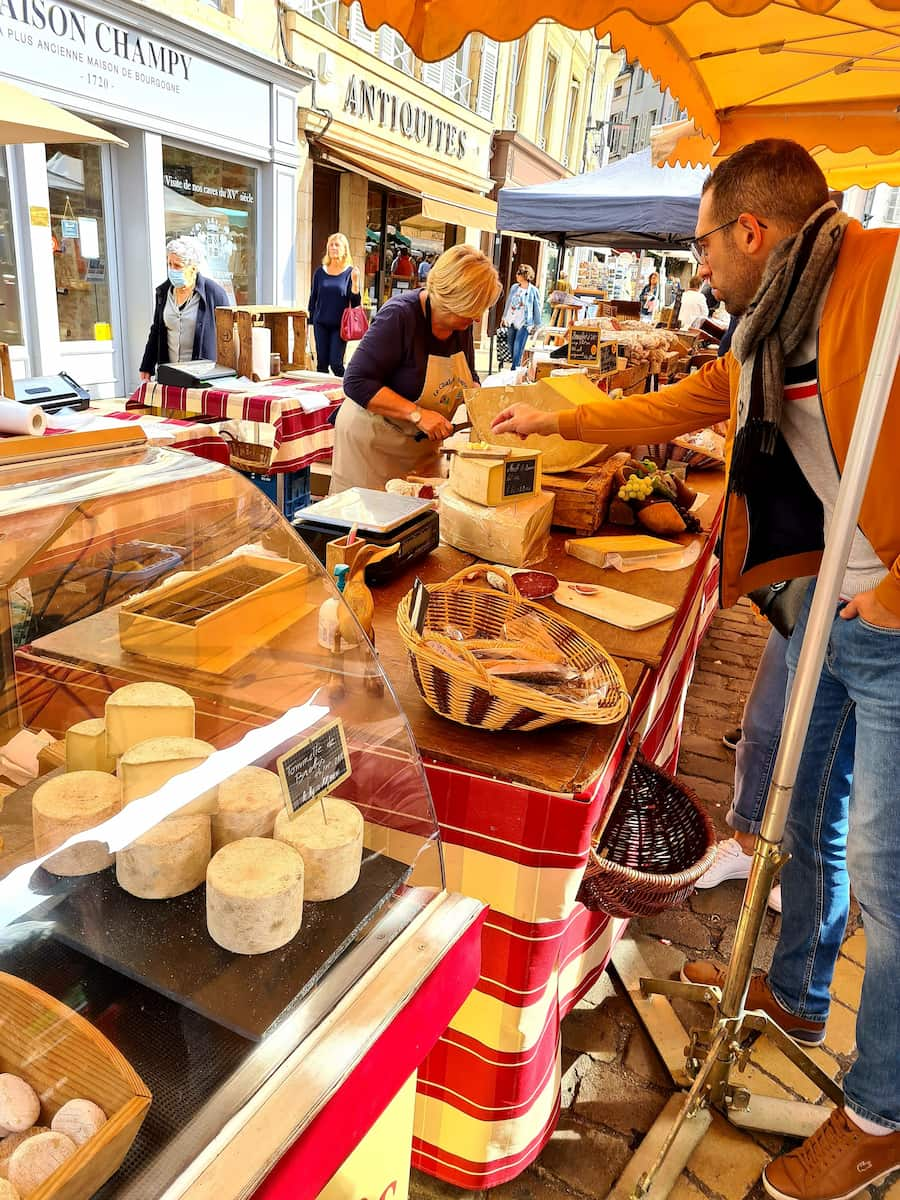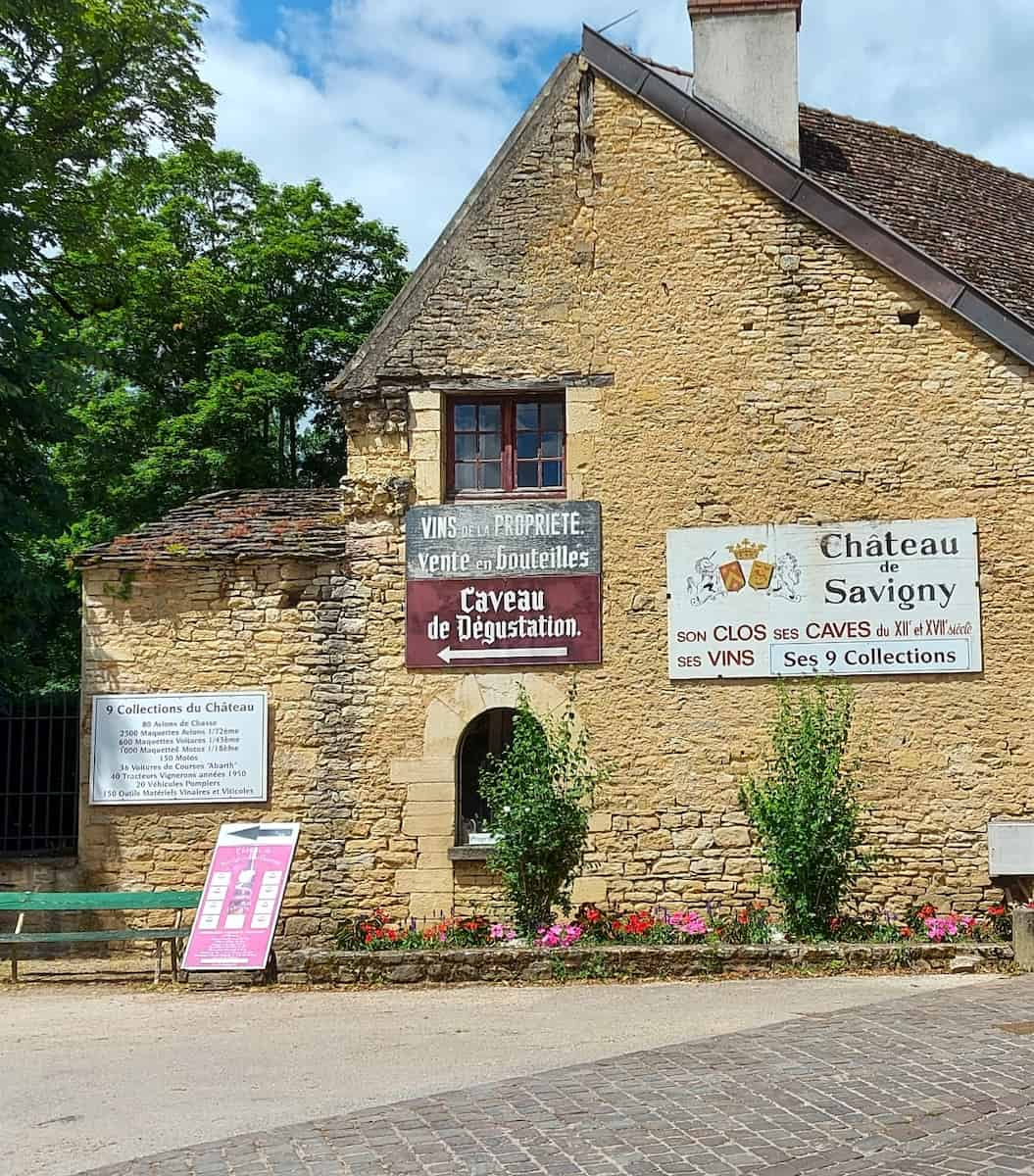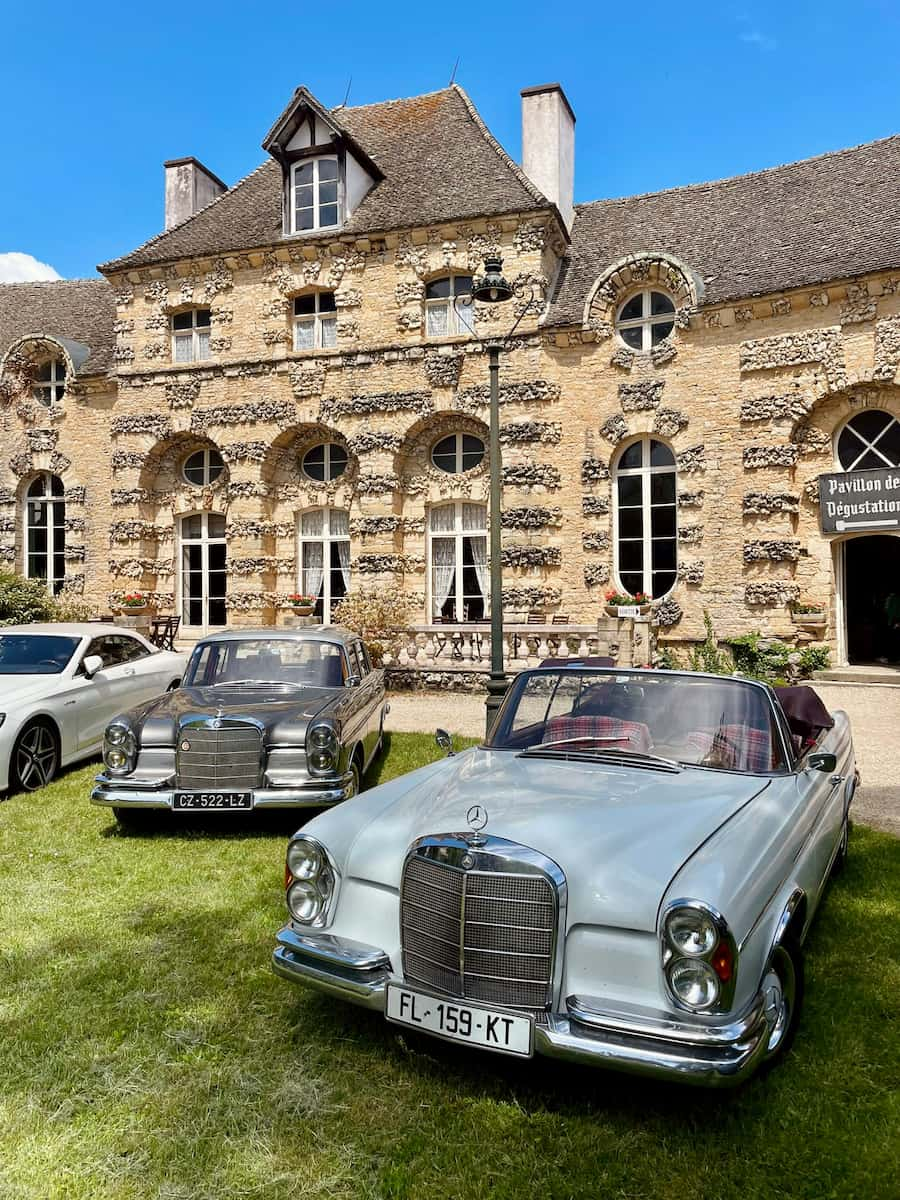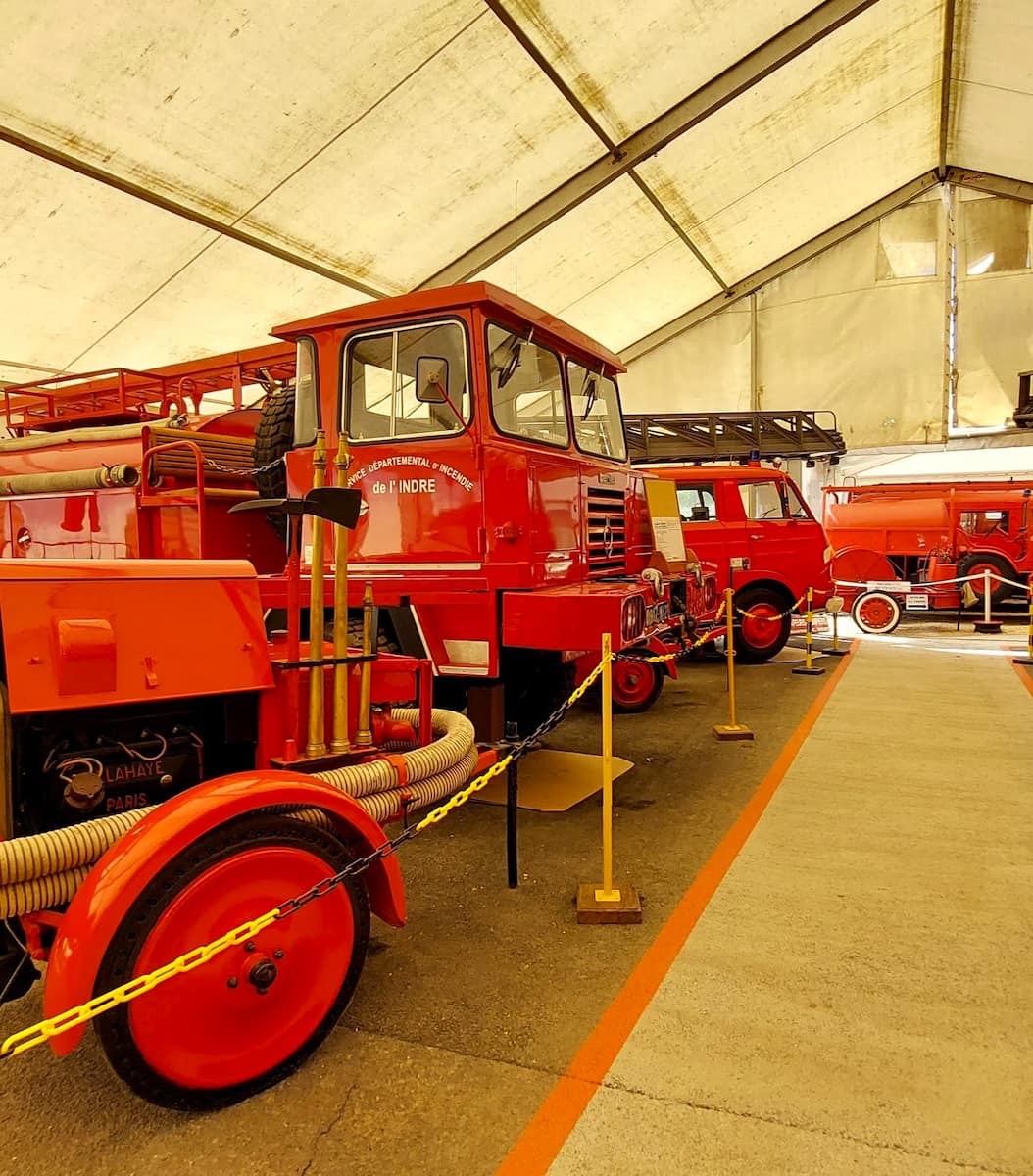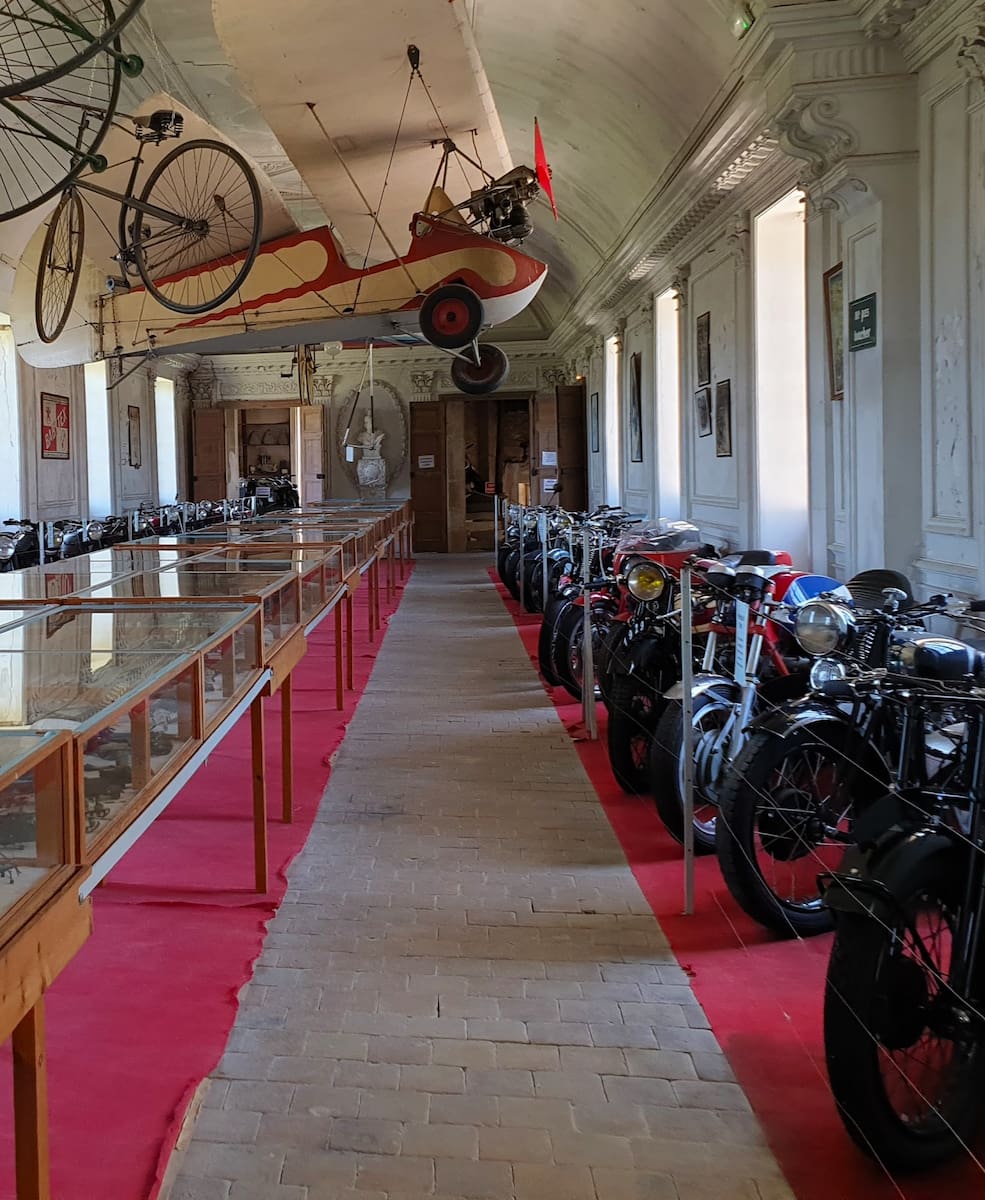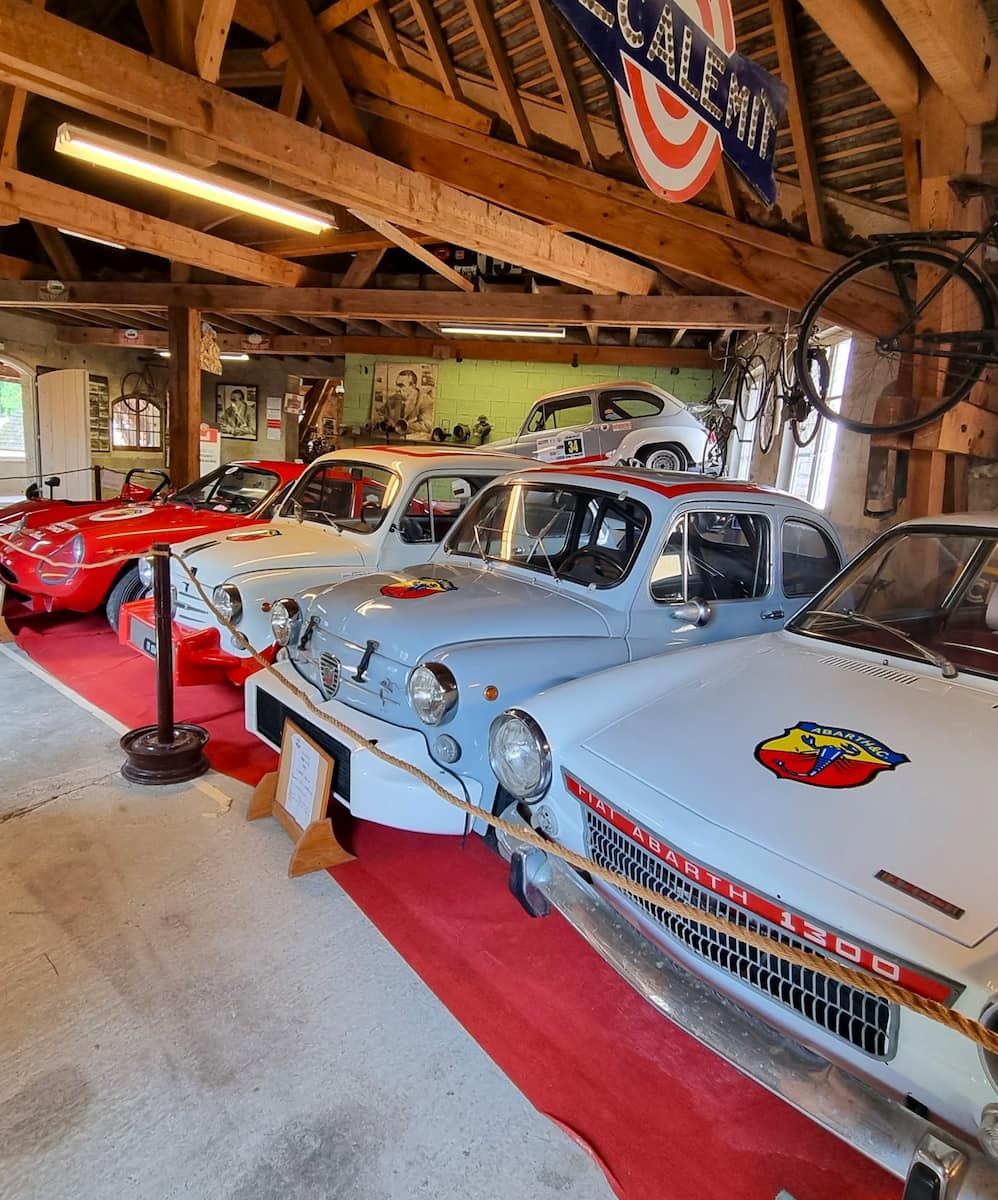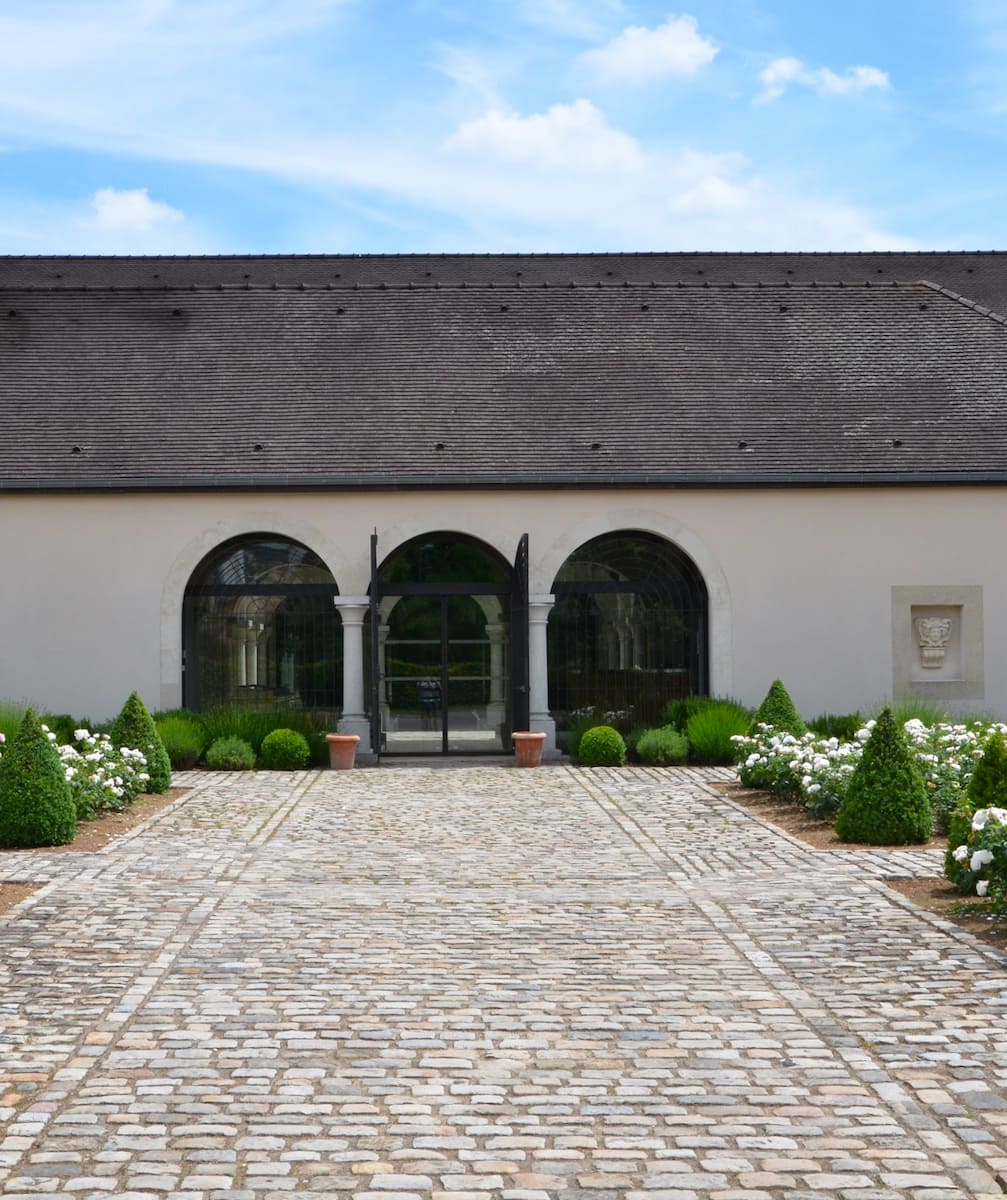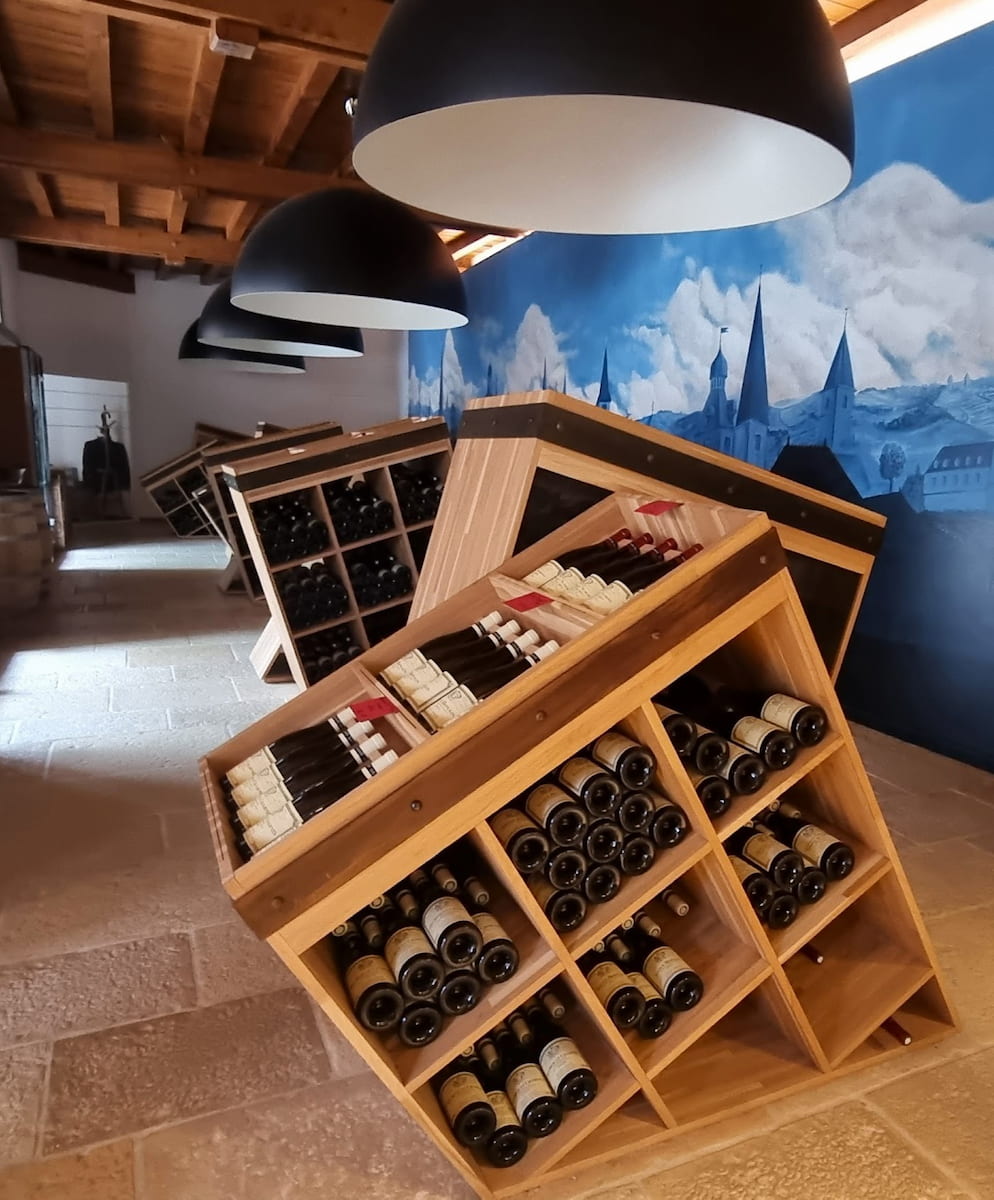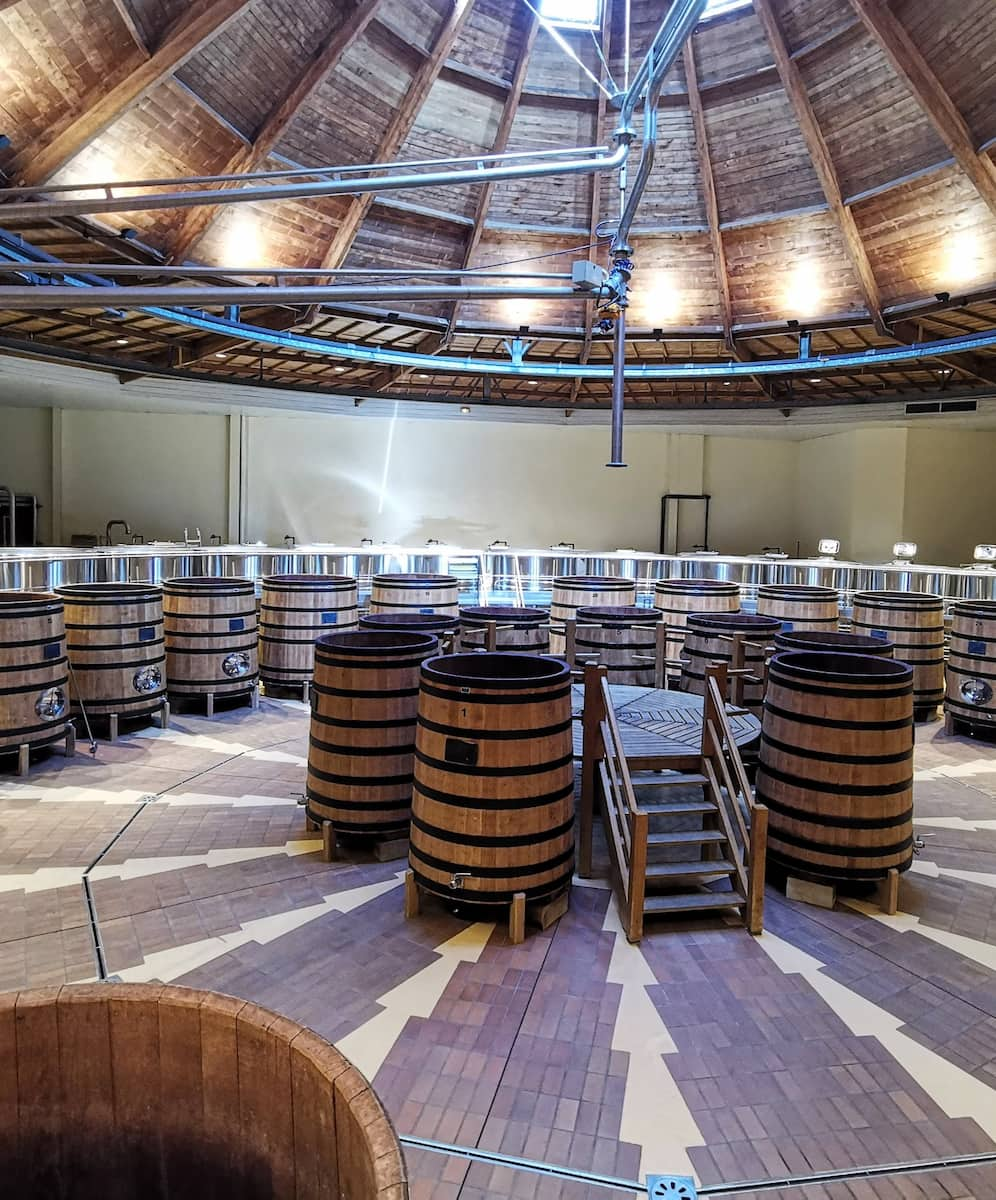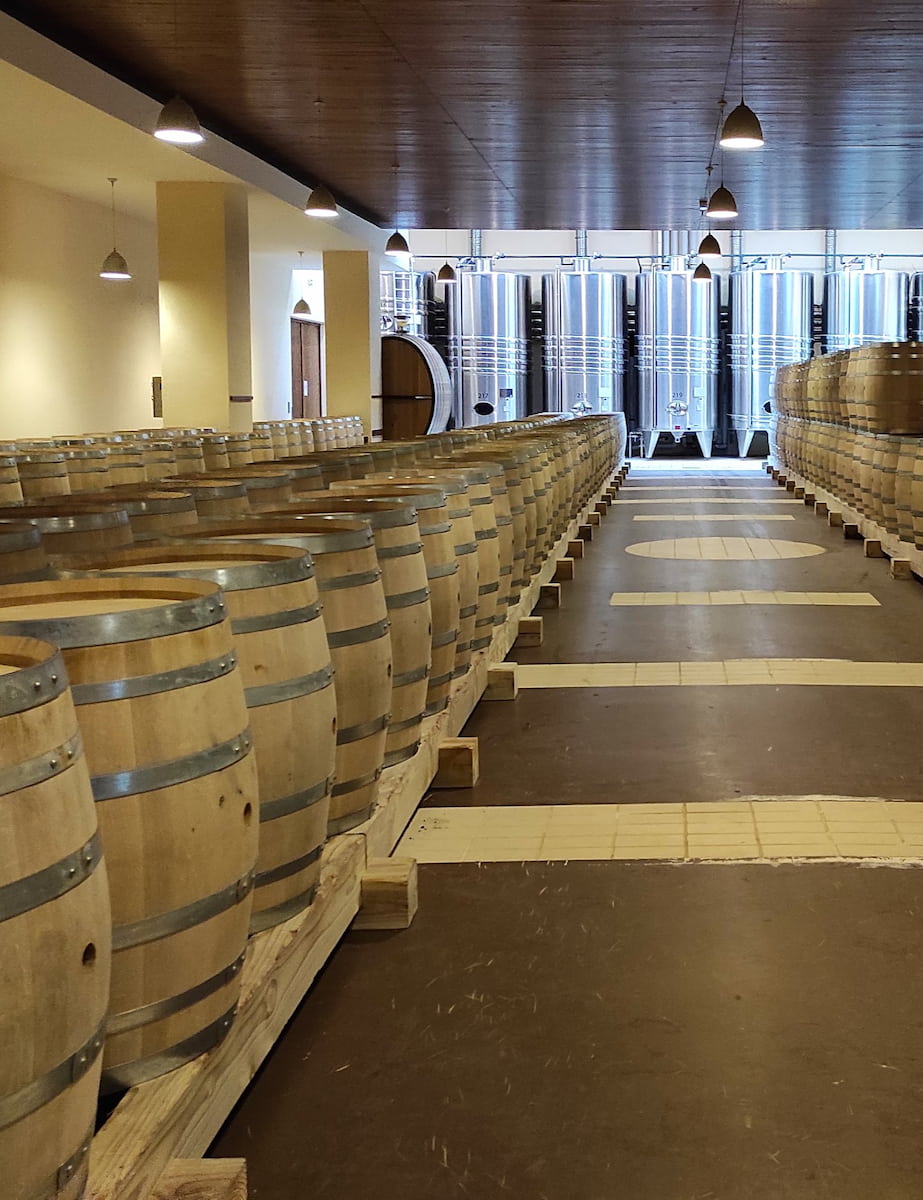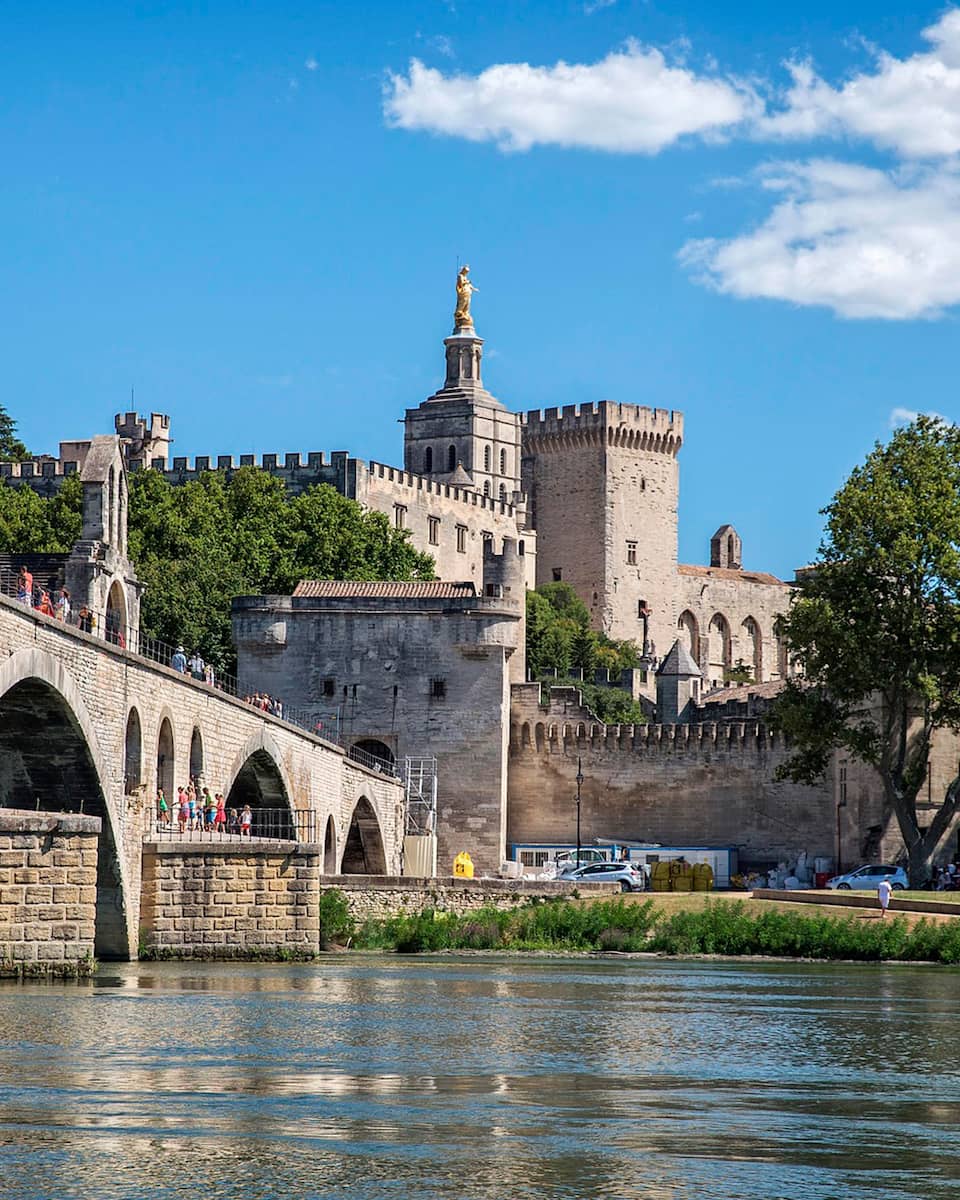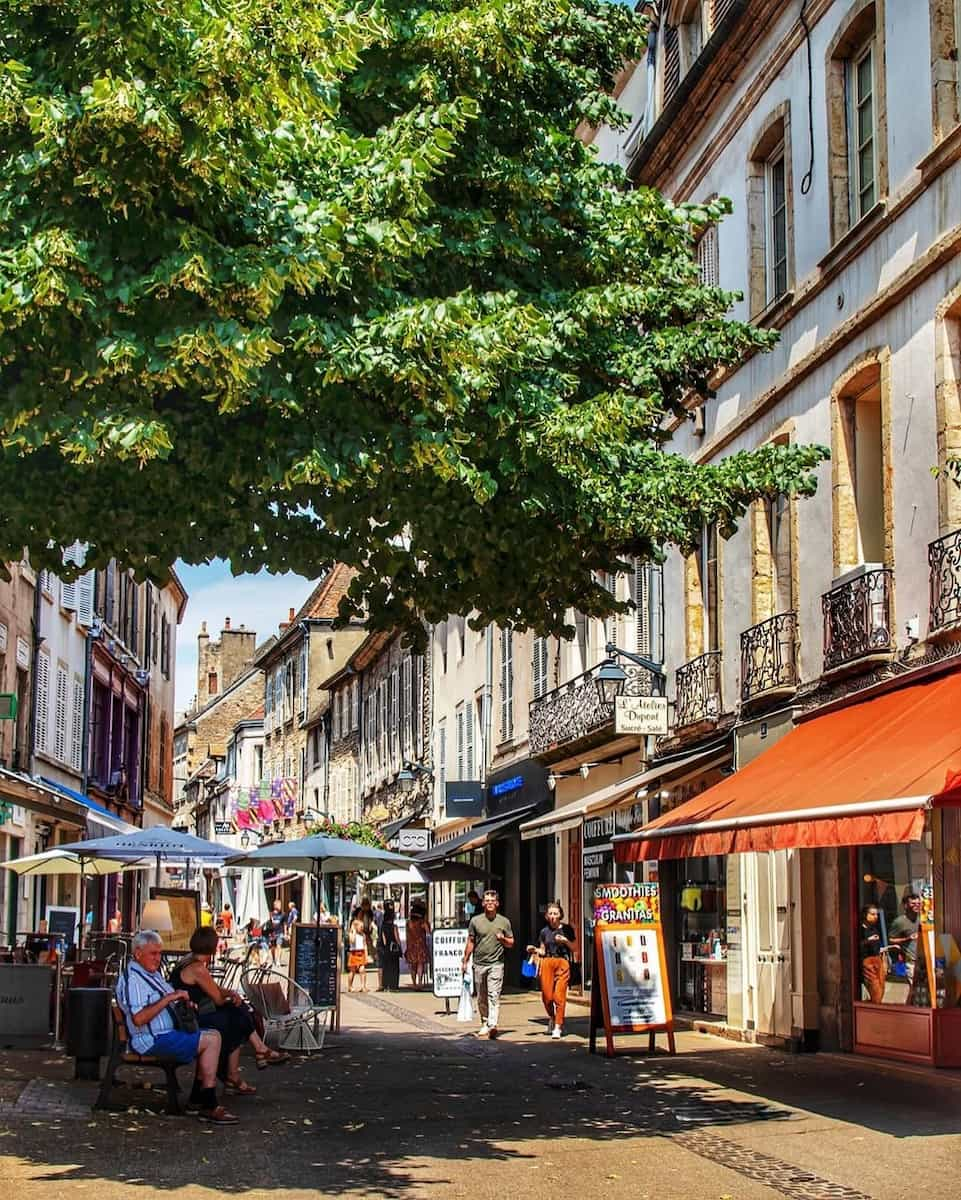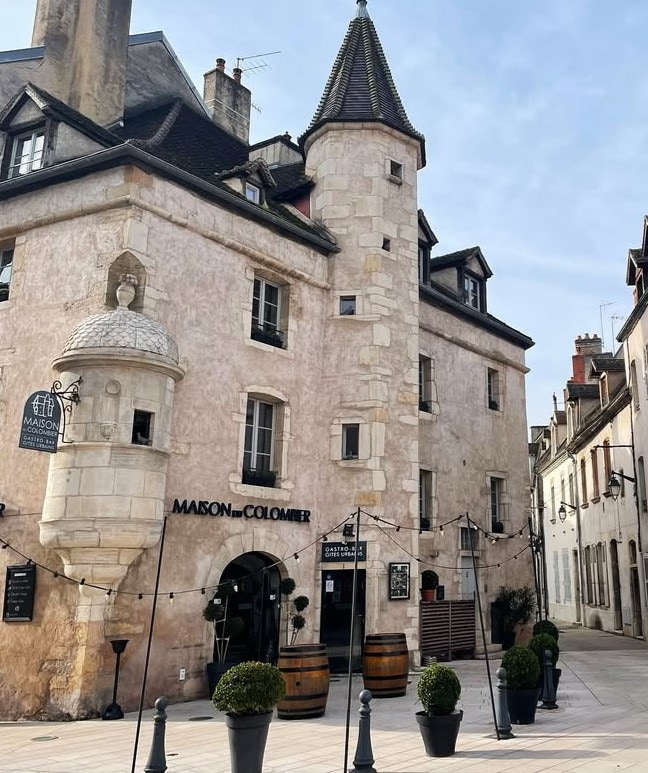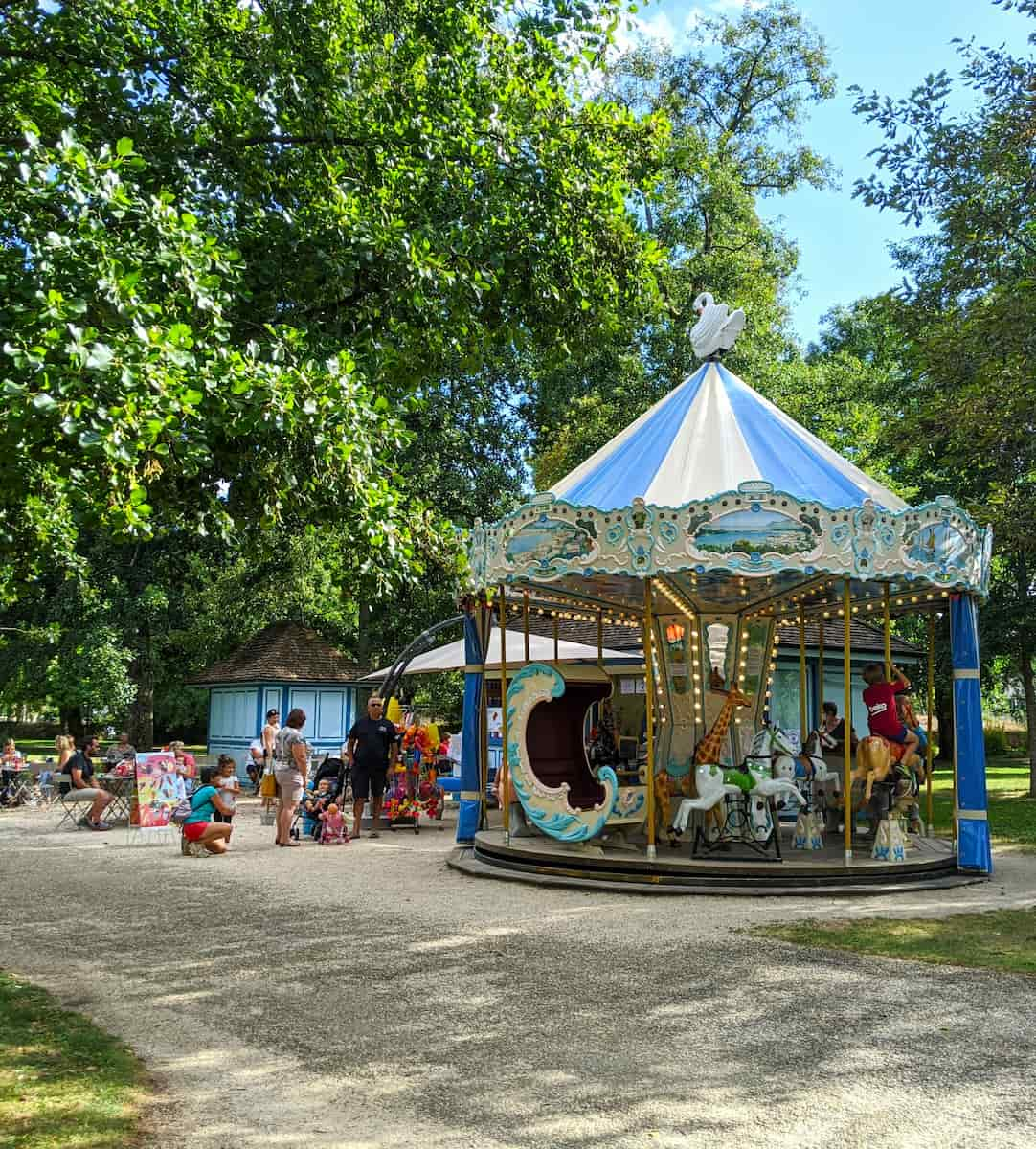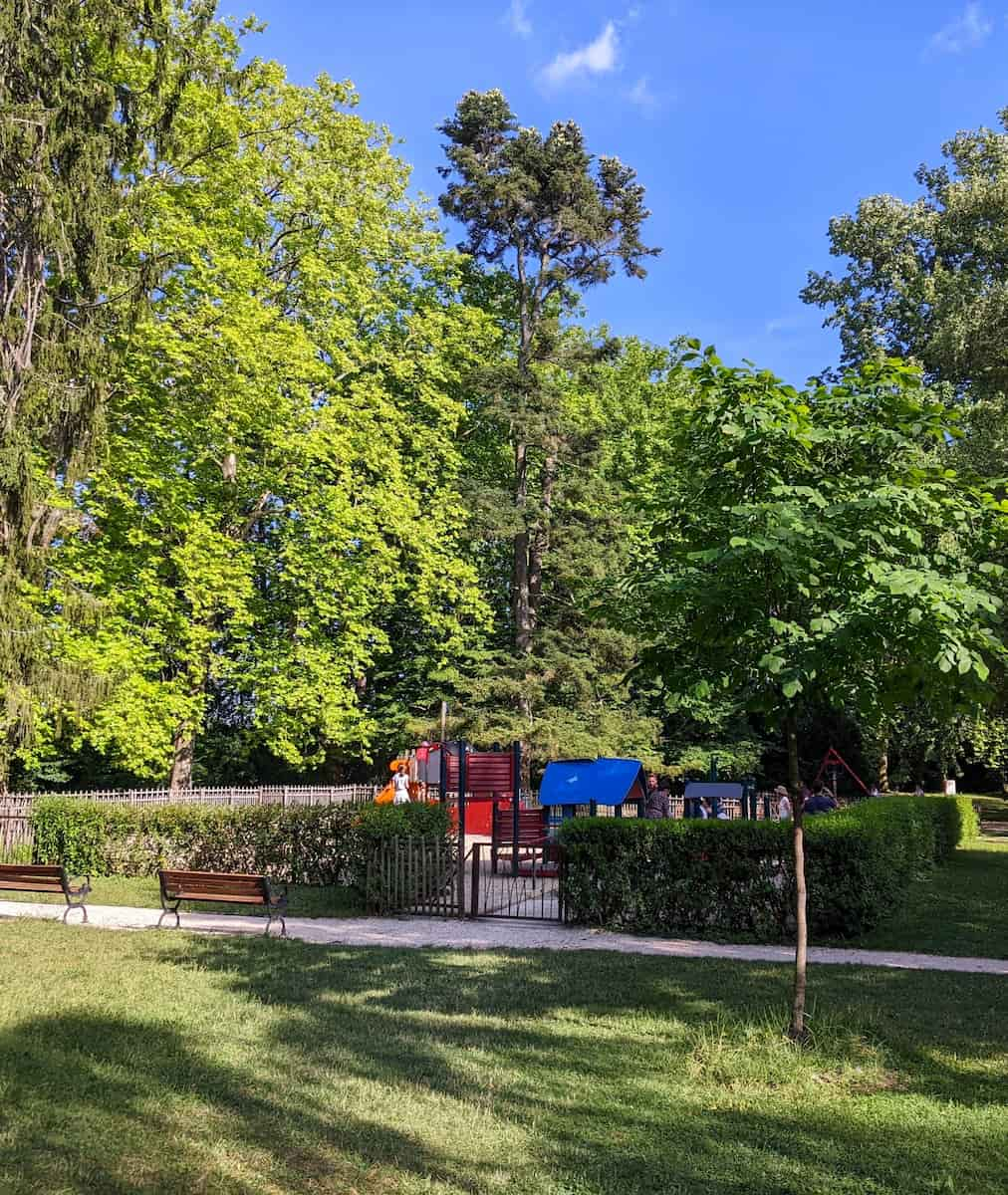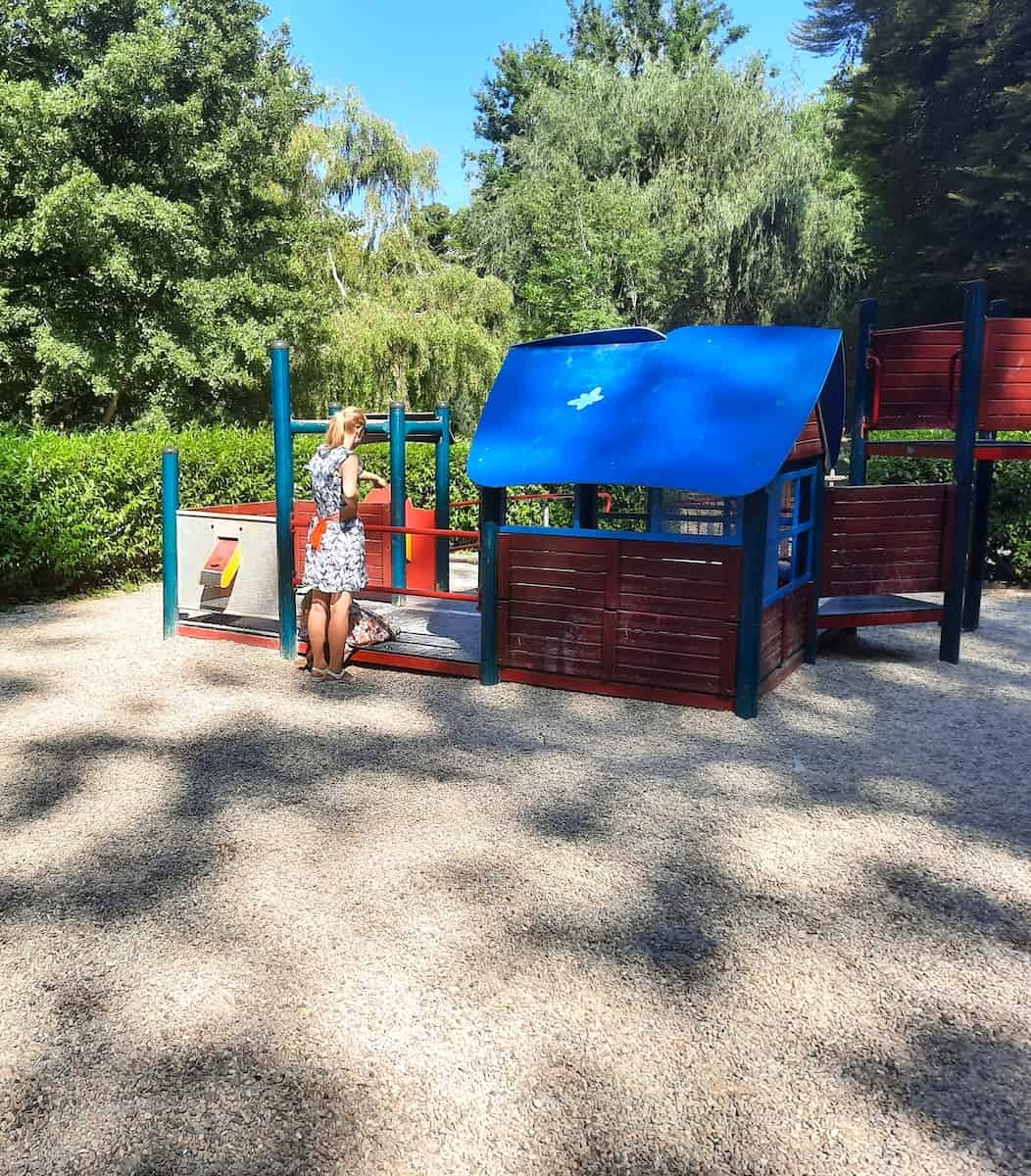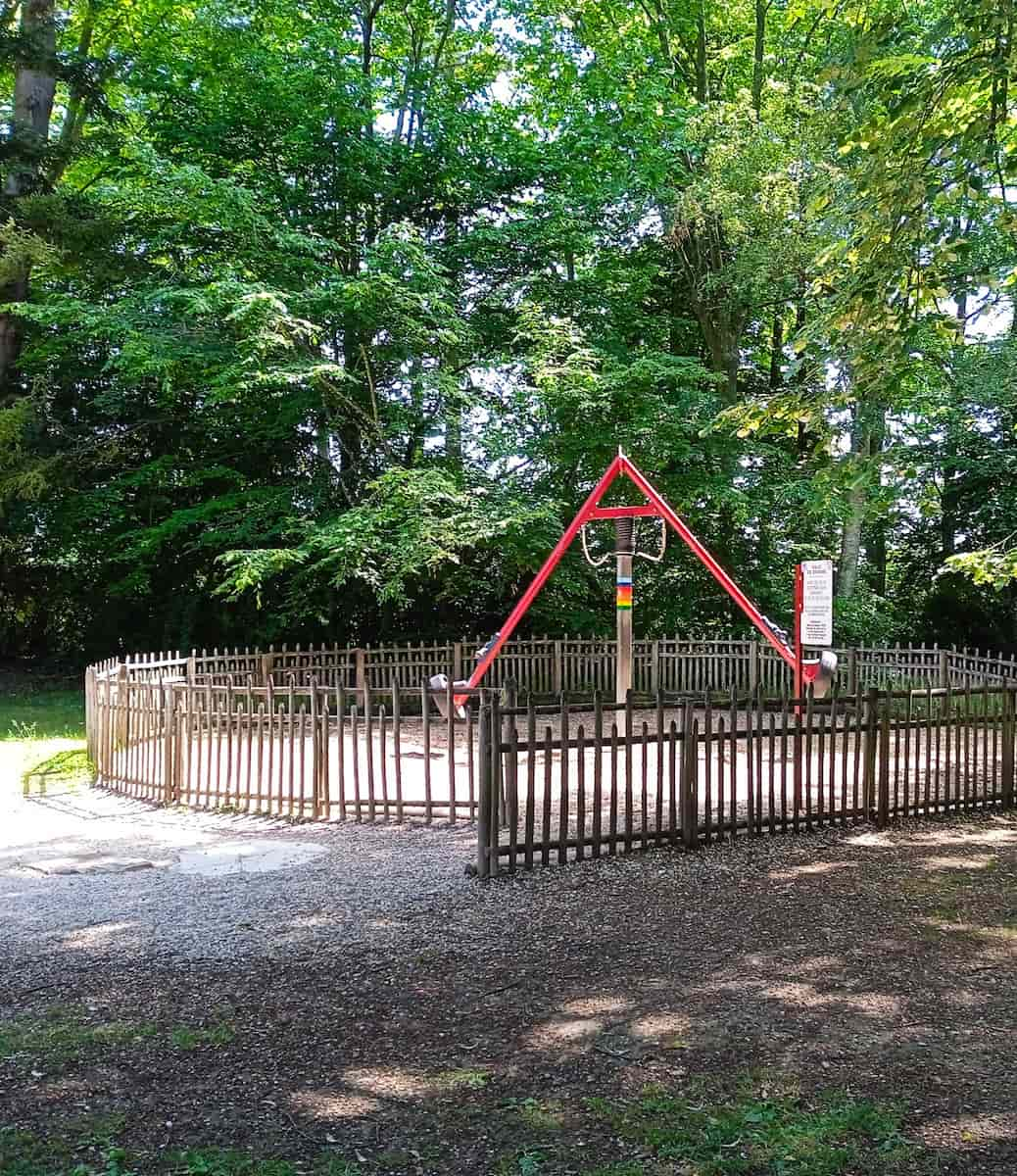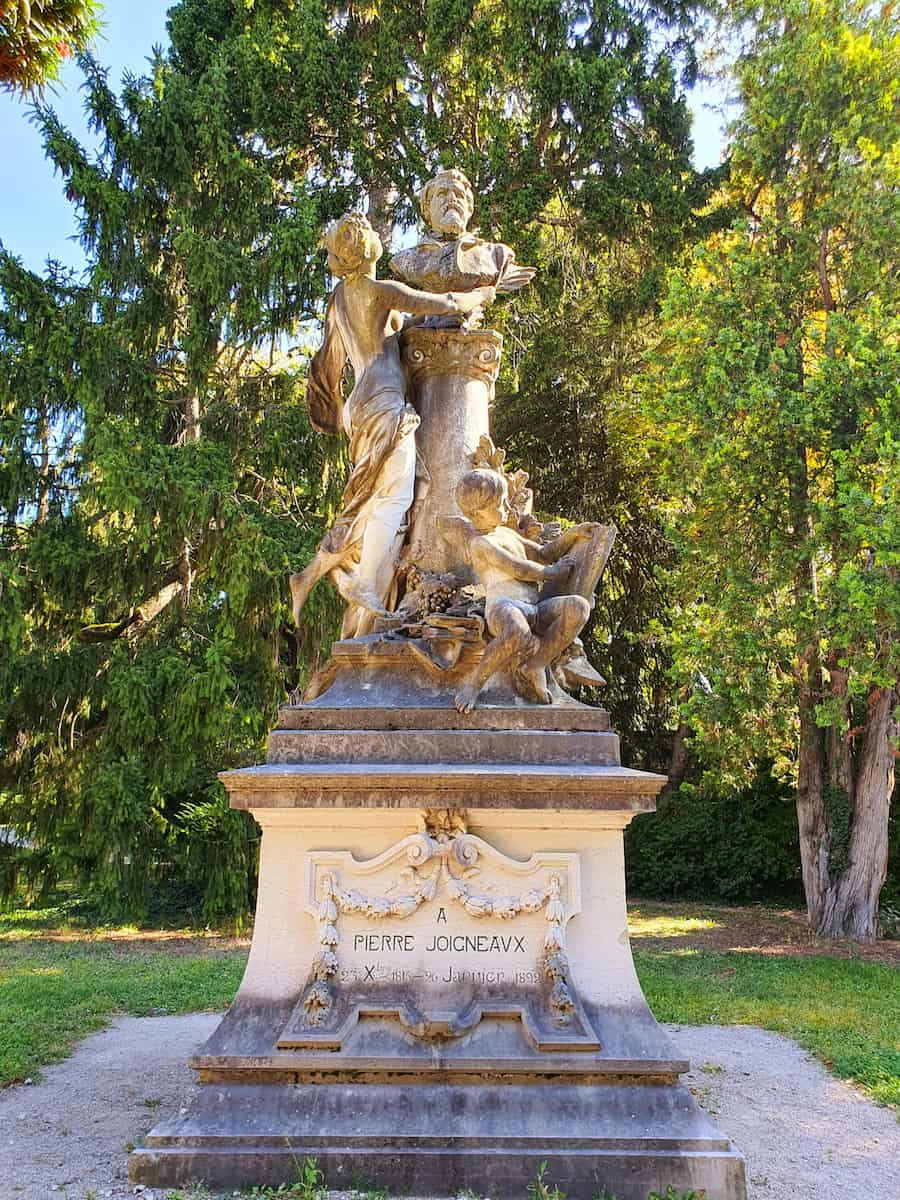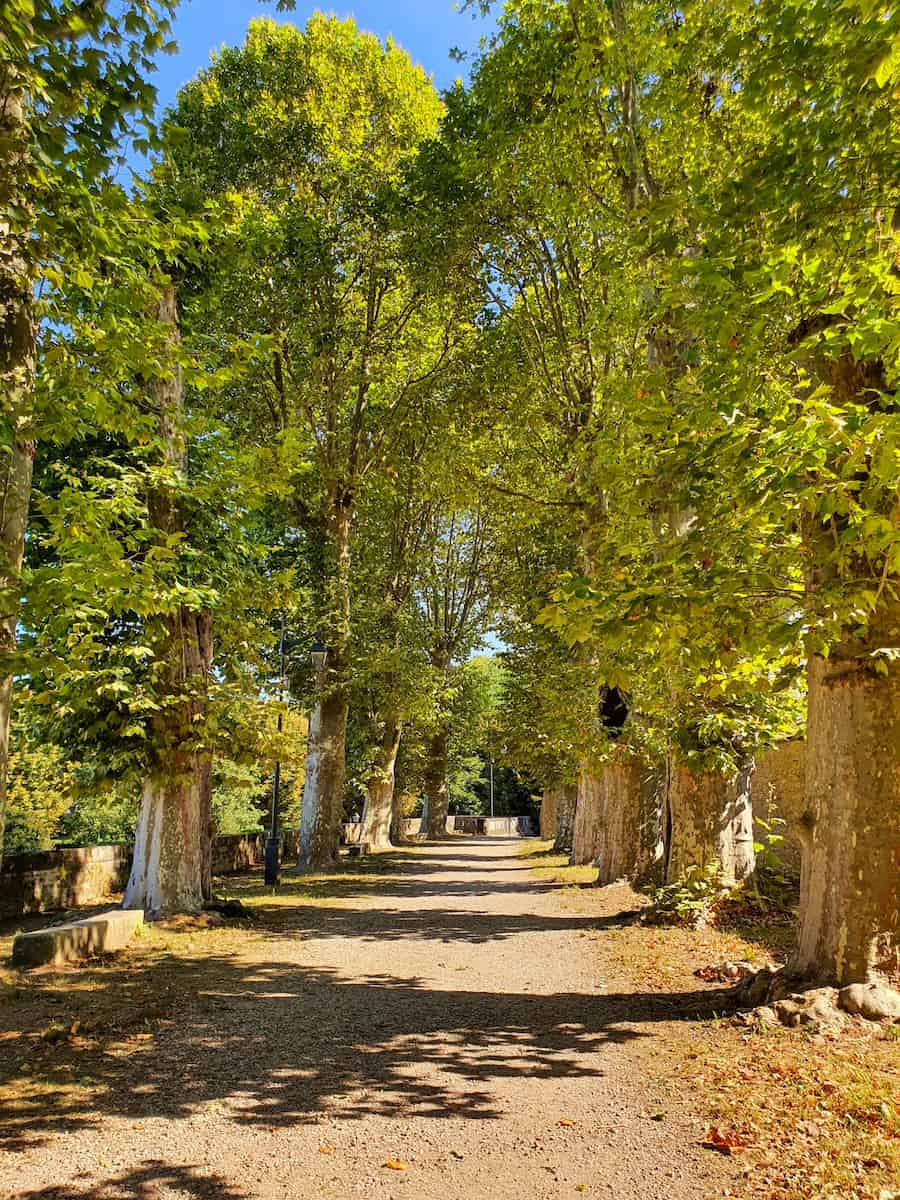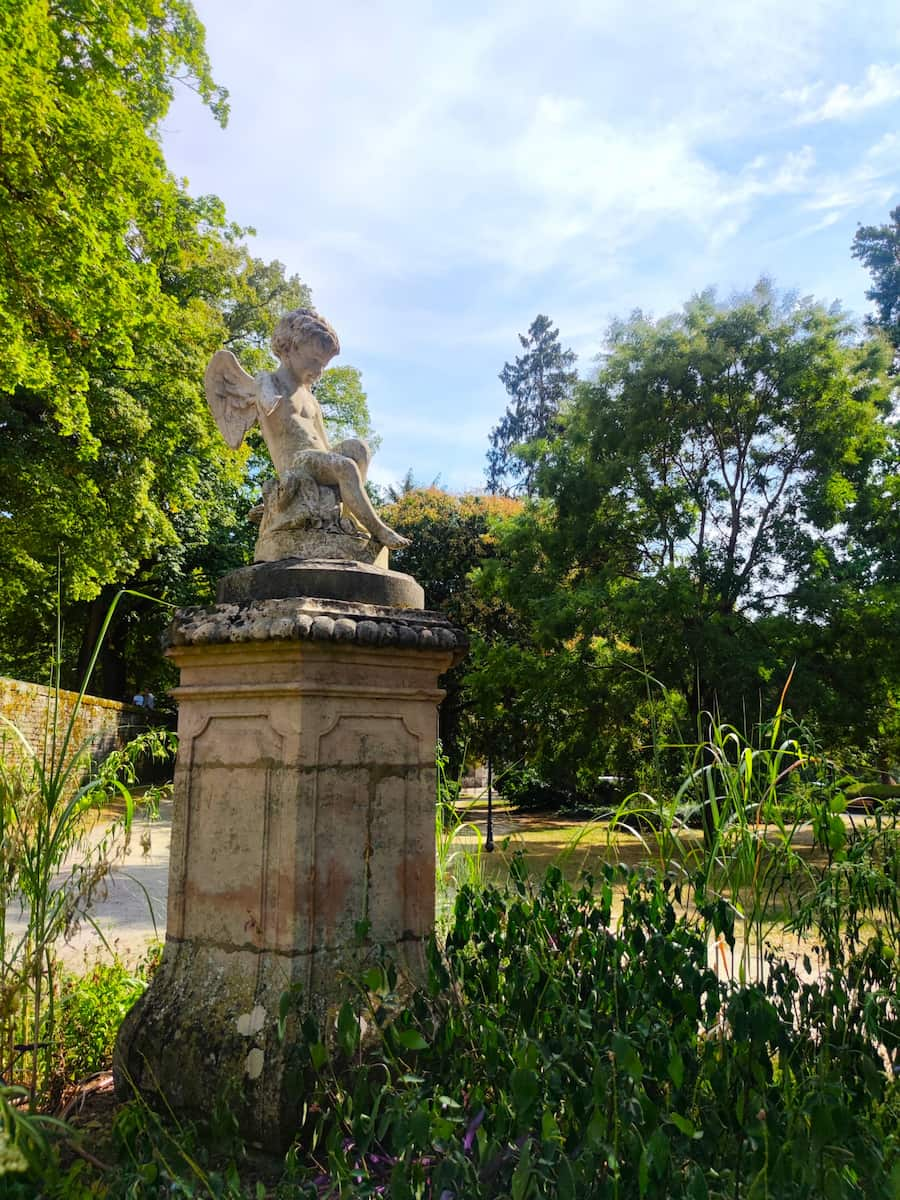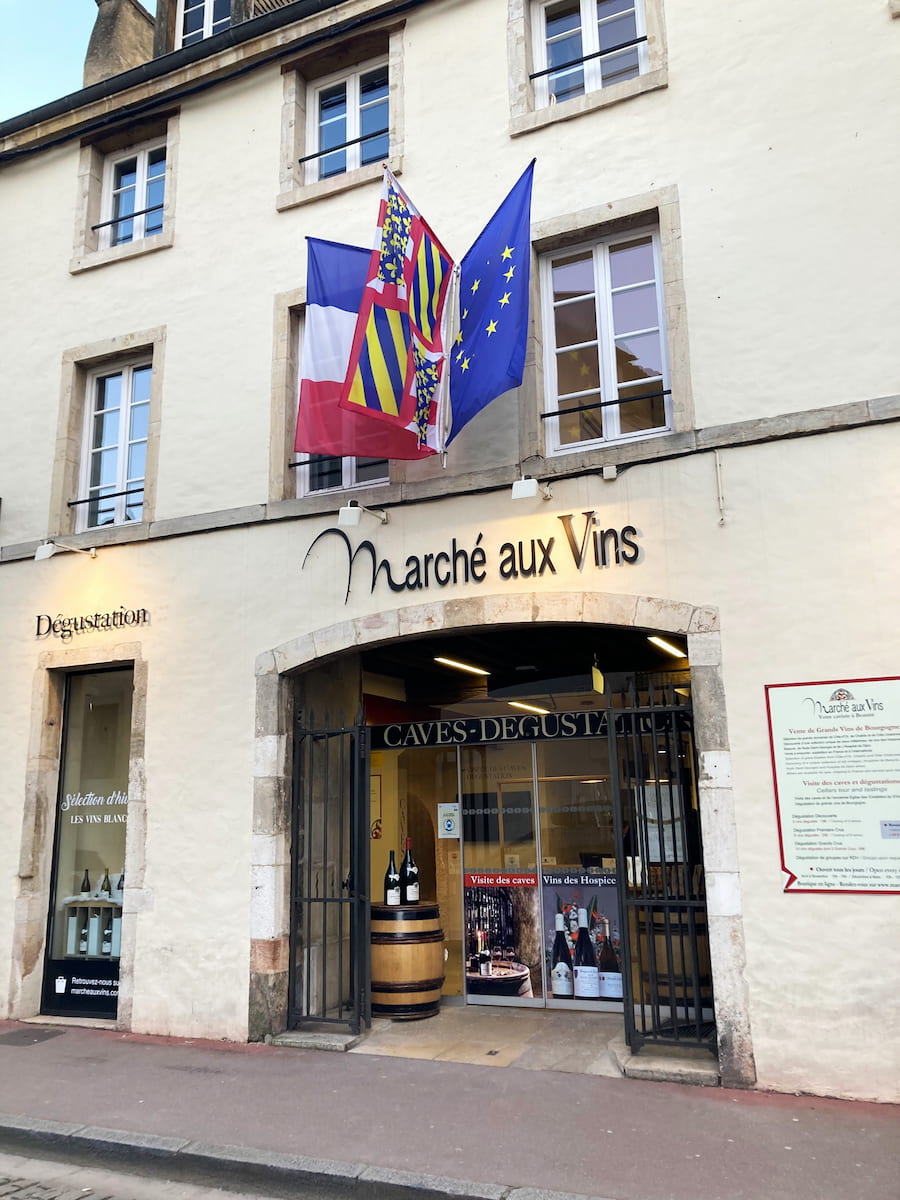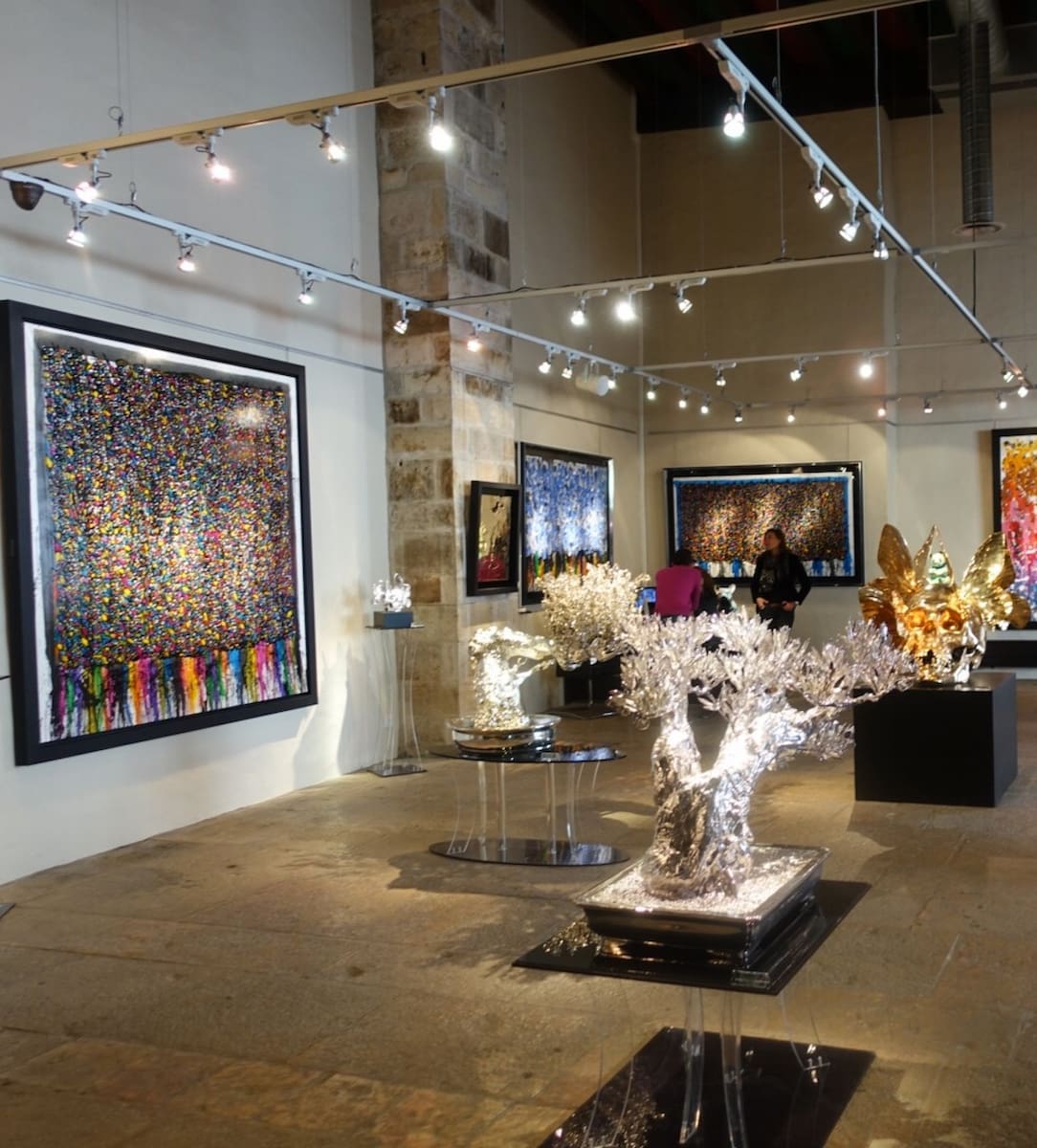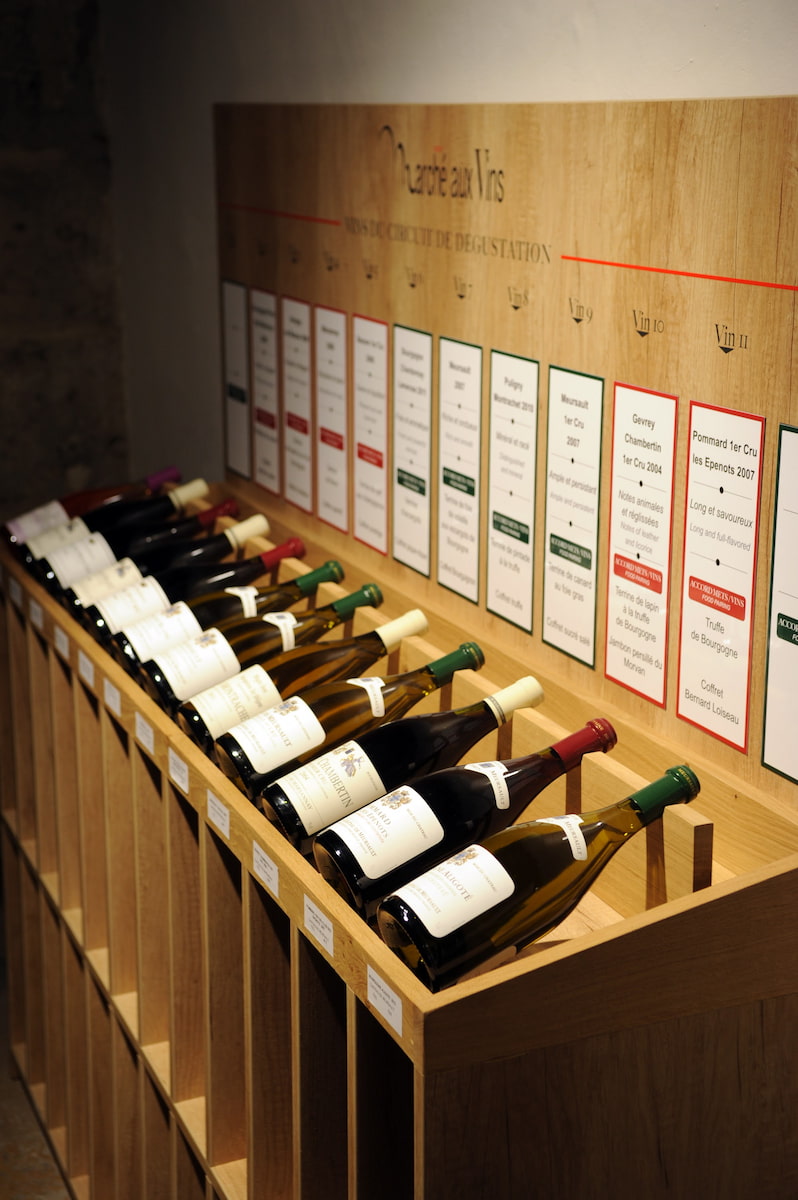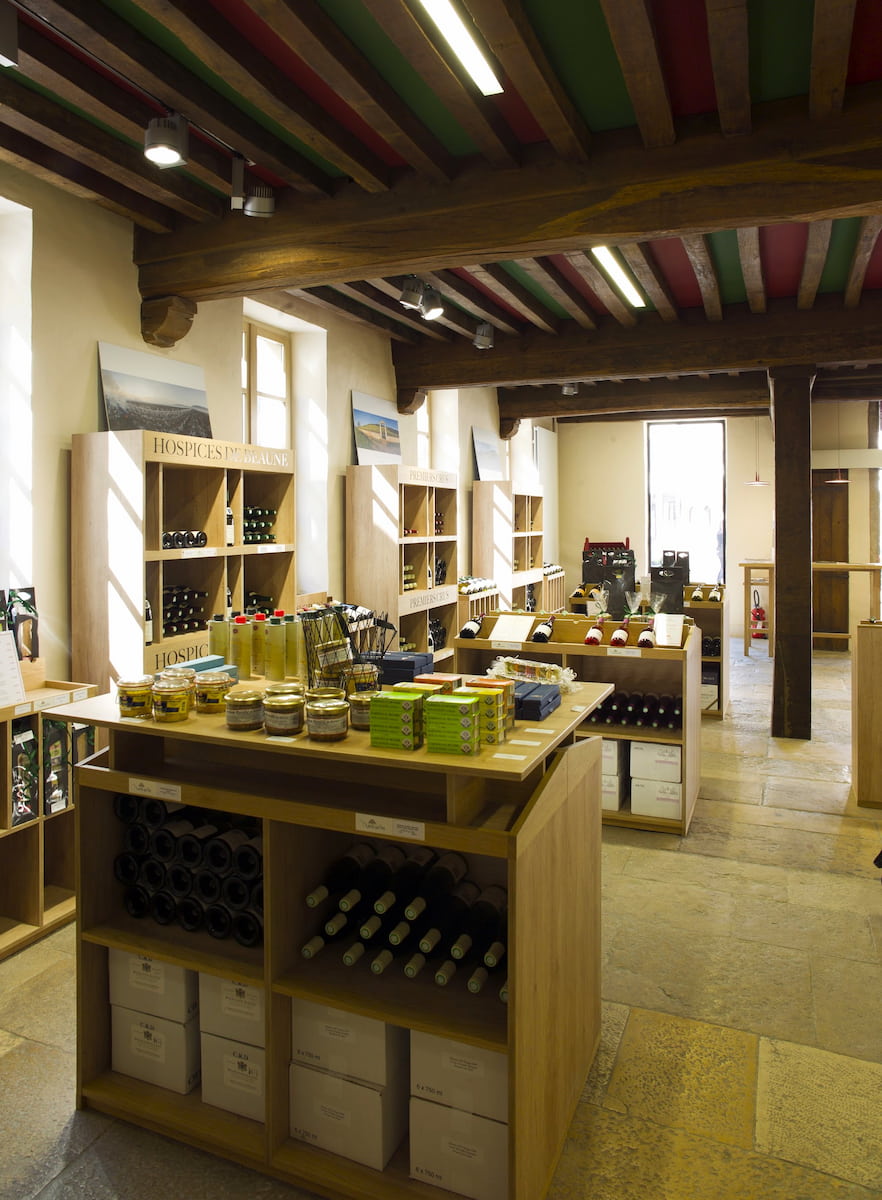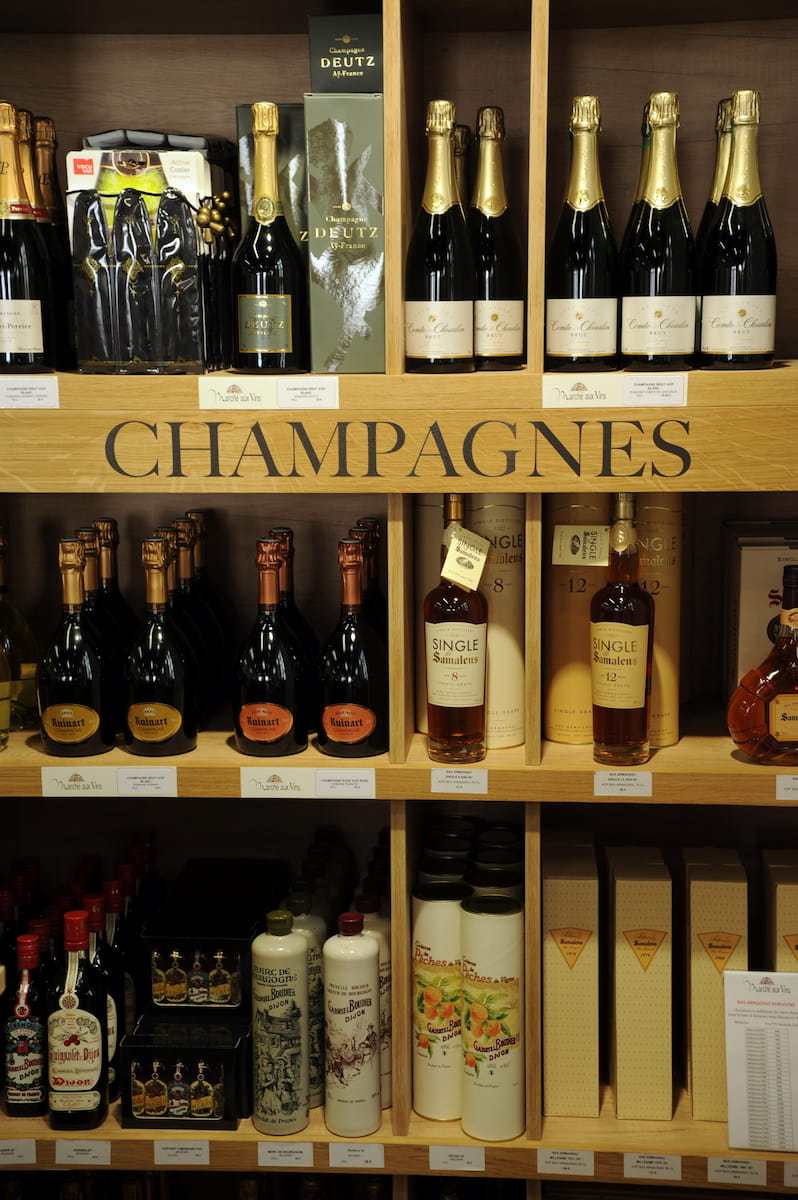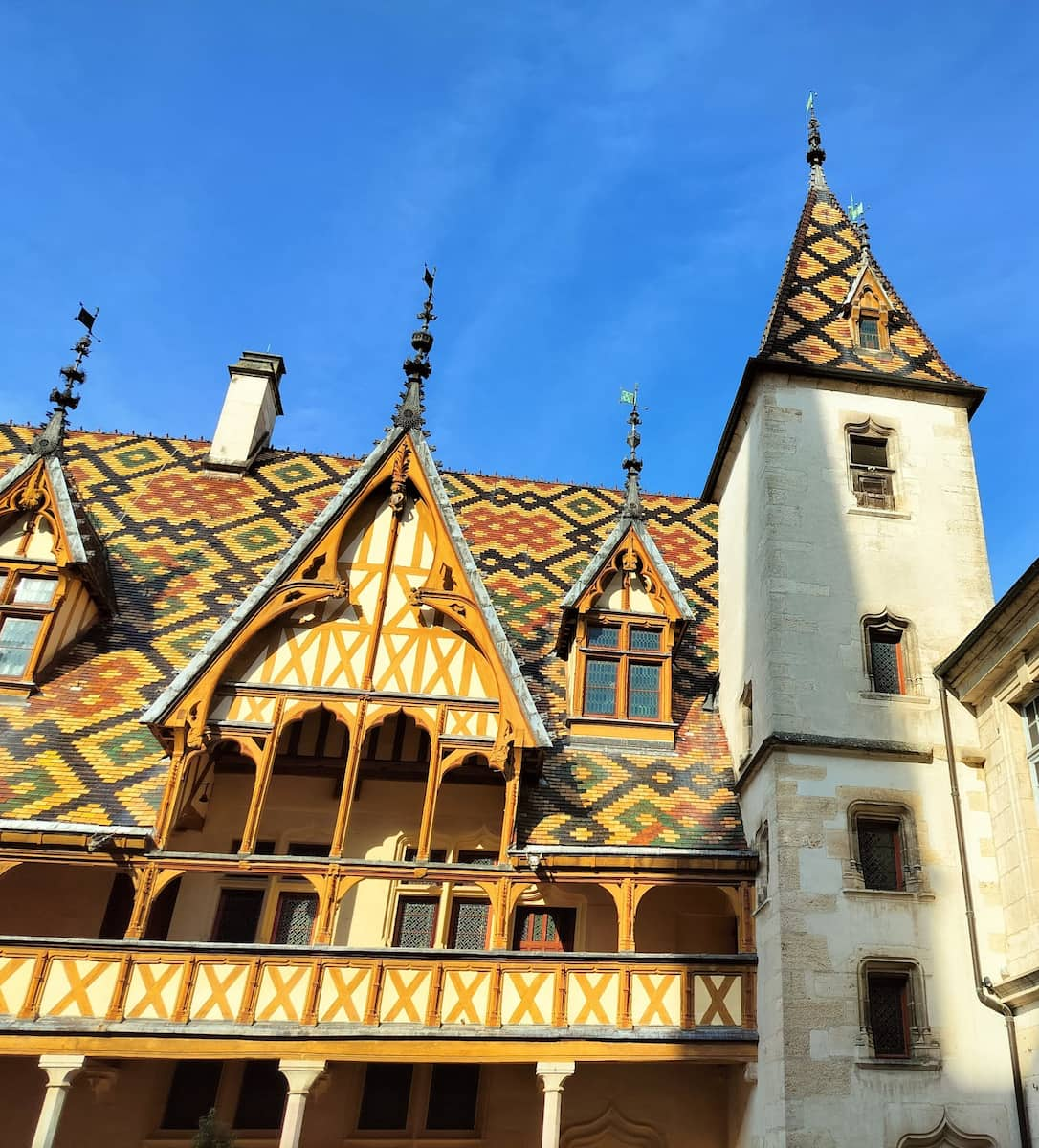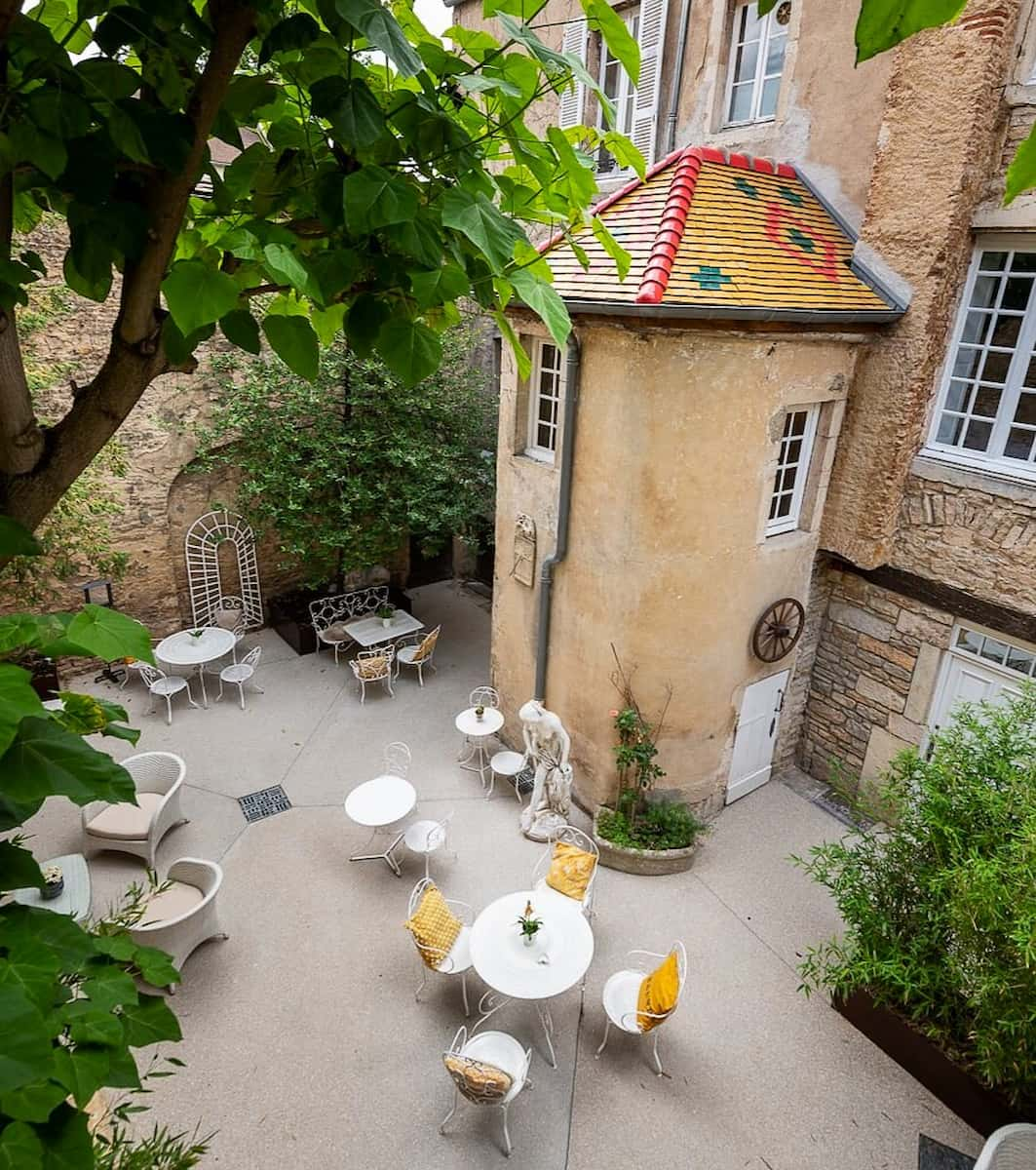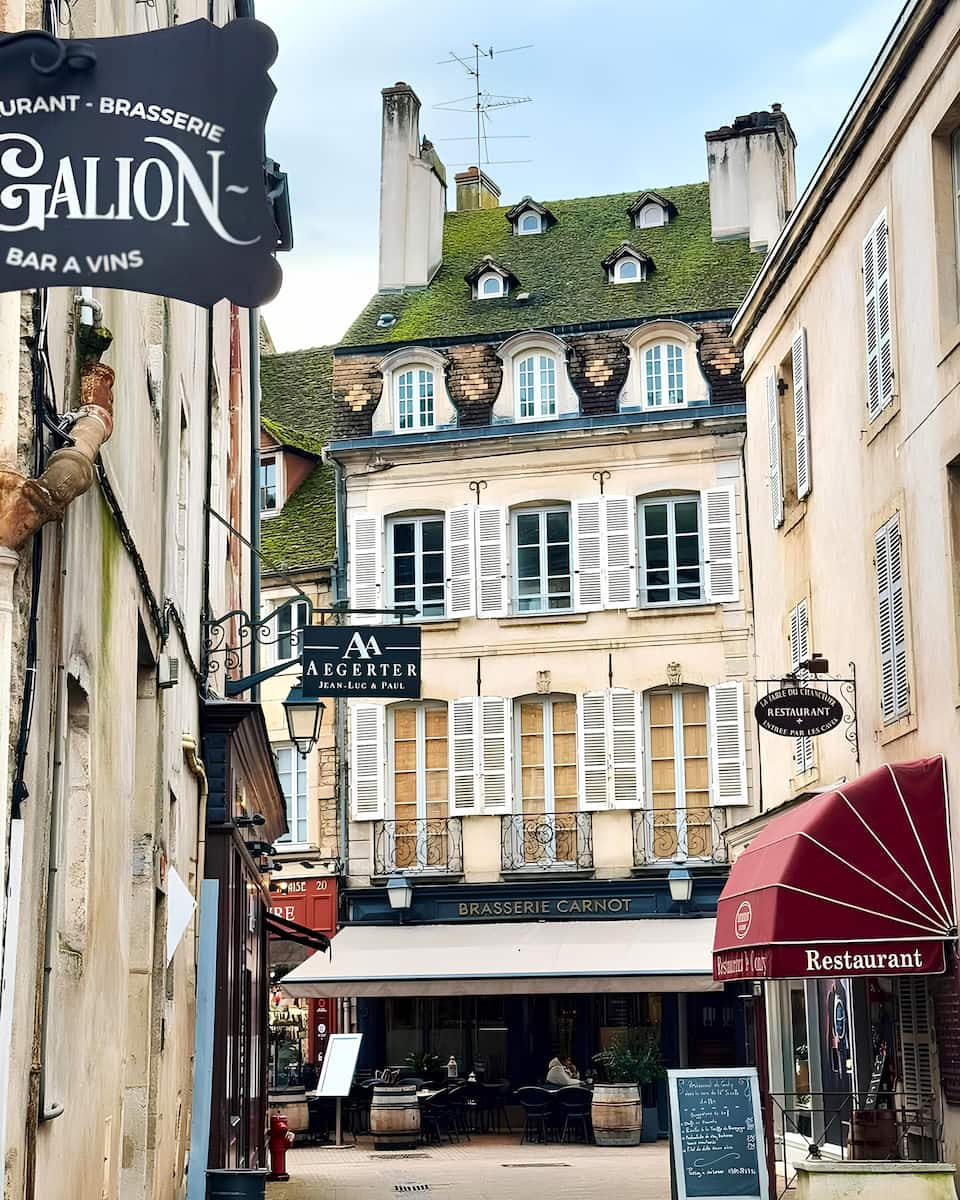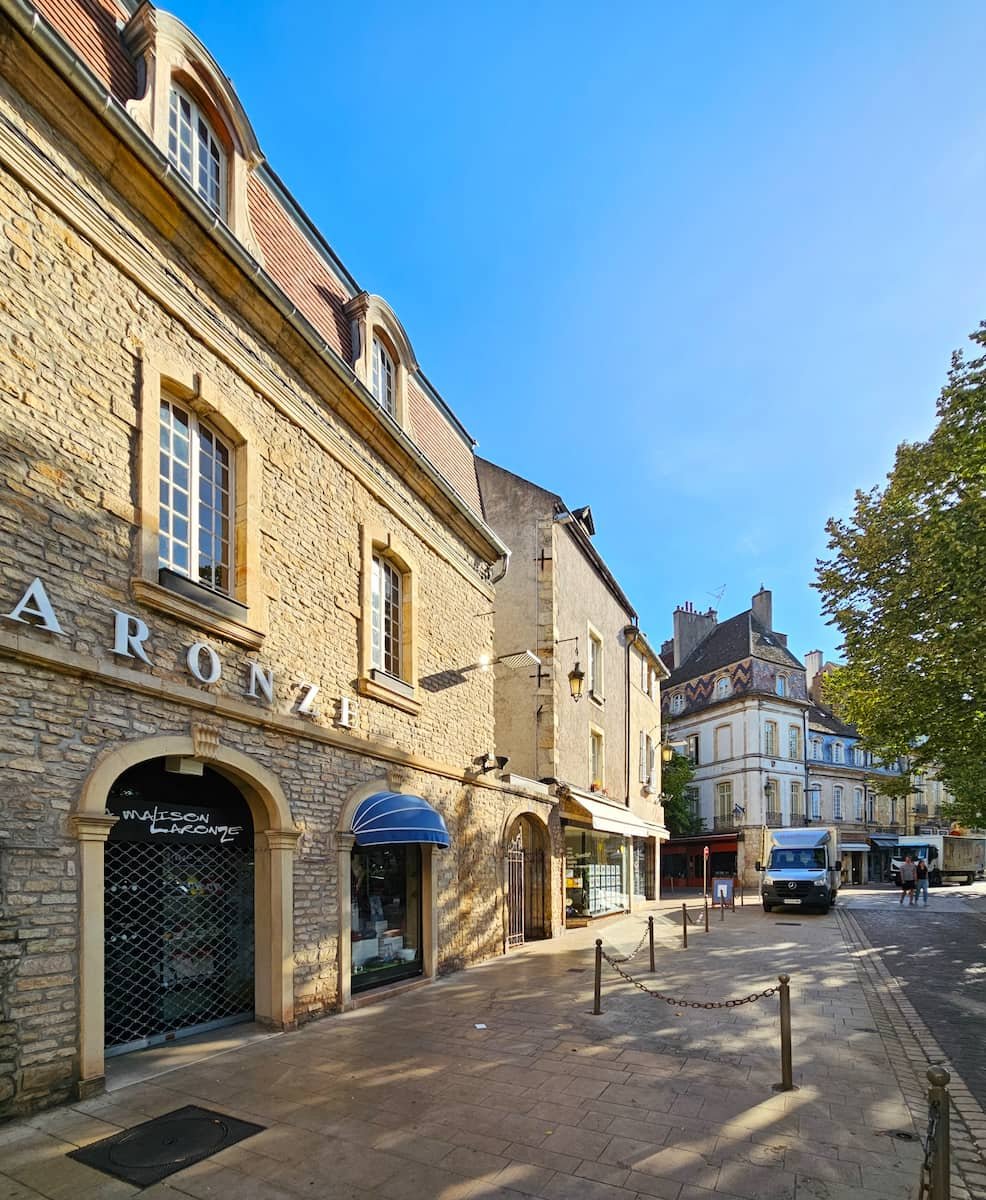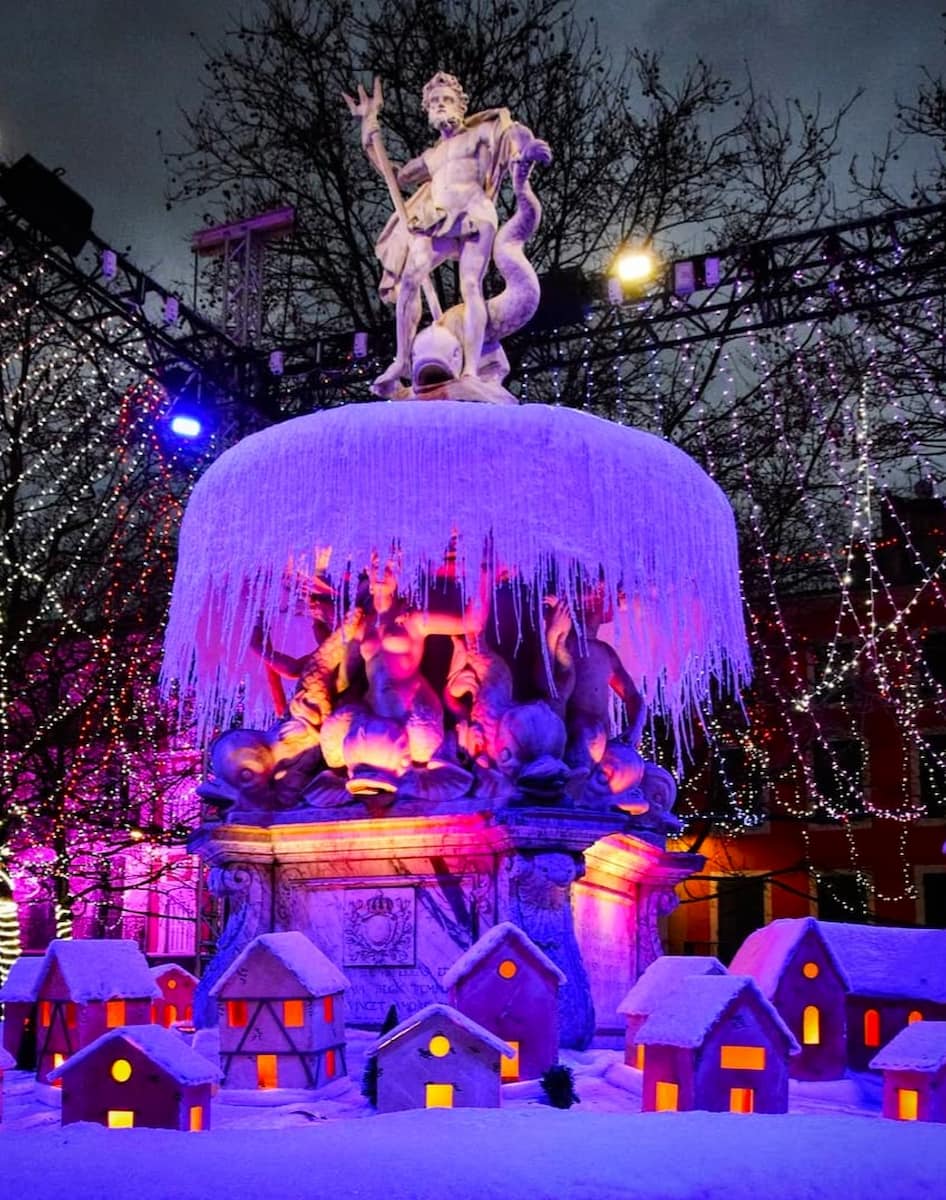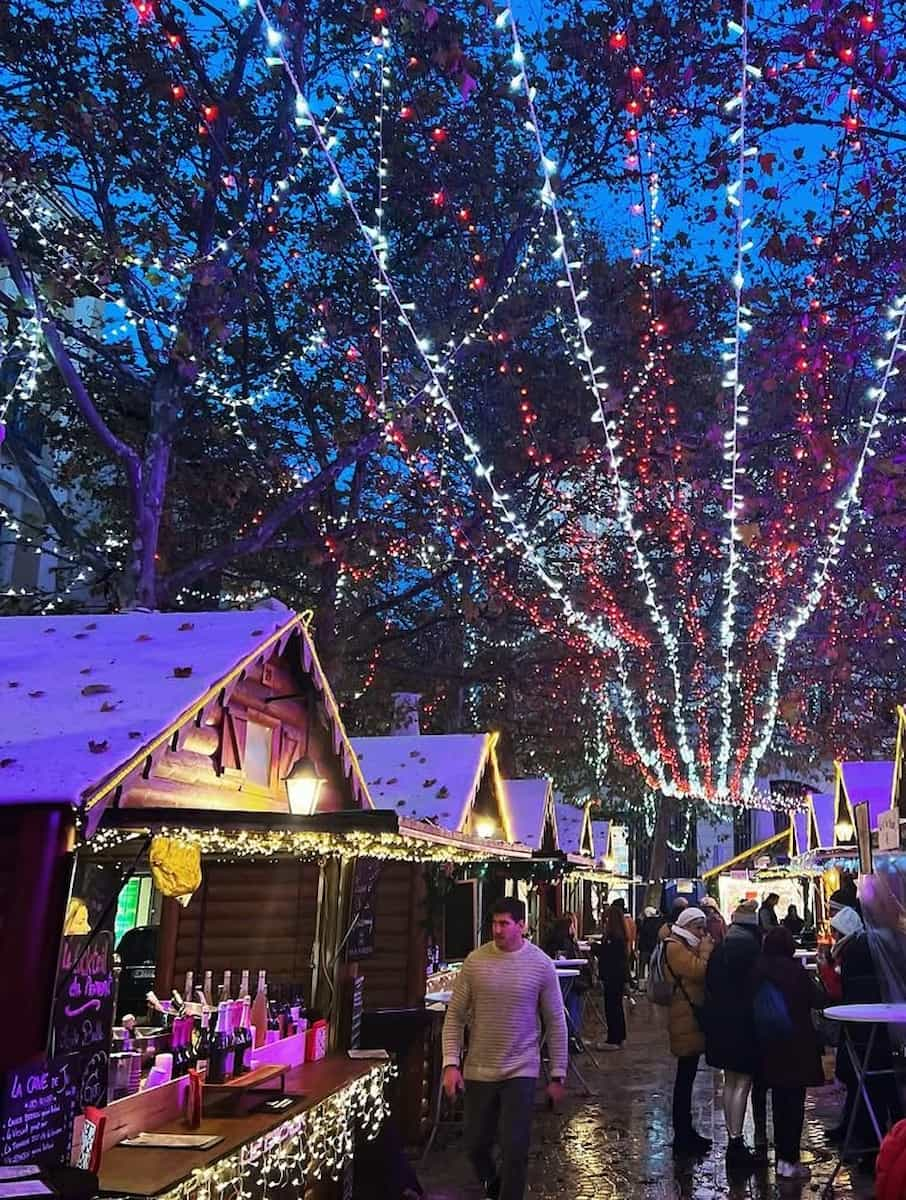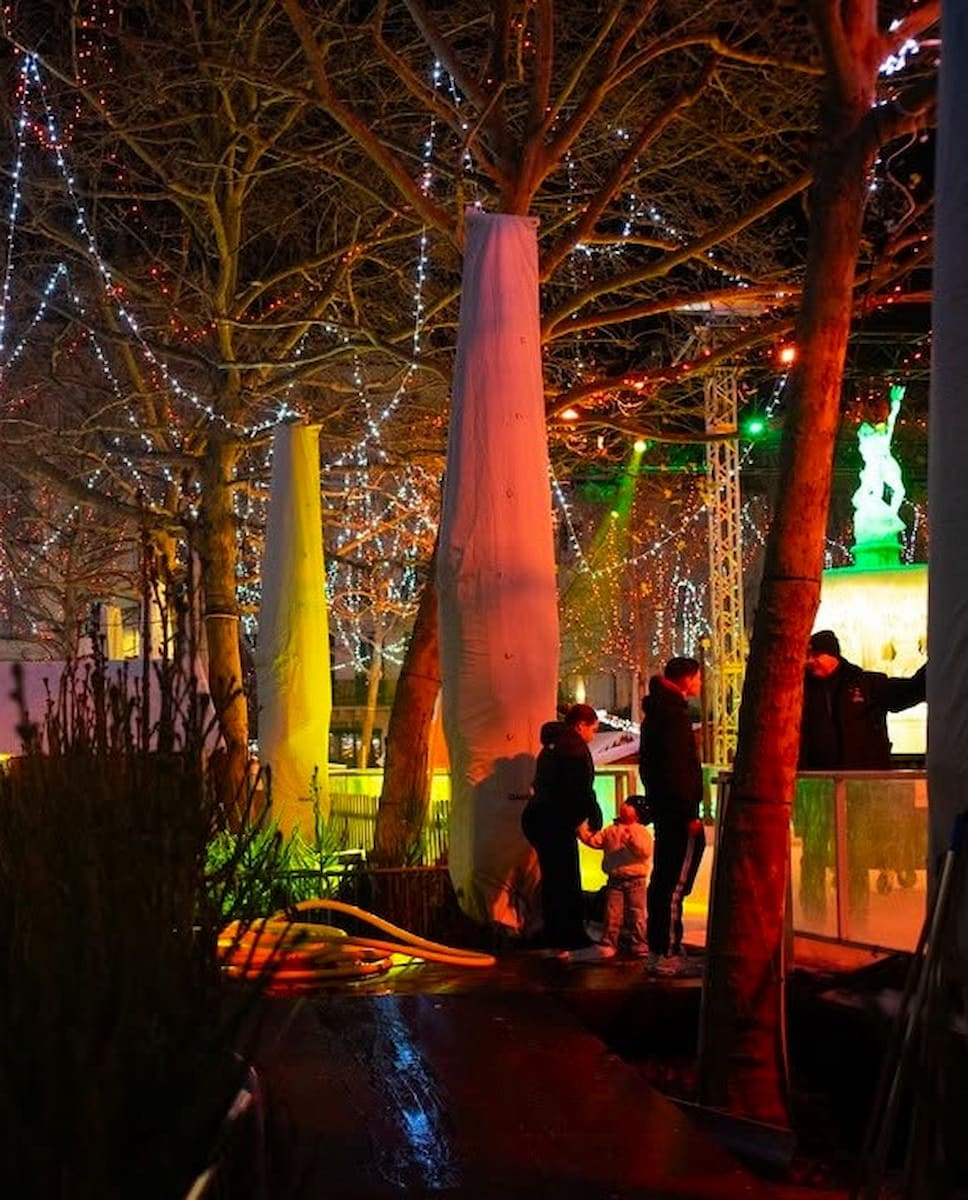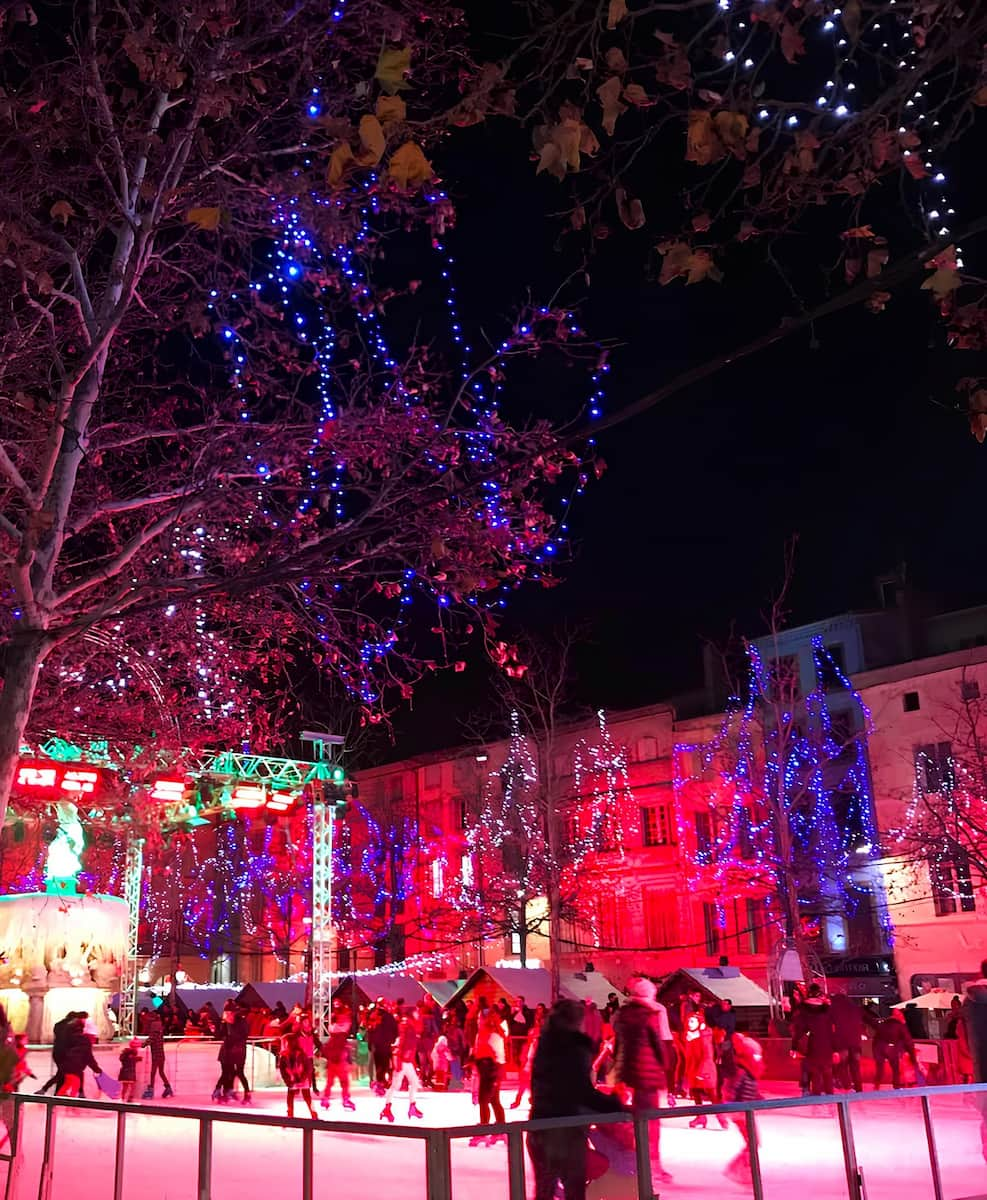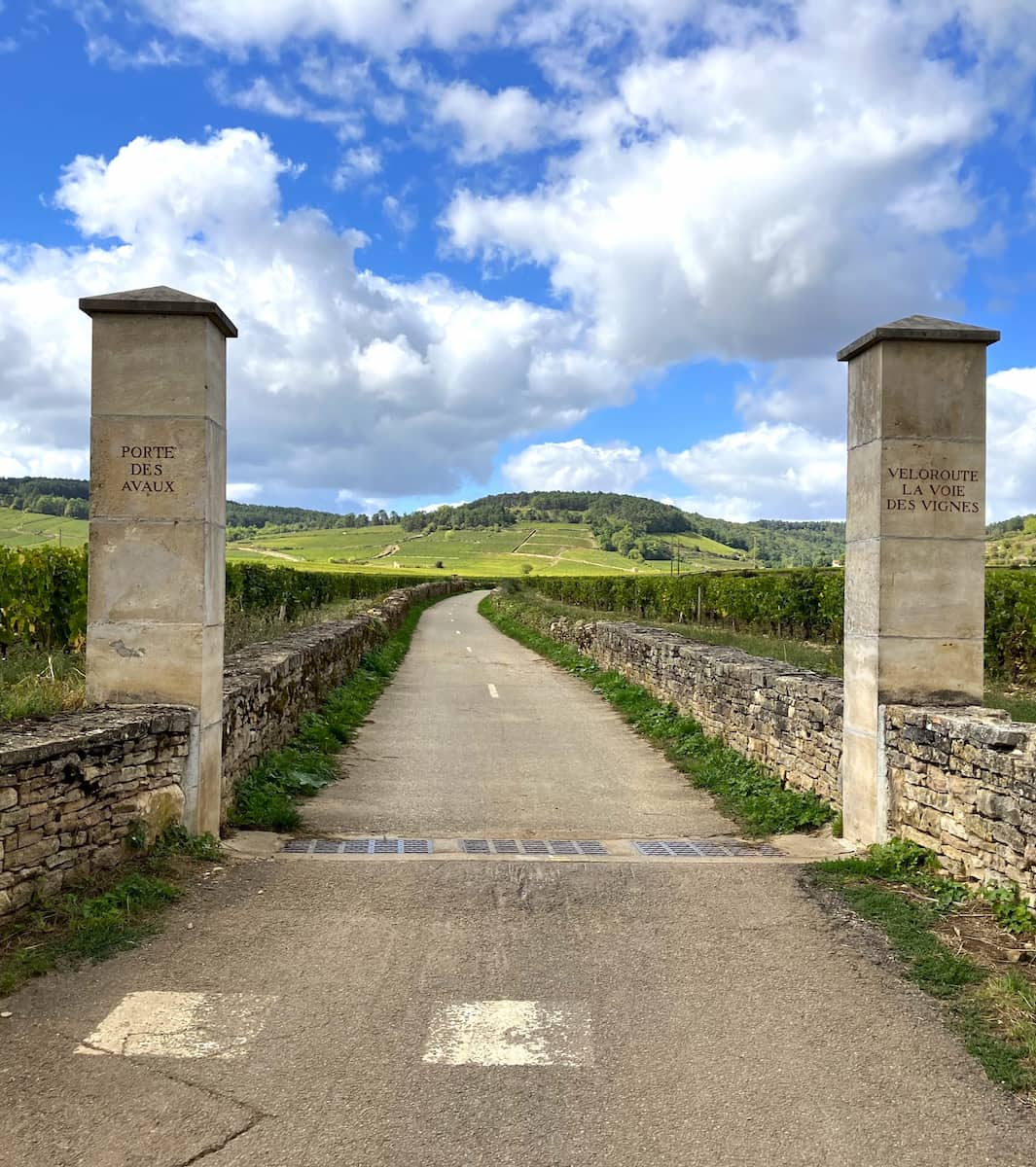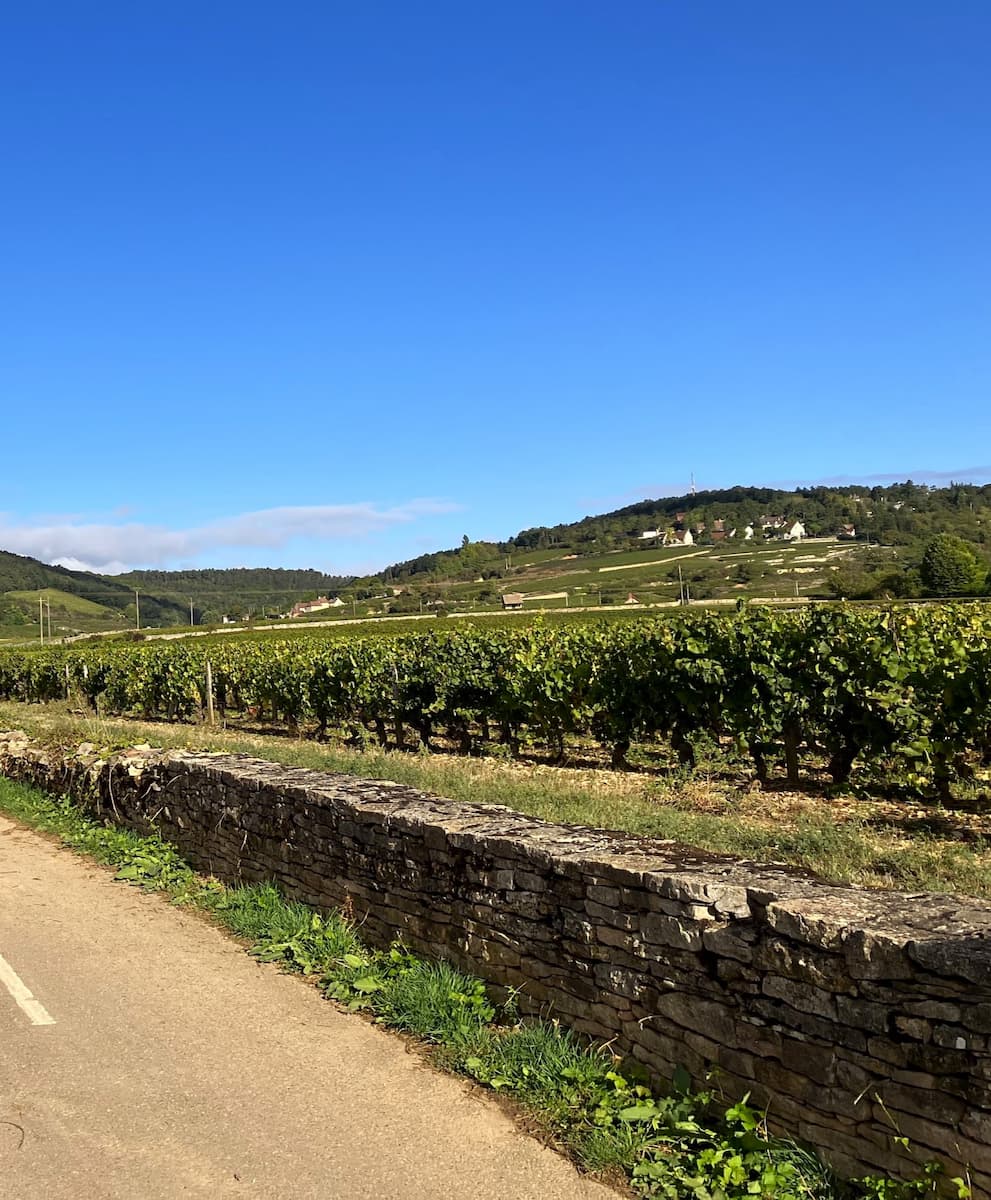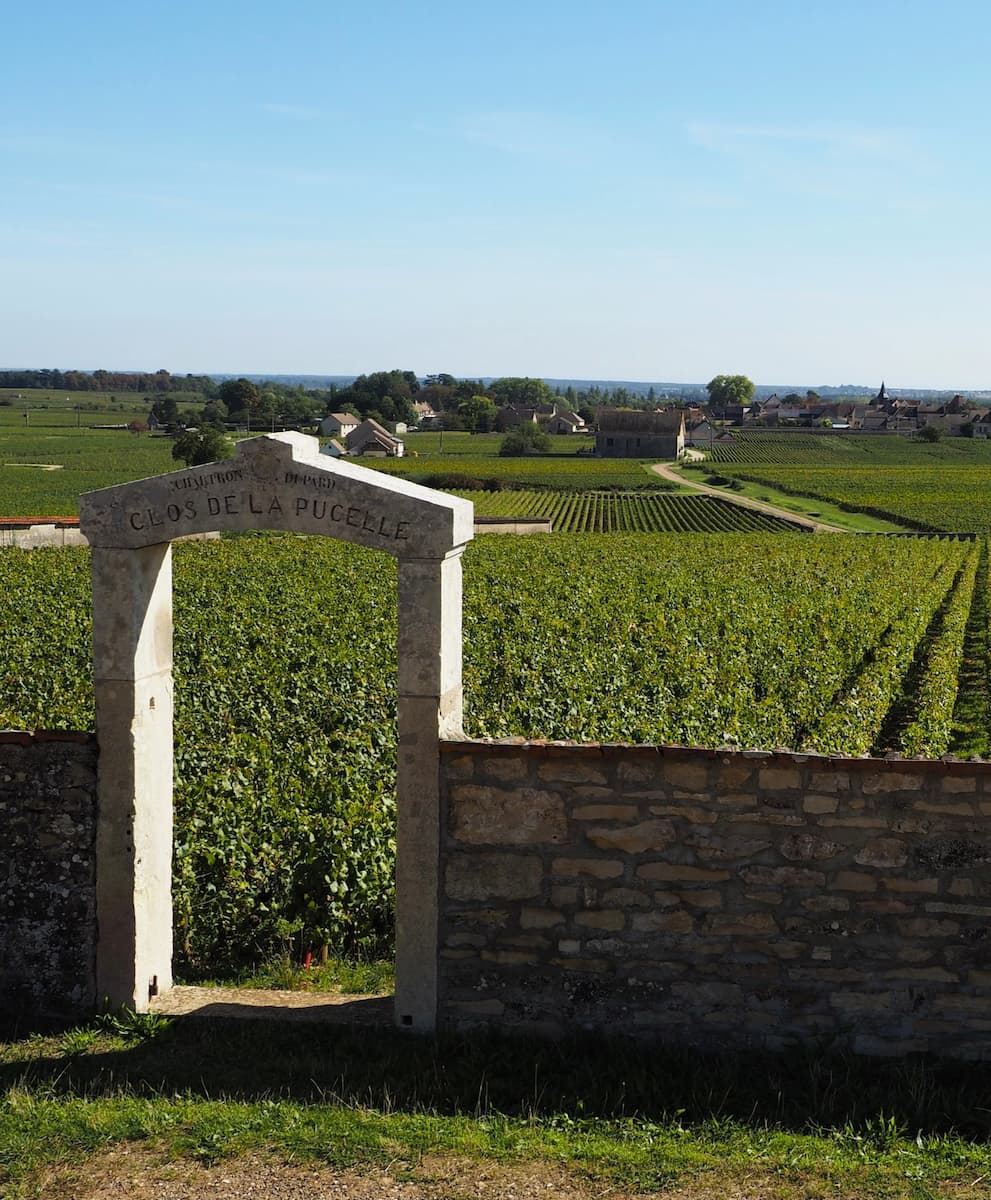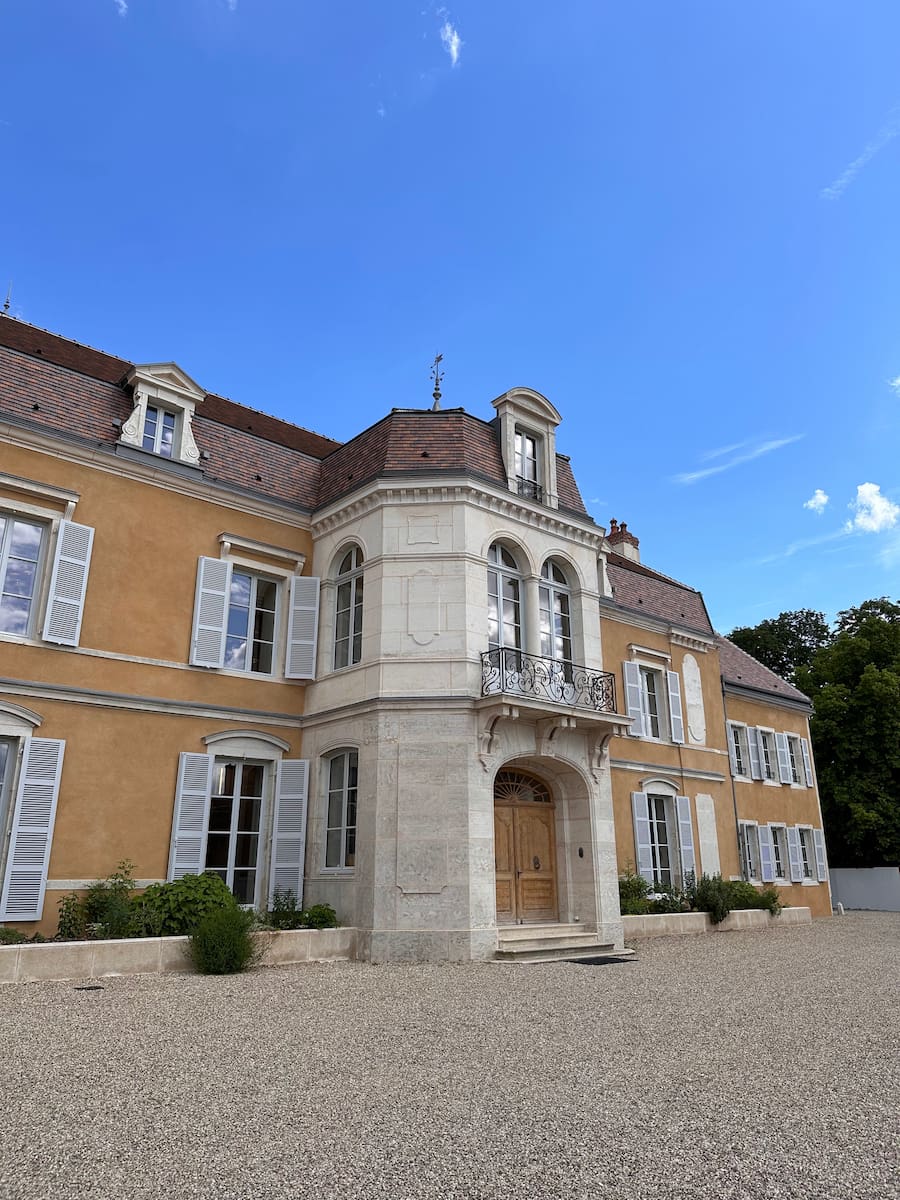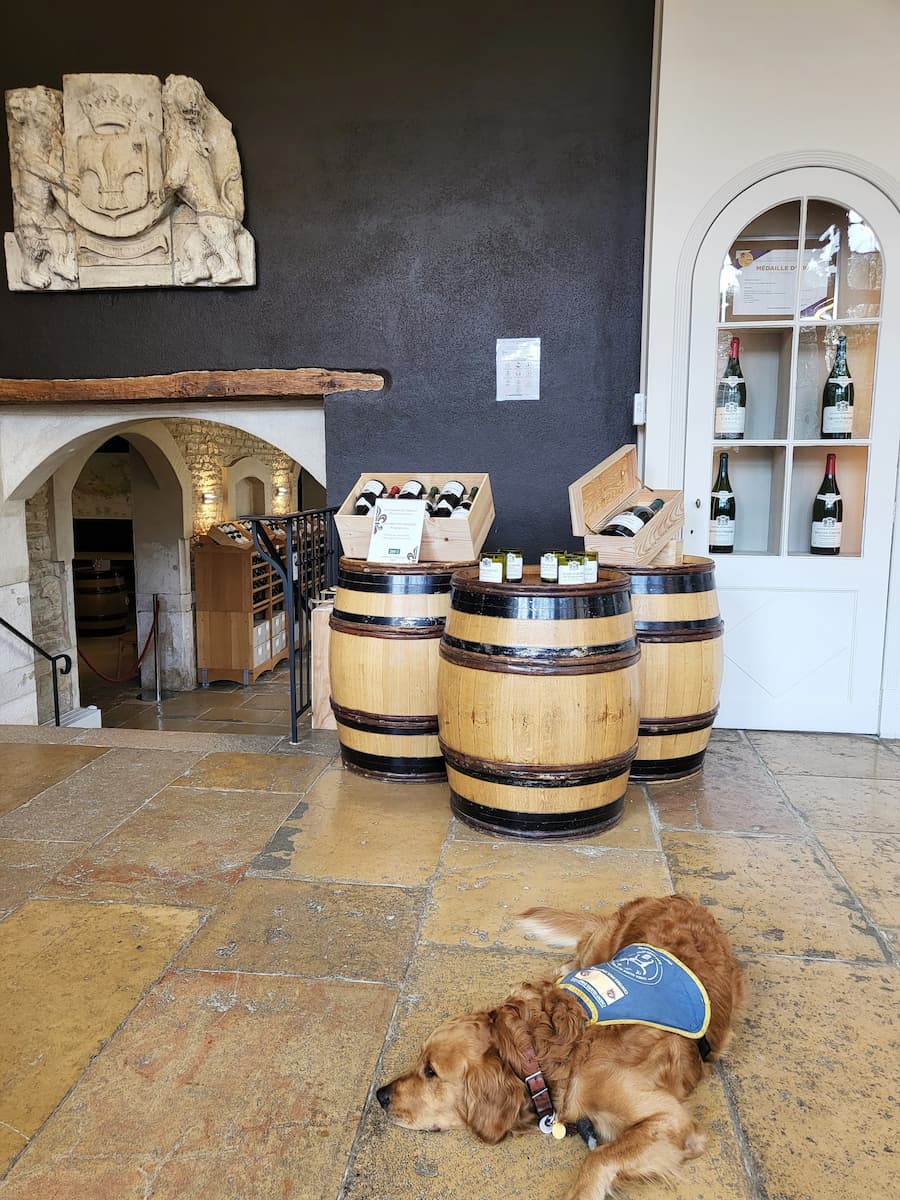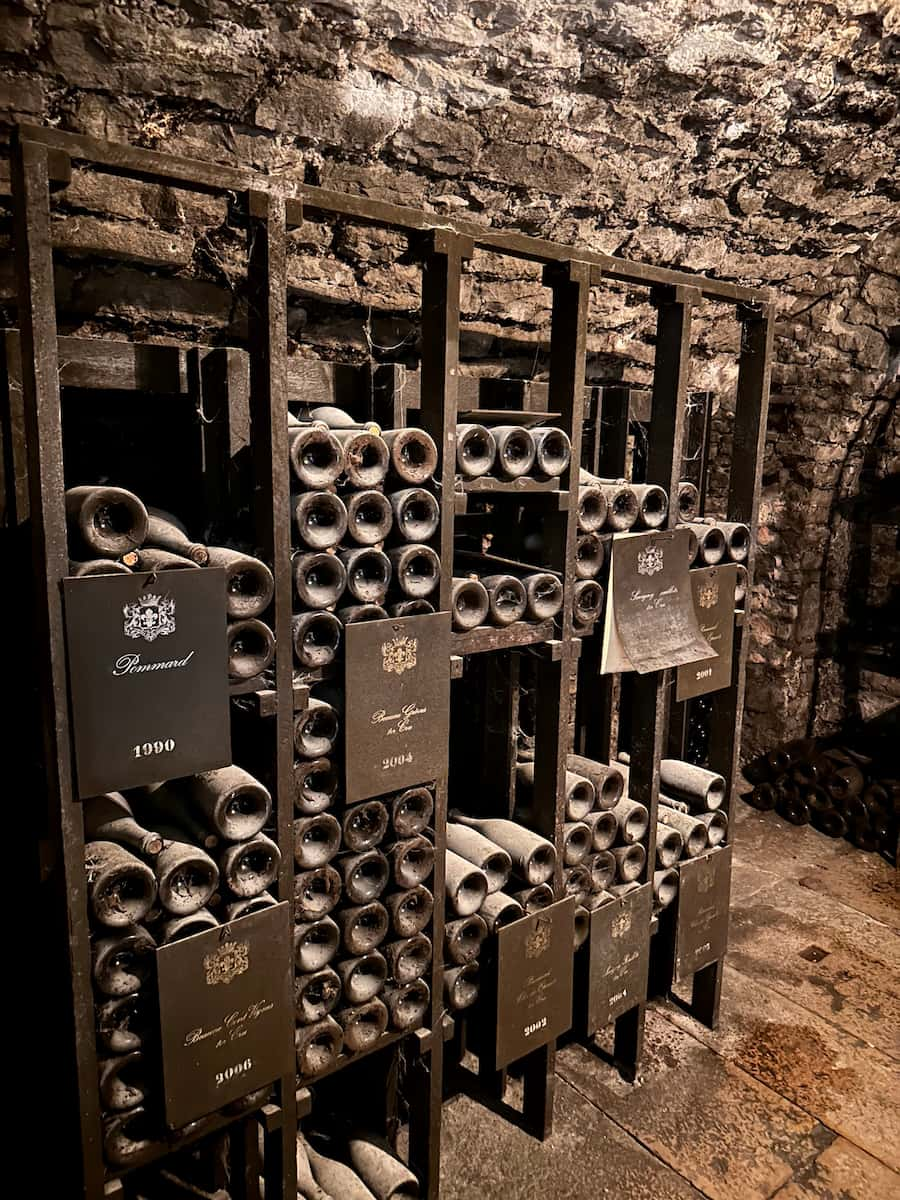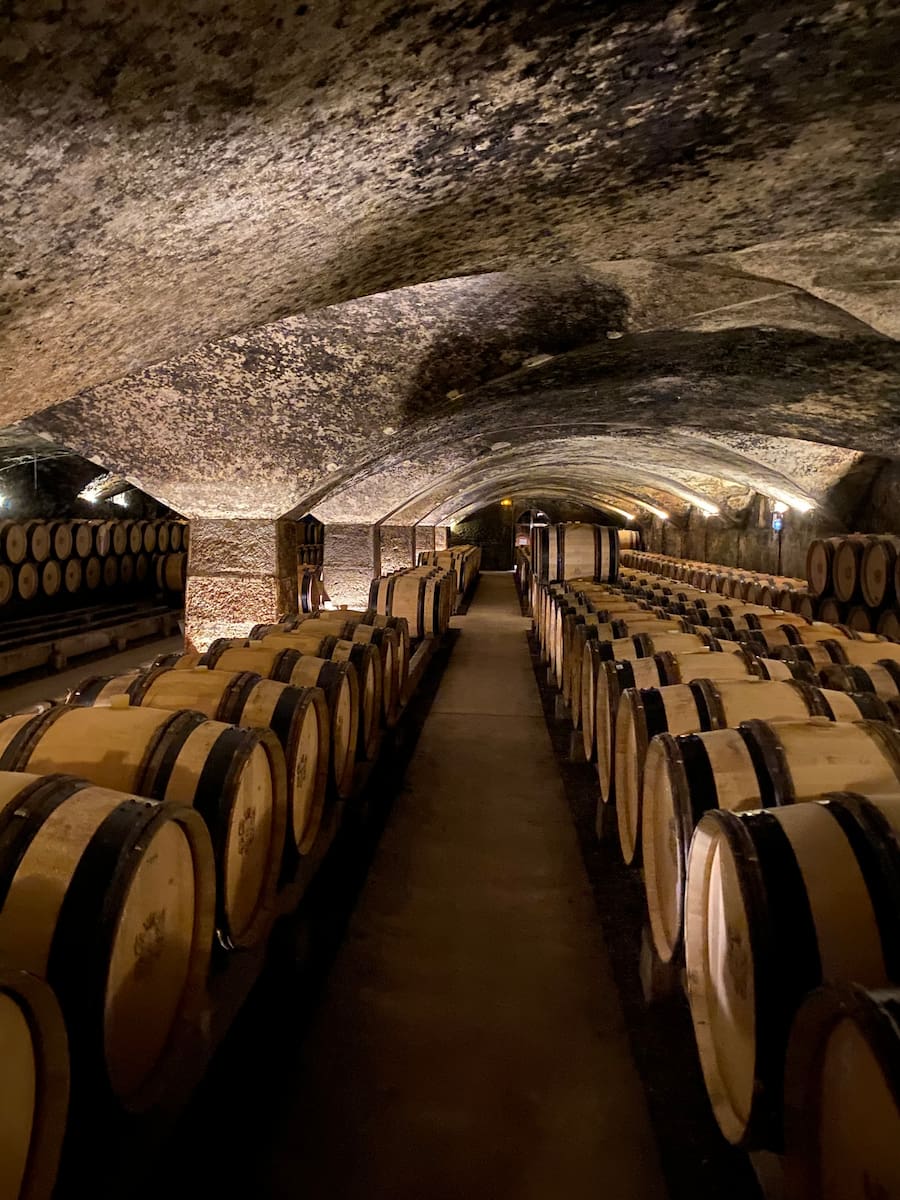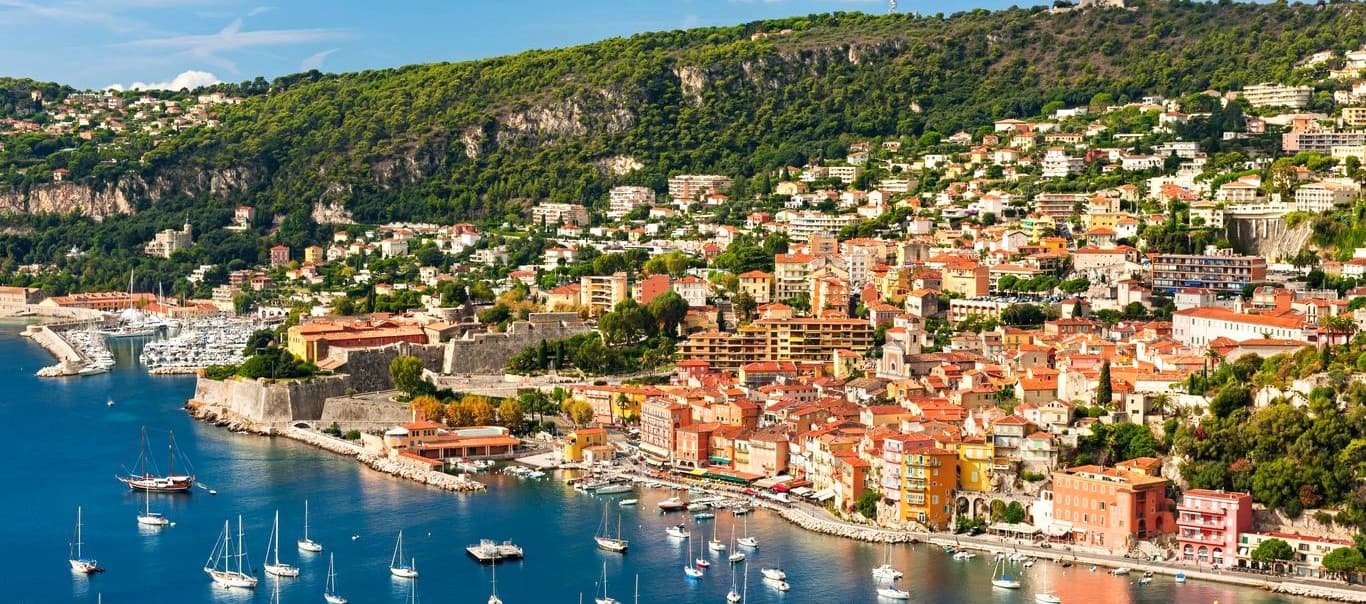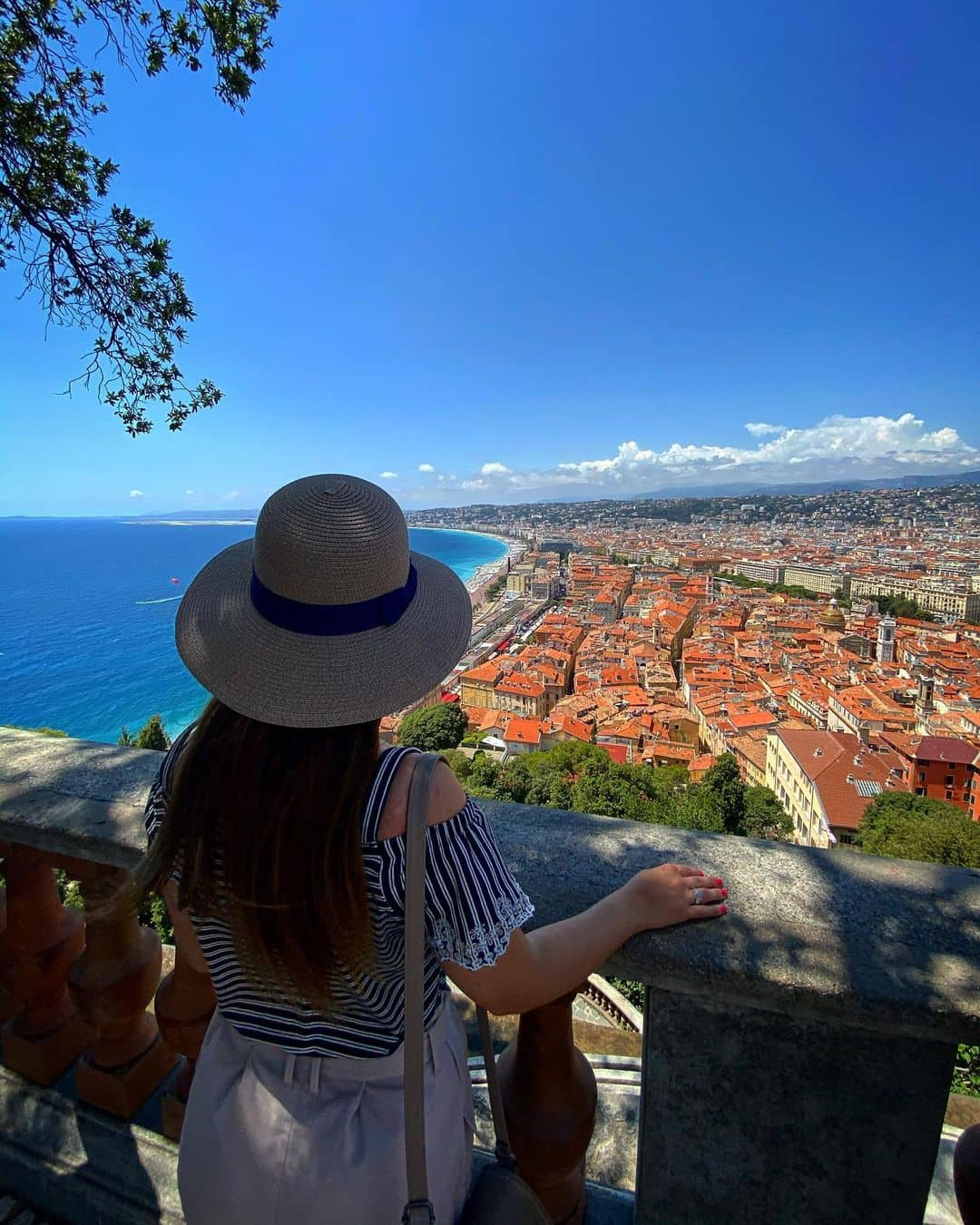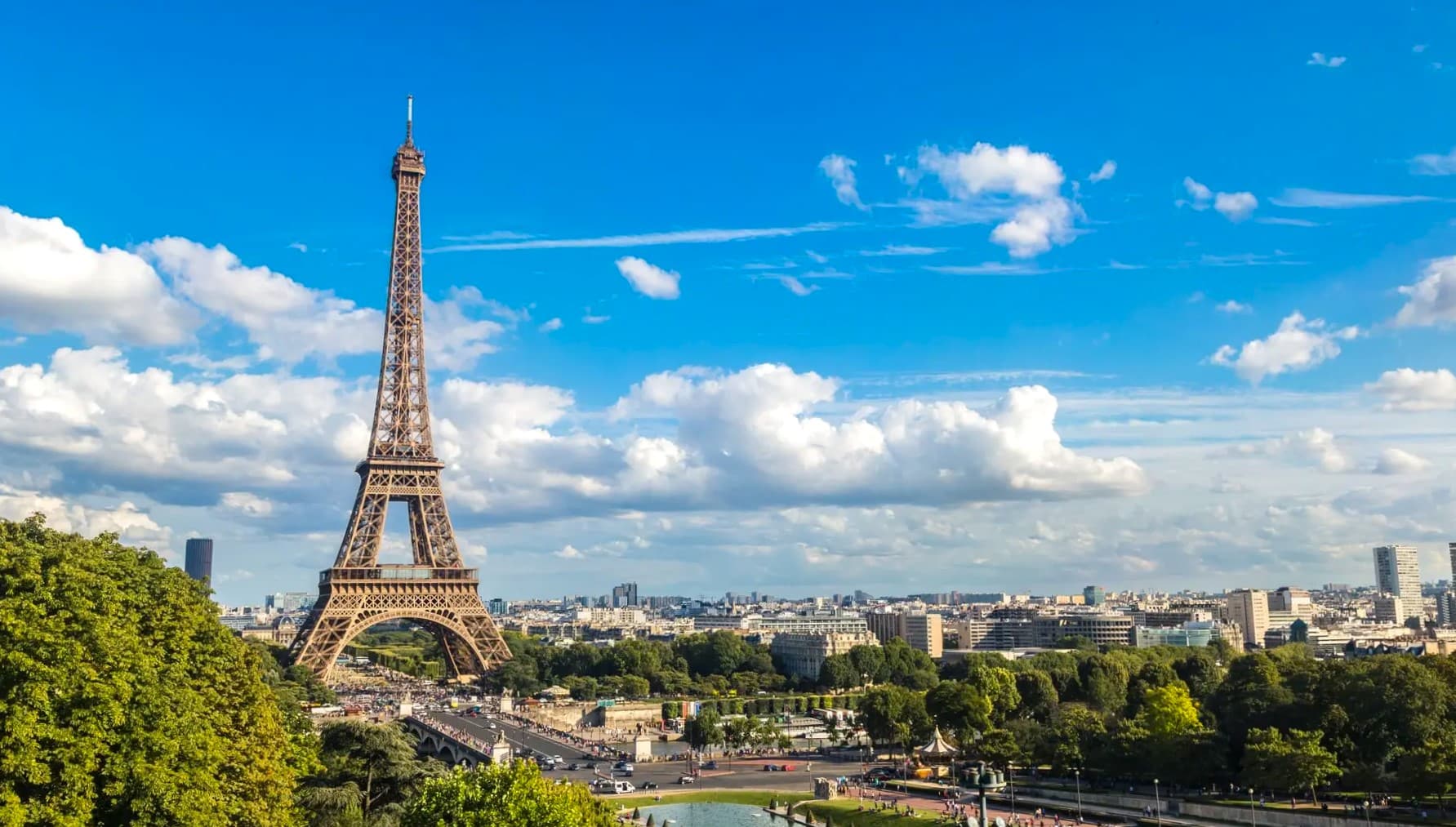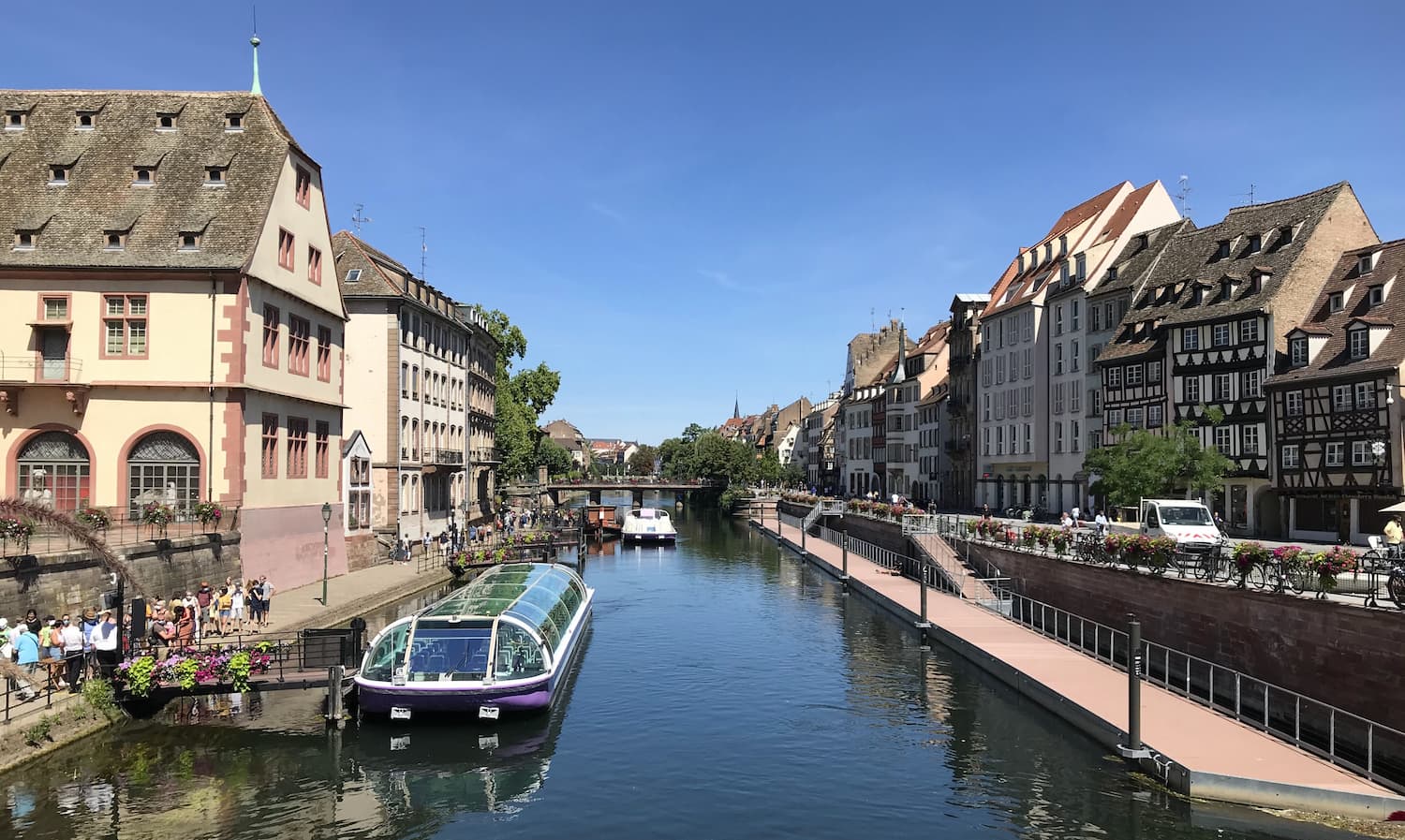Beaune, the charming wine capital of Burgundy, offers visitors a perfect blend of history, gastronomy, and vineyard experiences that capture the essence of French culture. From the moment you step onto its medieval streets, you’ll be transported through centuries of rich heritage while discovering some of the world’s most celebrated wines.
Nestled in the heart of one of France’s most famous wine regions, this small city packs an impressive array of attractions into its historic center and surrounding countryside. Whether you’re a wine enthusiast, history buff, or simply looking for an authentic French experience, Beaune’s colorful tiled roofs, ancient cellars, and welcoming atmosphere make it an unforgettable destination in eastern France.
🏠 Best Hotels in Beaune
- 💎 Luxury Hotel: Hôtel Le Cep
- ✨ 5-Star: Hostellerie Cèdre & Spa Beaune
- 🏨 4-Star: Novotel Beaune
- 🛏️ 3-Star: Kyriad Prestige Beaune le Panorama
- 💸 Cheap: Campanile Beaune
- 🏢 Apartment: Le doux rendez-vous
- 👨👩👧👦 For Families: Kyriad Beaune
- 🏩 For Couples: Coto Hotel
💁 Best Guided Tours
- 2 Hour Sparkling Wine Tasting and visit in Beaune from € 25 (⭐ 4.8/5)
- Private Tasting in Beaune : The Best of Burgundy Wines from € 49 (⭐ 5.0/5)
- Burgundy Small-Group Wine Tour, Côte de Beaune, from Dijon from € 175 (⭐ 4.9/5)
- Beaune: A Self-Guided Audio Tour of Burgundy’s Wine Capital from € 10 (⭐ 4.7/5)
Best Things To Do in Beaune, France
1. Hôtel-Dieu Museum
Medieval marvel. Standing beneath the iconic glazed tile roof of the Hôtel-Dieu, I felt transported back to 1443 when Nicolas Rolin founded this magnificent hospital. The flamboyant Gothic architecture took my breath away, especially the colorful geometric patterns on those famous Burgundian rooftops.
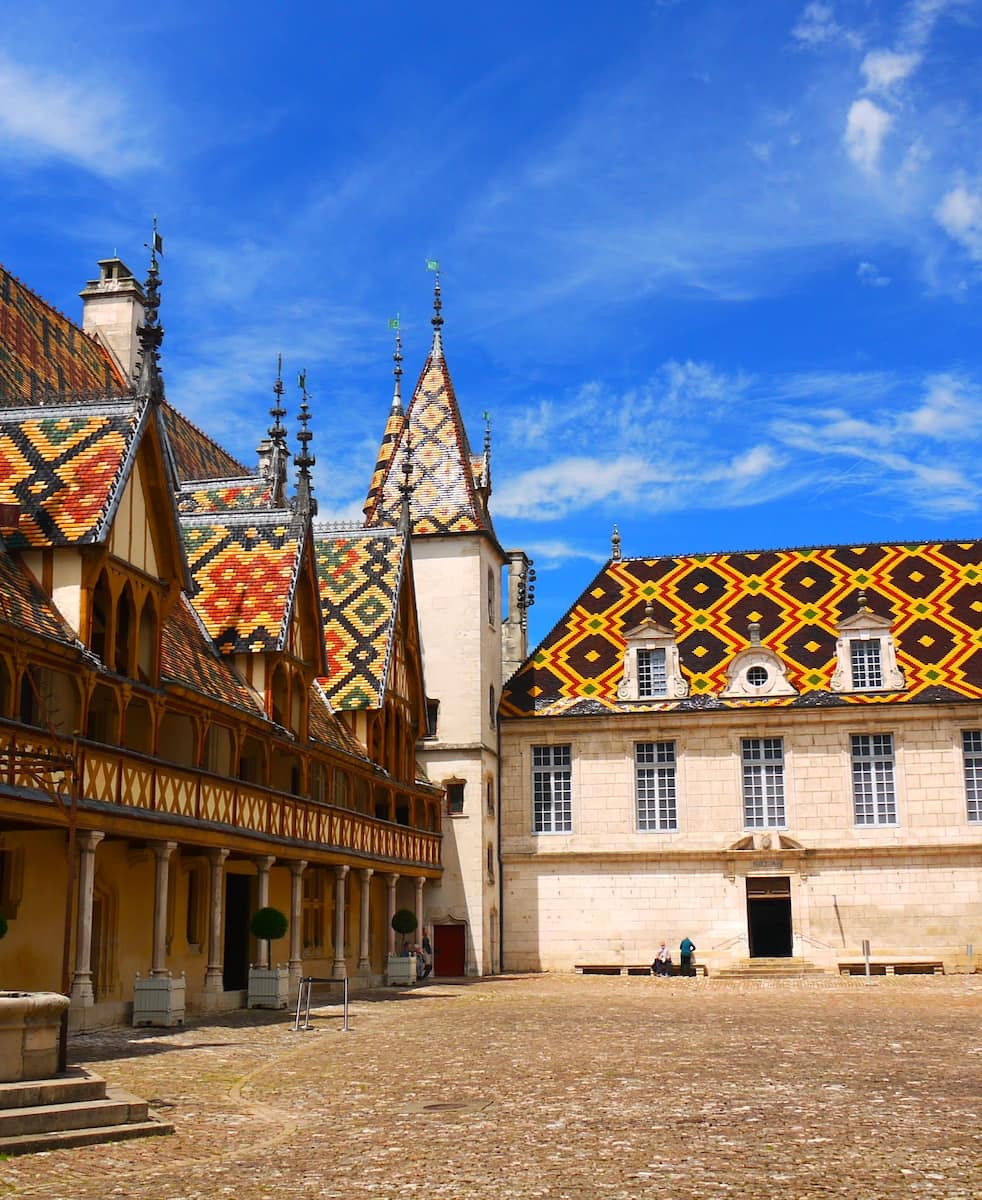
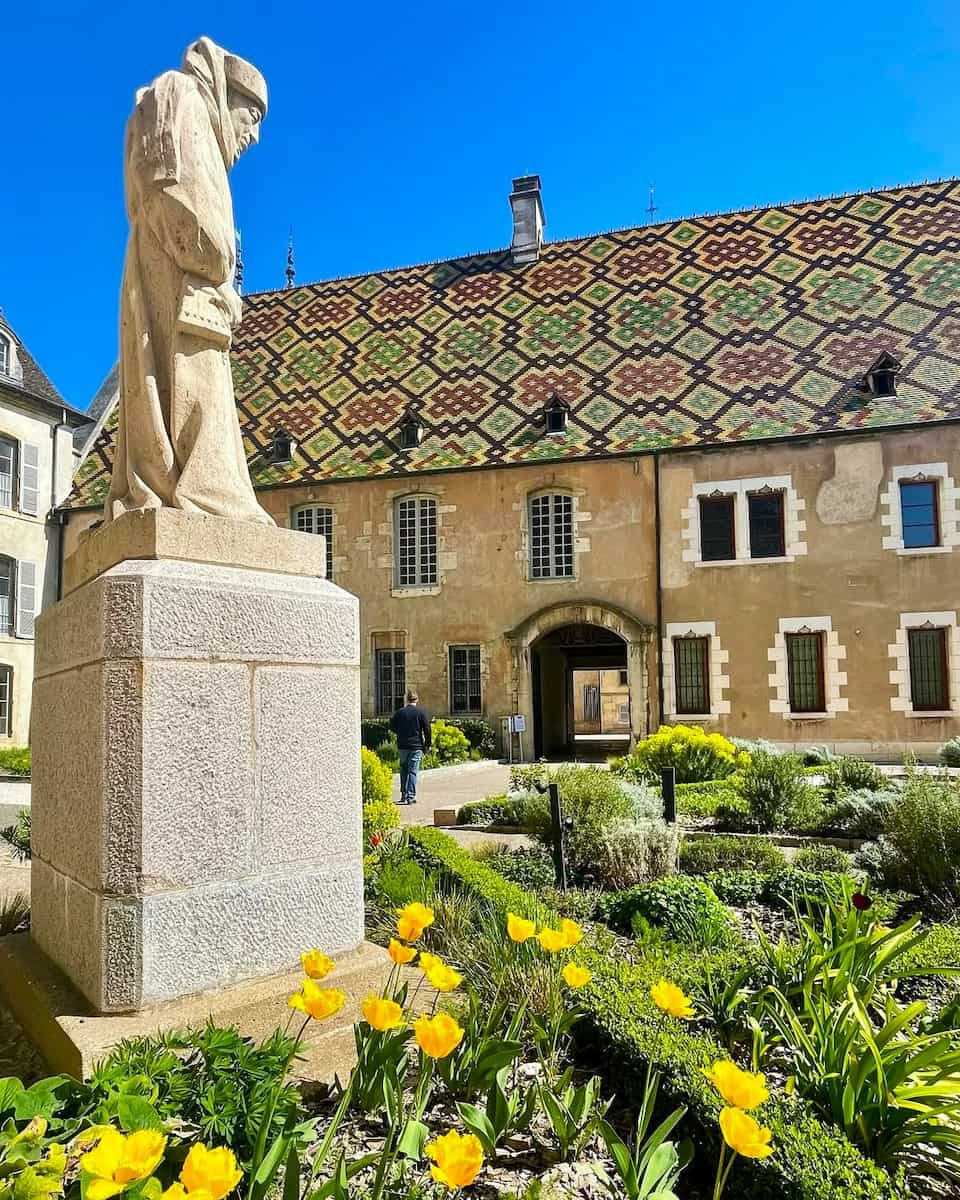
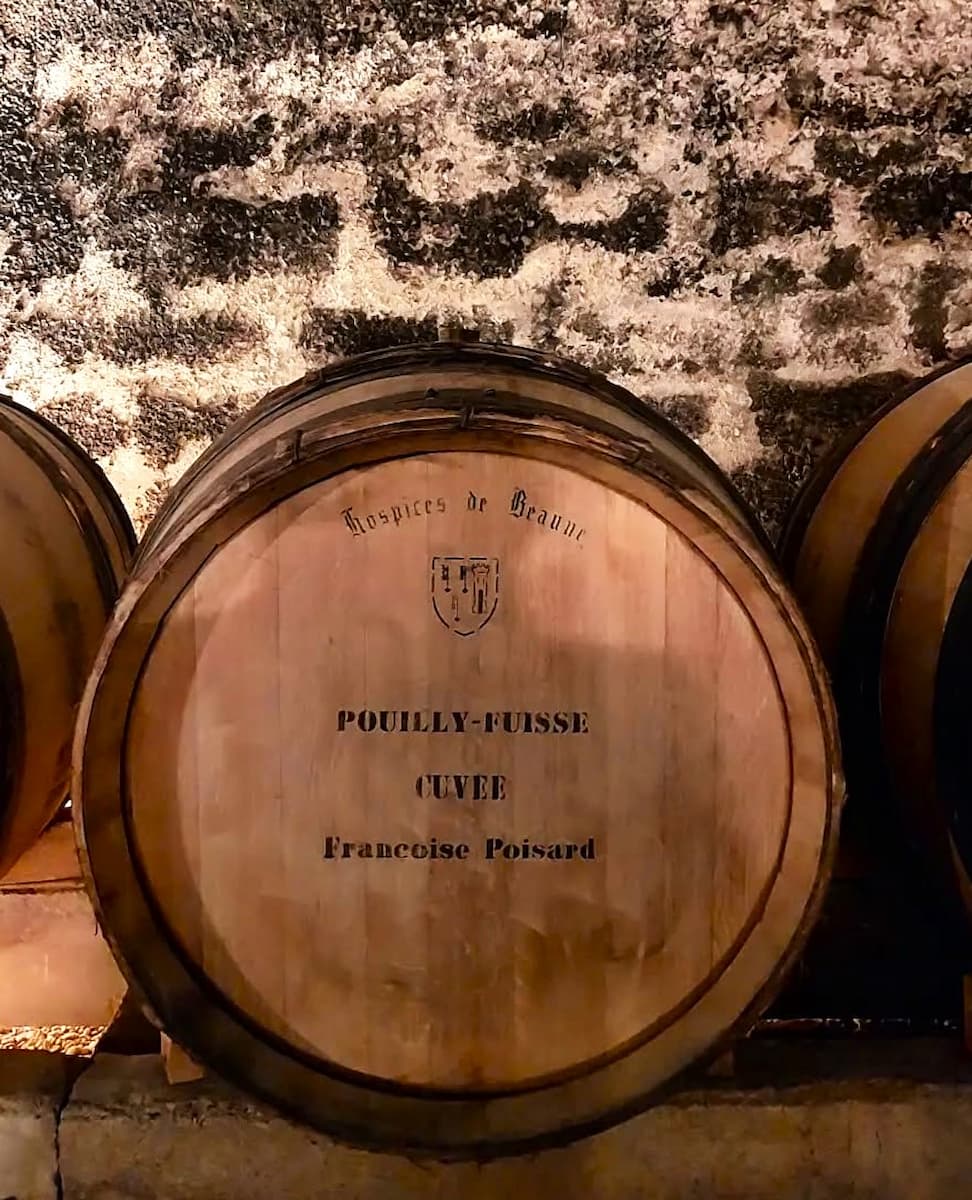
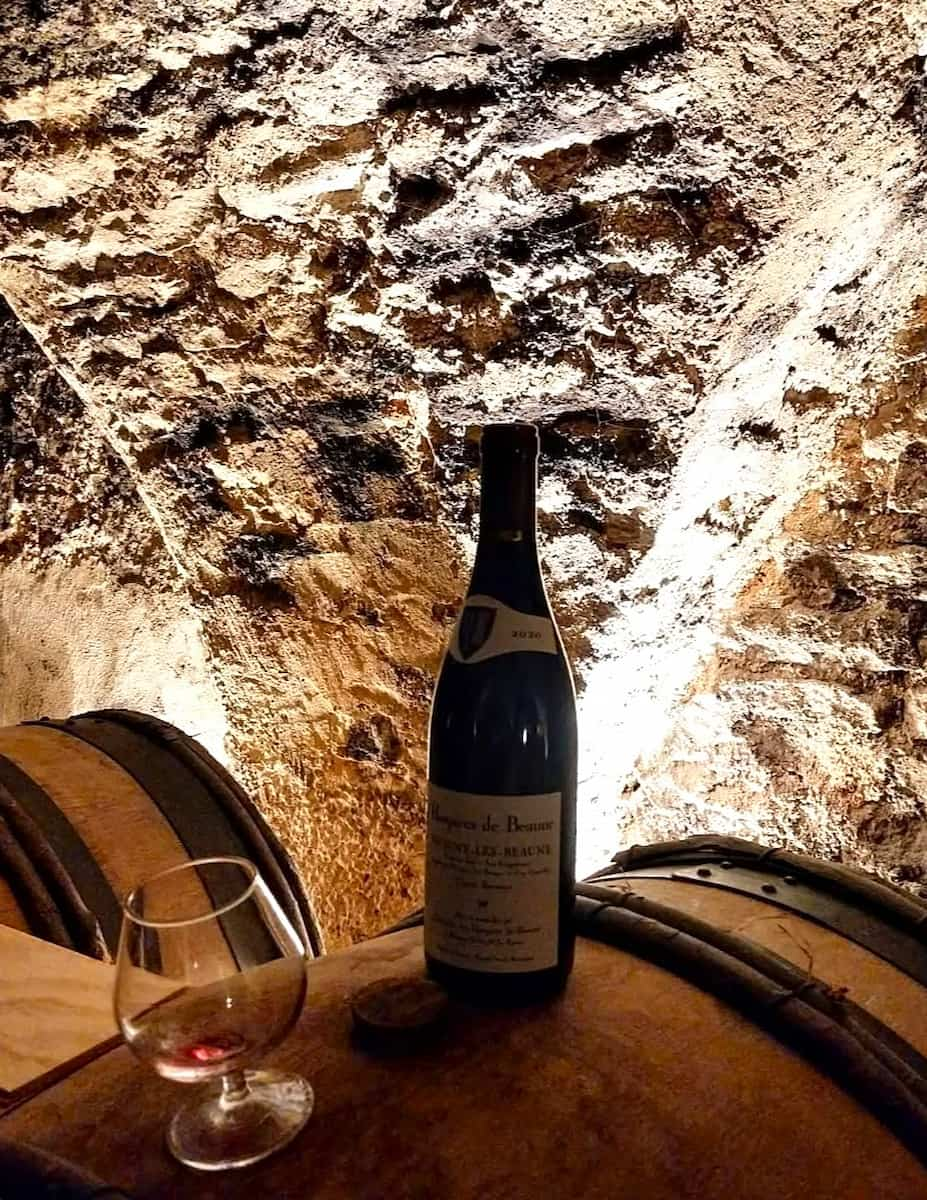
Hall of the Poor. Walking through the impressive 50-meter-long Salle des Pôvres with its oak-panelled ceiling and two rows of beds with crimson curtains, I could almost hear the whispers of patients from centuries past. This grand hall once accommodated up to 30 beds where the poorest citizens received care.
Artistic treasures. The highlight of my visit was undoubtedly Rogier van der Weyden’s Last Judgment polyptych, a masterpiece that once hung above the chapel altar. The museum houses an incredible collection of around 5,000 items including tapestries from Tournai, Brussels and Aubusson.
Medical history. I was fascinated by the collection of historical medical instruments (some quite terrifying!) that showed how healthcare evolved over six centuries. The apothecary with its 130 earthenware pots from the 18th century featuring intriguing labels like “fish glue” and “sowbug powder” was particularly captivating.
Wine connection. The museum reveals how the prestigious Hospices de Beaune wine auction, held every third Sunday of November, has funded hospital care since 1859. This tradition continues today, with proceeds supporting modern healthcare facilities.
| Ticket Type | Price |
|---|---|
| Adult (18+) | €12 (about $13) |
| Students/Jobseekers | €9 (about $10) |
| Youth (10-17) | €5 (about $5.50) |
| Children under 10 | Free |
Opening Hours (April-November):
- 9:00 AM to 7:30 PM daily
- Last entrance 1 hour before closing
⭐ Best Activities
- Guided tour of Marseille – Discover the highlights of Marseille with a knowledgeable guide, starting from Beaune. Perfect for travelers wanting to see the Mediterranean coast in a day.
2. Burgundy Wine Tasting
Wine paradise. Stepping into one of Beaune’s historic cellars, I was immediately enveloped by the cool, earthy aromas that have perfumed these underground labyrinths for centuries. Beaune truly deserves its reputation as the wine capital of Burgundy, with dozens of tasting opportunities ranging from grand maisons to intimate family-run domaines.
Cellar experiences. The largest cellars in Burgundy belong to Patriarche Père et Fils, housed in a former Visitandine convent. Their self-guided tour took me through kilometers of underground passages where I tasted six exceptional Burgundy wines. What impressed me most was the video terminals in nine languages that explained the winemaking process as I wandered through the historic space.
Tasting techniques. During my visit to several domaines, I learned to properly assess Burgundy wines – examining the color against candlelight, swirling to release aromas, and finally savoring the complex flavors that develop across the palate. The sommeliers taught me that Pinot Noir from Côte de Beaune tends to be more elegant and perfumed compared to the more structured wines from Côte de Nuits.
Terroir lessons. What fascinated me most was understanding how dramatically the wines change with just a few meters’ difference in vineyard location. A Premier Cru from one slope can taste completely different from its neighbor, despite identical grape varieties and winemaking techniques – all because of subtle variations in soil, exposure, and drainage.
| Winery | Tasting Fee | Opening Hours |
|---|---|---|
| Patriarche Père & Fils | €20 (6 wines) | 9:30AM-5:00PM daily |
| Maison Louis Jadot | €50 (10 wines) | 3:00PM-7:00PM Tue-Fri, 11:00AM-5:30PM Sat |
| Bouchard Père & Fils | €25 (5 wines) | 10:00AM-6:00PM daily |
⭐ Best Tours
- Individual tasting in Beaune of The Best Of Burgundy wines – Sample a curated selection of Burgundy’s top white and red wines, including Meursault, Chablis Grand Cru, and Corton Grand Cru, at a dedicated tasting shop in Beaune.
- 2-Hour Wine Visit and Tasting in Beaune – Dive into the world of Burgundy wines with a two-hour guided tasting experience in Beaune, ideal for both beginners and enthusiasts.
- One day Private Wine Tour in Côte de Beaune – Enjoy a personalized journey through the Côte de Beaune, visiting exclusive vineyards and tasting prestigious wines with a private guide.
3. Notre-Dame de Beaune Basilica
Architectural gem. Standing before the imposing Notre-Dame de Beaune Basilica, I was struck by its remarkable 12th-century Romanesque façade with that distinctive large shaded porch – unlike anything I’d seen elsewhere in Burgundy. The semicircular arches and high-set windows create a sense of solemn grandeur that has welcomed pilgrims for nearly 900 years.
Historical significance. Walking through the massive wooden doors, I learned that this church transformed Beaune into a major Christian pilgrimage destination. During the Crusades, countless knights and pilgrims stopped here on their journey to Jerusalem. The locals proudly call it the “Daughter of Cluny” due to its architectural inspiration from the famous Benedictine monastery.
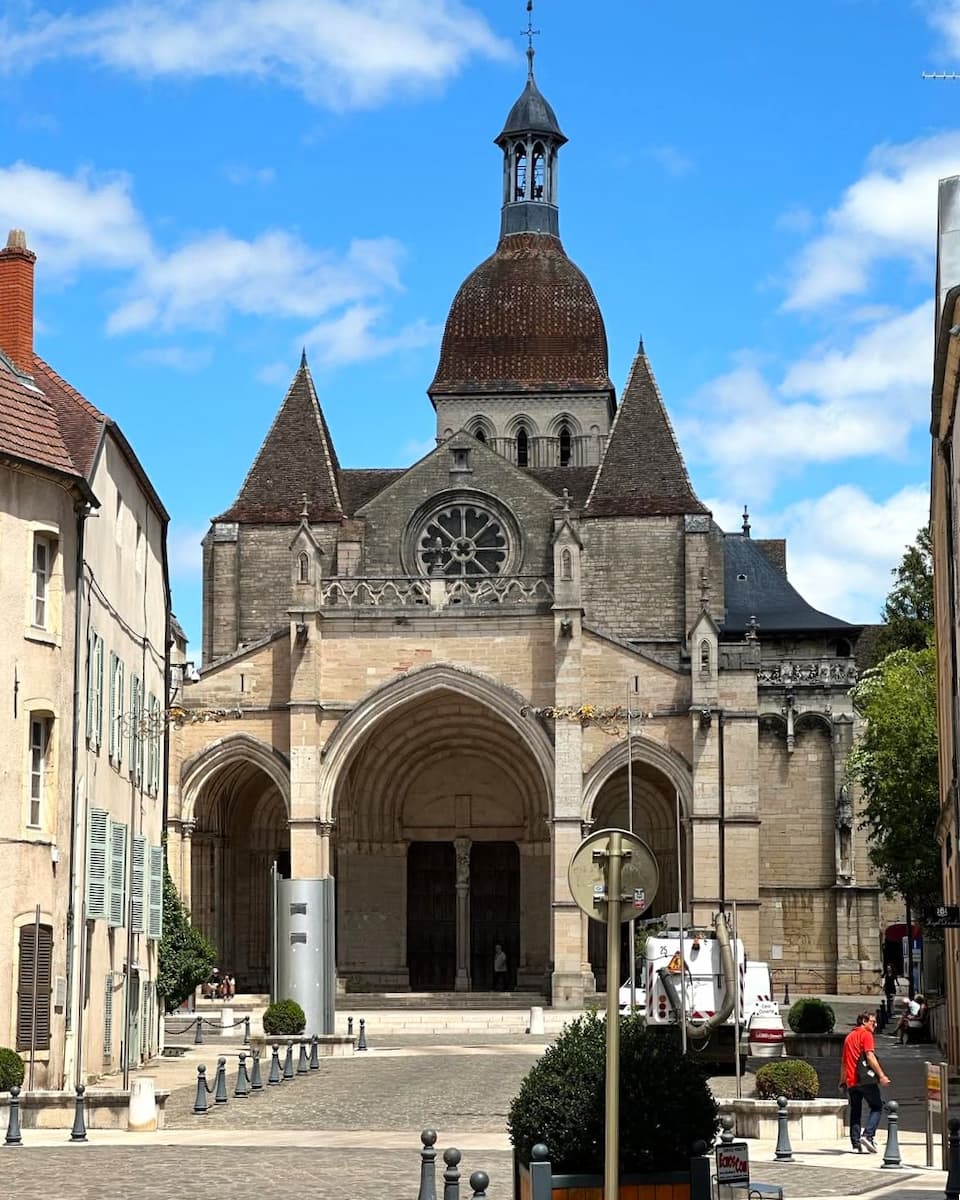
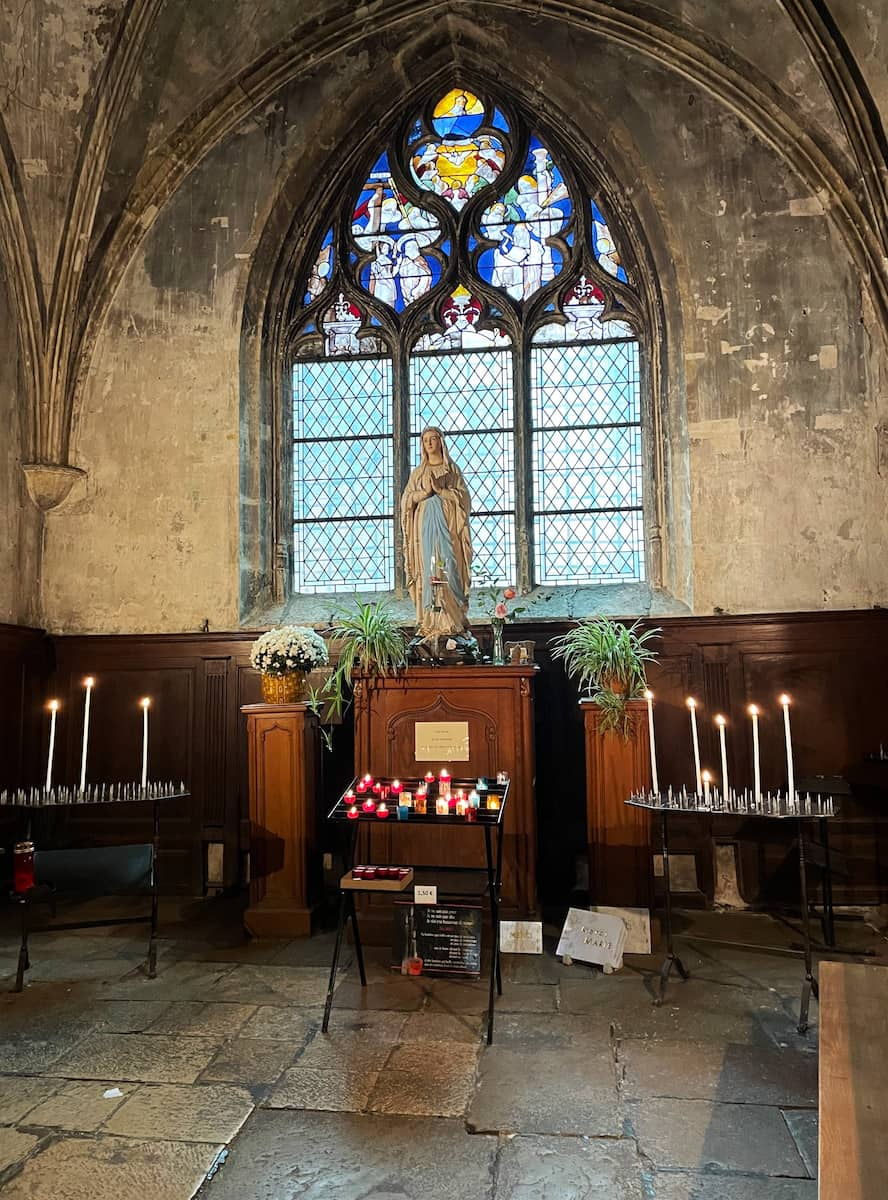
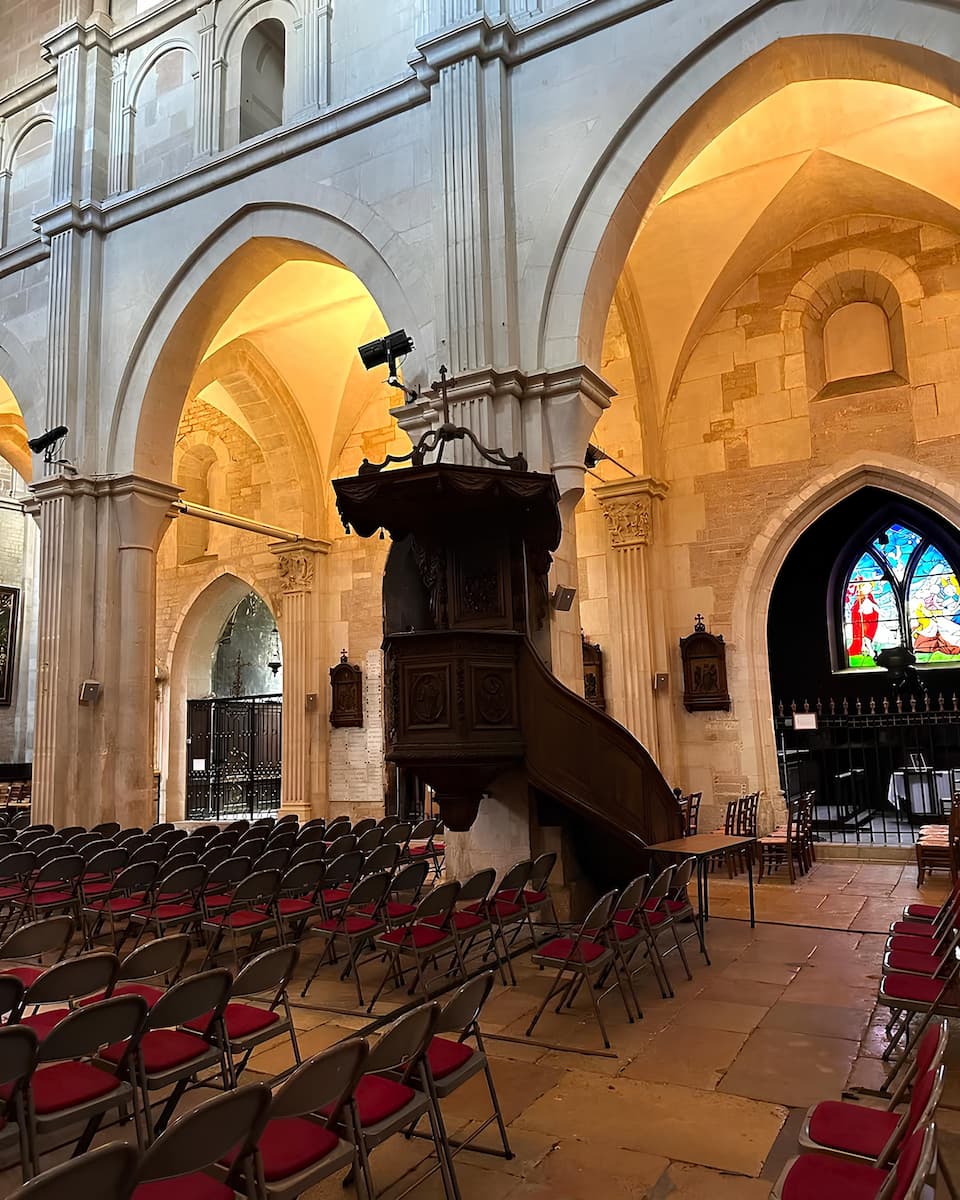
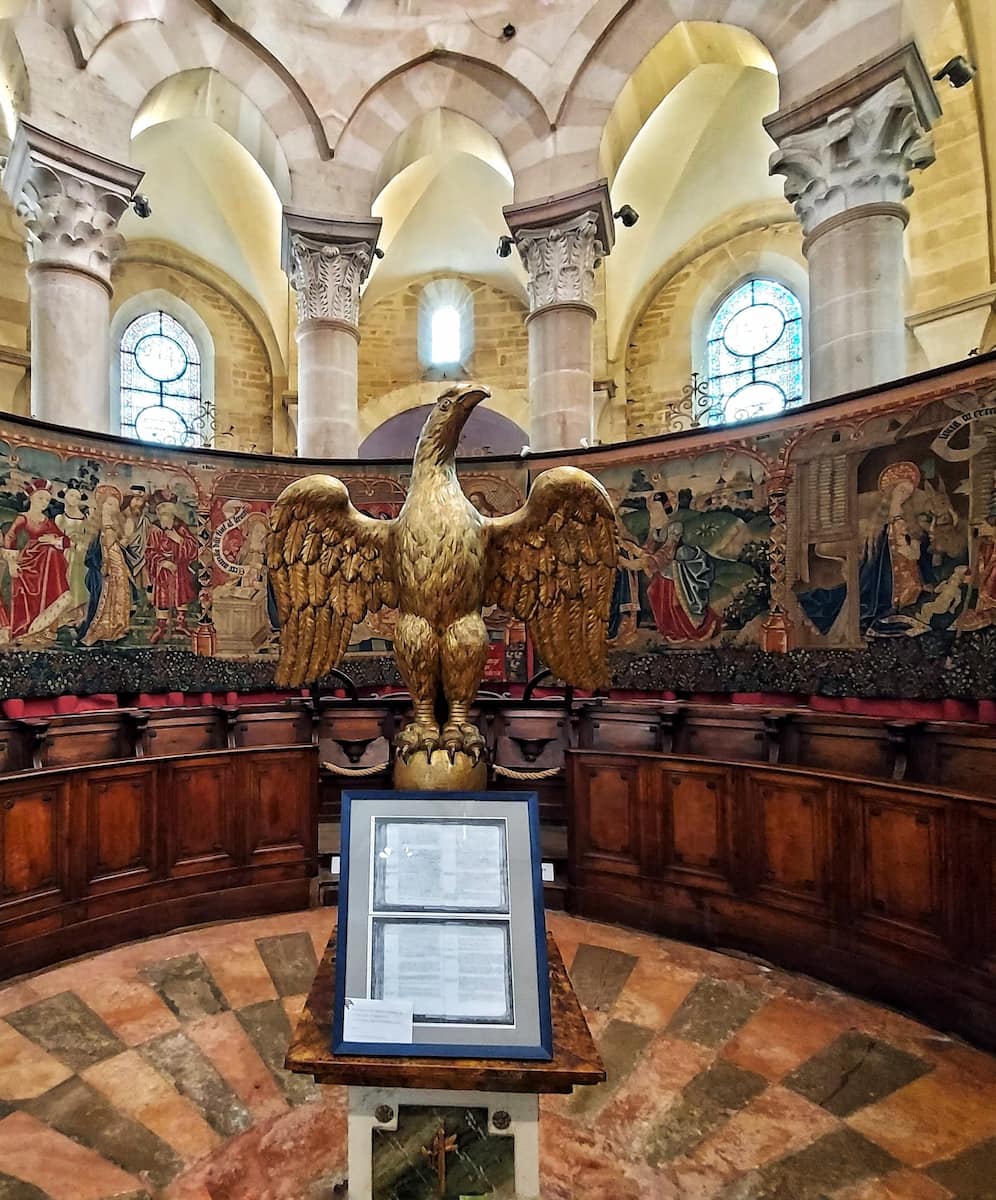
Artistic treasures. The highlight of my visit was undoubtedly the collection of 19 tapestries from the 15th century. Made from silk and wool, they depict pivotal moments from the Virgin Mary’s life with astonishing detail and remarkably vivid colors considering their age. I spent nearly an hour examining the intricate needlework and symbolic imagery.
Gothic additions. My guide pointed out the fascinating architectural evolution of the basilica, particularly the 16th-century Gothic elements that were added later – including the soaring bell tower and chapel. This blend of styles creates a unique harmony that tells the story of changing artistic sensibilities across centuries.
Sensory experience. The most magical moment came when the church bells began to ring, their resonant tones filling the streets of Beaune. Inside, the acoustics amplified their melody, creating an almost otherworldly atmosphere as sunlight filtered through the ancient stained glass, casting colorful patterns across the stone floor.
⭐ Best Activities
- Guided tour Beaune 2h – Explore Beaune’s medieval streets, historic sites, and local secrets on this two-hour guided walking tour.
4. Fallot Mustard Mill
Mustard heritage. Visiting La Moutarderie Fallot was a revelation – the last family-owned mustard mill in Burgundy still using traditional stone grinding methods. I chose the “Sensations Fortes” tour that took me into the heart of production, where the pungent aroma of freshly ground mustard seeds made my eyes water in the most delightful way.
Production secrets. Watching the massive stone grindstones slowly turning, I learned that this traditional method preserves volatile compounds that give Fallot mustards their distinctive intensity. Unlike industrial producers, they grind slowly at low temperatures, ensuring the seeds never overheat and lose their essential oils and flavors.
Cultural insights. I was fascinated to learn about mustard’s deep connection to Burgundy’s history. The French word “moutarde” derives from “Moult me tarde” (“Much I desire”), the motto of the Dukes of Burgundy. Since 1390, mustard makers in Dijon have been regulated to ensure quality and authenticity – centuries before modern food standards existed.
| Tour Type | Price | Duration |
|---|---|---|
| Découvertes (History) | €12 | 45 minutes |
| Sensations Fortes (Production) | €12 | 1 hour |
| Children (10-17) | €9 | Same as above |
| Children under 10 | Free | Same as above |
Visitor tips:
- Tours in English are available at specific times – check their website
- The boutique is open daily from 9:30AM to 6:00PM
- Free tastings at the end of every tour
- Book ahead during summer months
- Located at 31 rue du Faubourg Bretonnière, Beaune
5. Burgundy Wine Museum
Historical treasures. Housed in the former Hôtel des Ducs de Bourgogne, the Burgundy Wine Museum captivated me with its extraordinary collection of over 600 artifacts spanning centuries of winemaking history. The picturesque mansion with its pointed turrets and flower-filled window boxes is worth admiring before you even step inside.
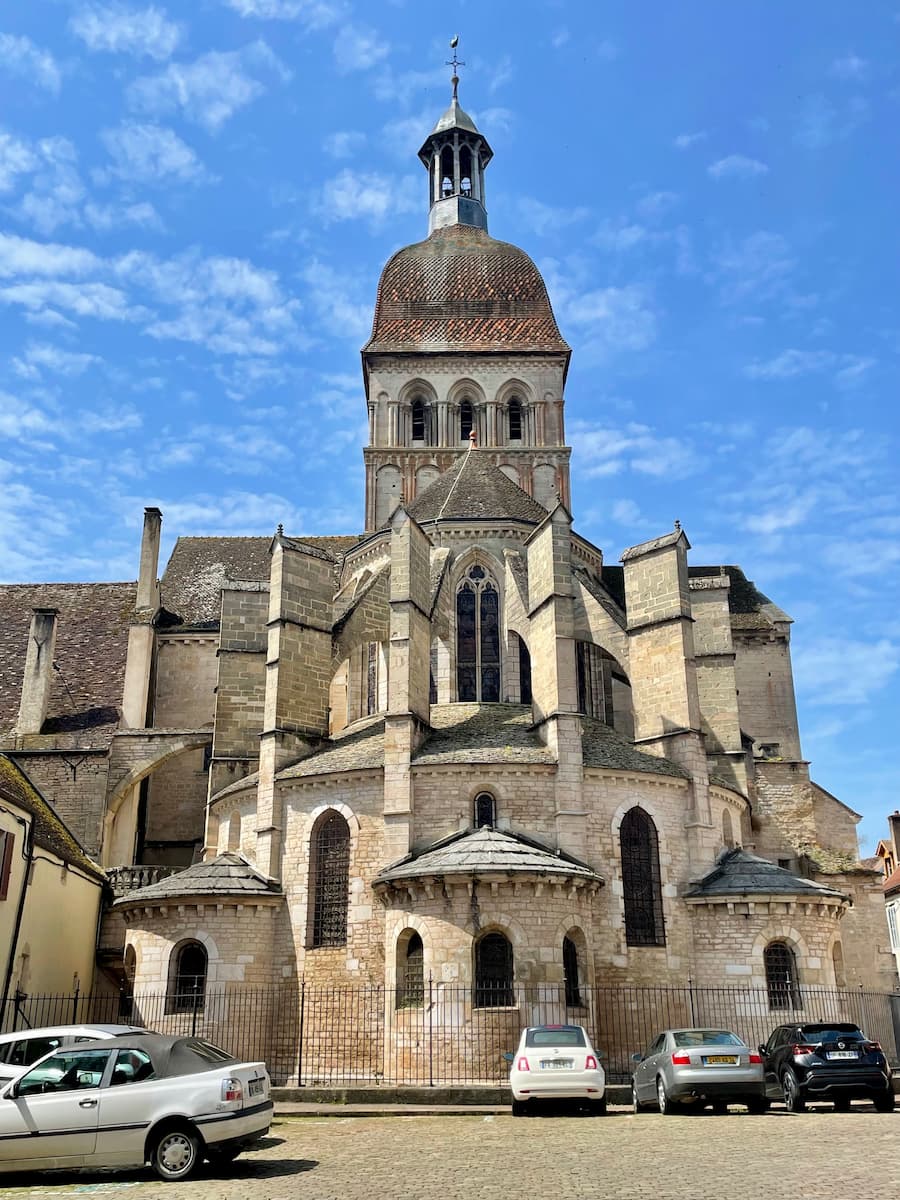
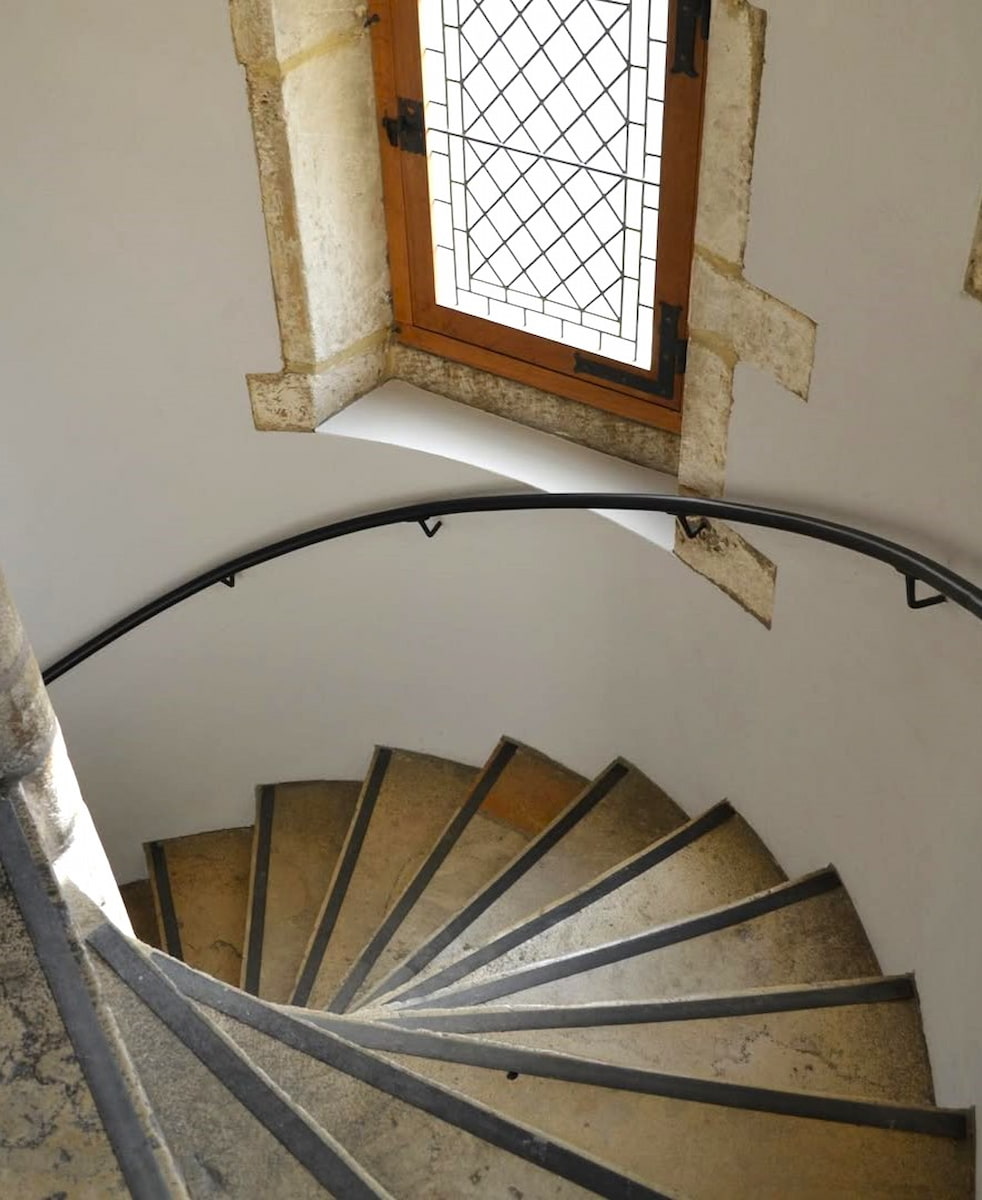
Ancient techniques. The collection of wine presses dating from the 16th to 19th centuries gave me a profound appreciation for the evolution of winemaking technology. I was particularly drawn to the massive wooden presses that required multiple people to operate – a stark contrast to today’s precision equipment. The 2nd-century frieze depicting early winemaking practices was a powerful reminder of how deeply this tradition is woven into European culture.
Glassware evolution. One fascinating exhibit explored how wine glass design has evolved specifically to enhance the appreciation of Burgundy wines. I learned that everything from glass thickness and color to bowl shape and size dramatically affects how we perceive a wine’s aromas and flavors – something I’ll certainly remember during my next tasting.
UNESCO connection. The museum does an excellent job explaining the unique character of Burgundy’s vineyard “climats” – the precisely delineated plots that have earned UNESCO World Heritage status. Through interactive displays, I gained a deeper understanding of how these small parcels, some just a few meters wide, produce wines with dramatically different personalities.
Ambassadors’ legacy. The final room on my tour was the Ambassadors’ Room, named for the post-WWII fraternity founded to promote French wines globally. The highlight was Jean Lurçat’s magnificent tapestry featuring the organization’s emblem – a proud Gallic rooster. Though the group disbanded in the 1970s, their efforts helped establish Burgundy’s wines among the world’s most prestigious.
| Ticket Type | Price |
|---|---|
| Adult | €6 |
| Reduced Rate | €4 |
| Guided Tour | Additional €5 |
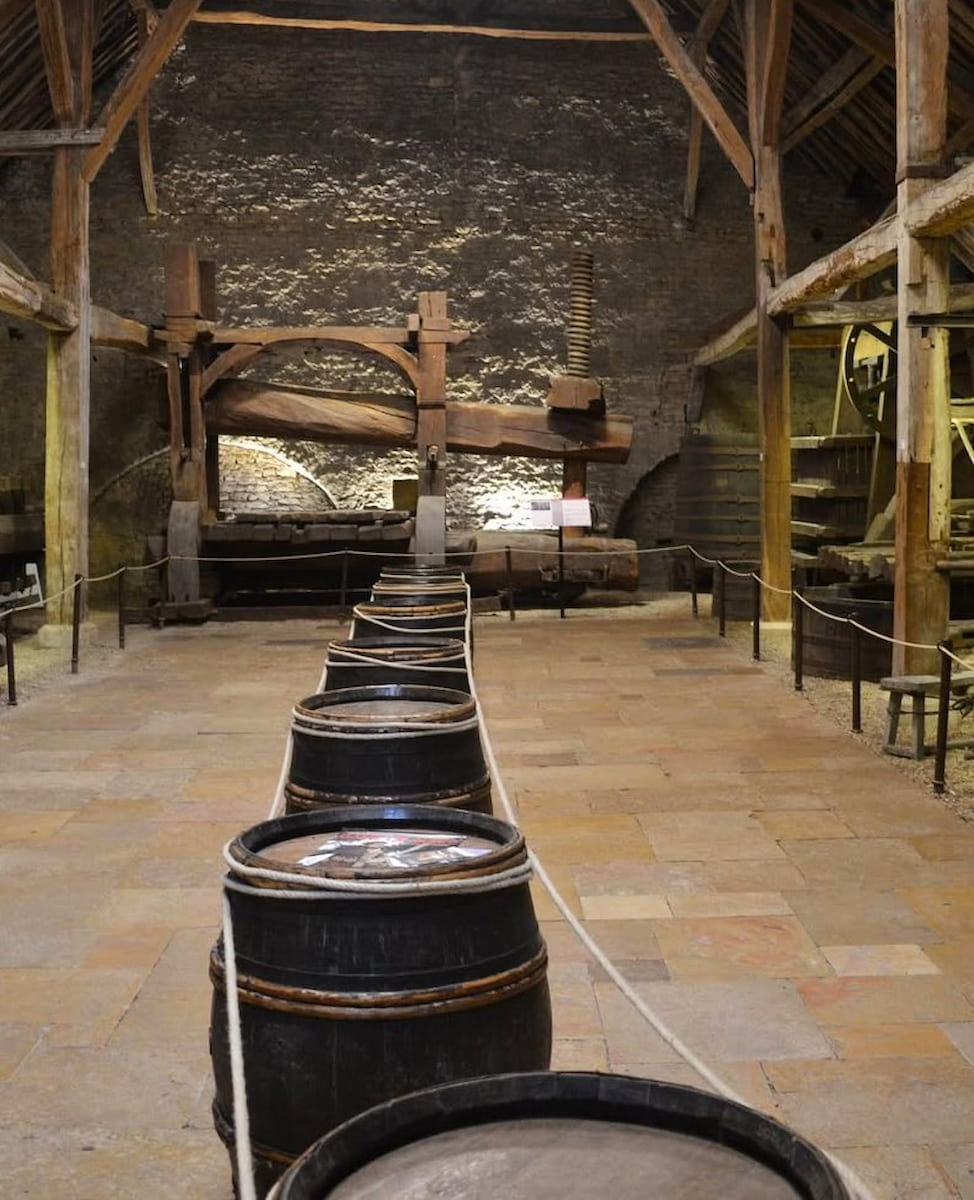
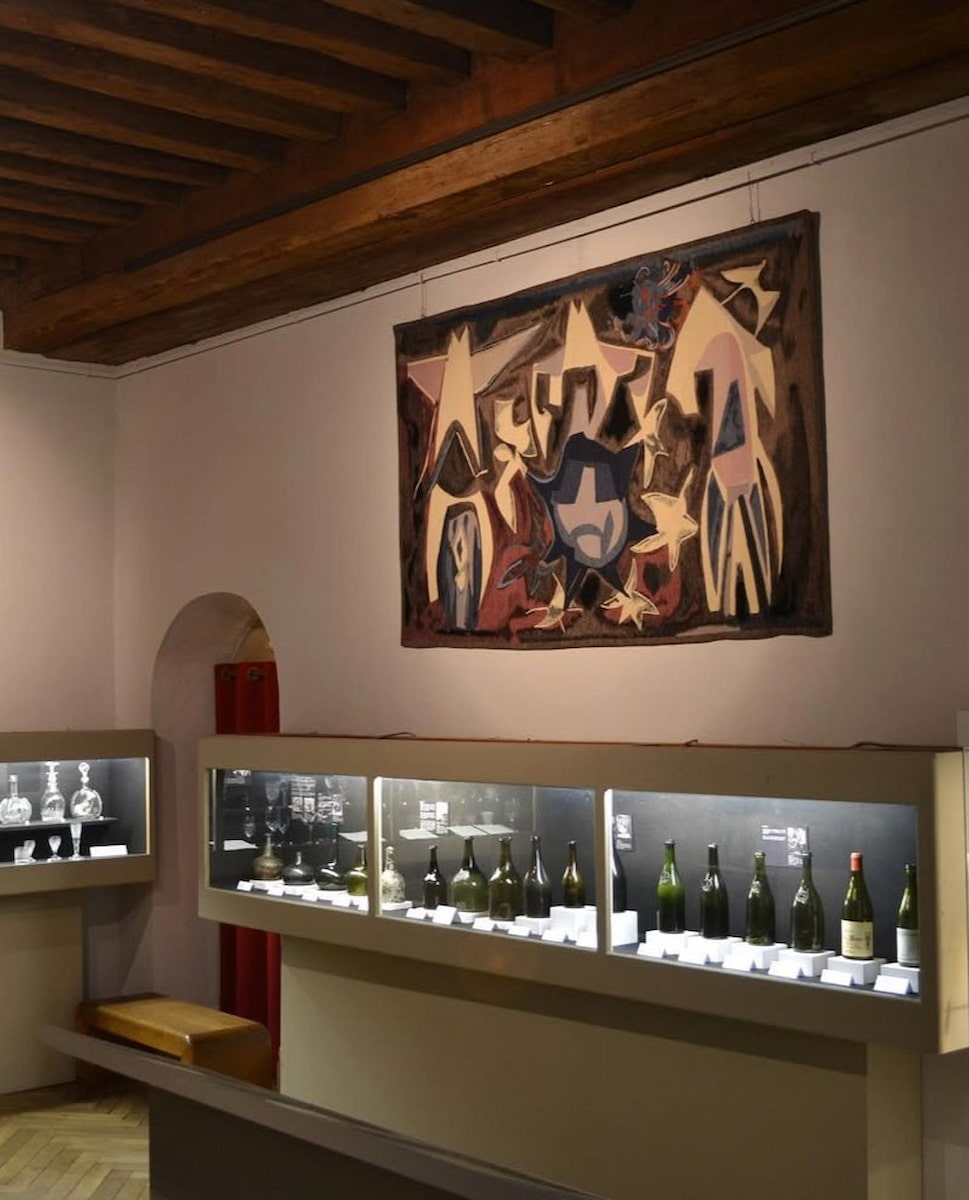
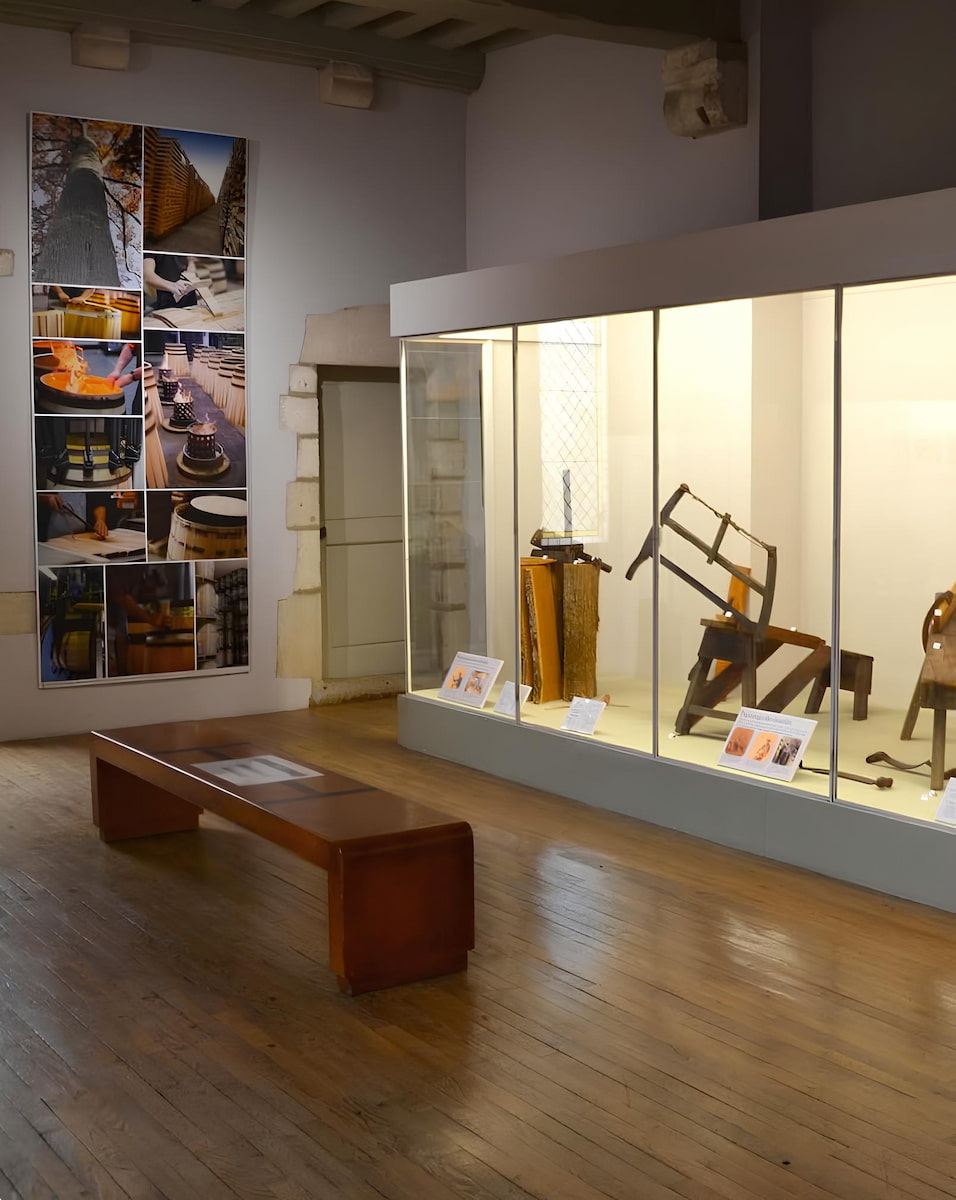
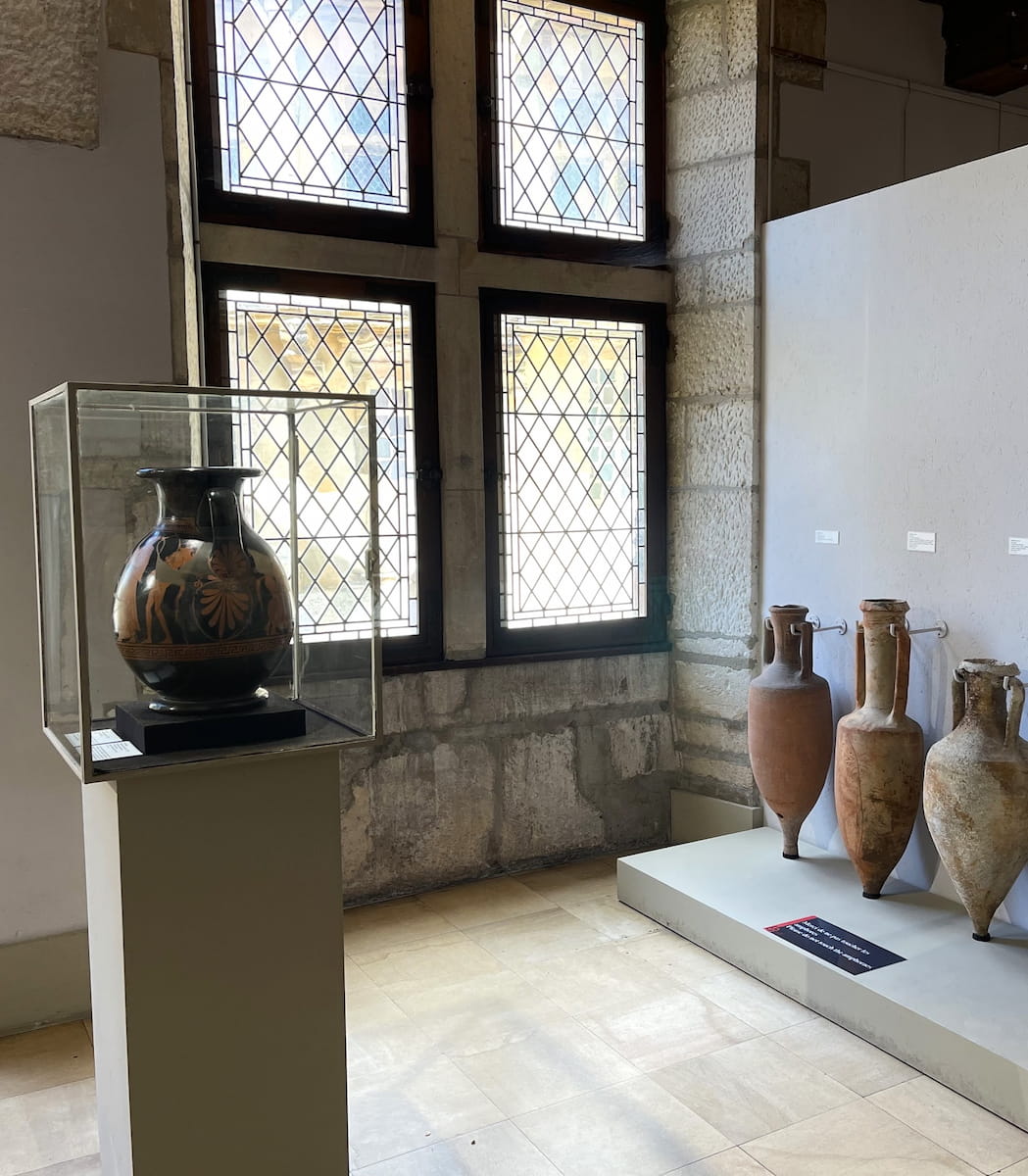
Opening Hours (March 21 – September 21):
- Monday, Wednesday-Sunday: 10:00AM-1:00PM, 2:00PM-6:00PM
- Tuesday: Closed
- Winter schedule (limited hours): Saturday-Sunday only
⭐ Best Activities
- Avignon and Pont du Gard Tour – Travel from Beaune to the south of France to marvel at Avignon’s Papal Palace and the ancient Roman aqueduct, Pont du Gard.
6. Place de la Halle Market
Market magic. Arriving at Place de la Halle on Saturday morning, I was immediately swept up in the vibrant energy of Beaune’s famous market. Local farmers proudly displayed mountains of seasonal produce – from jewel-toned berries in summer to earthy mushrooms in autumn. The colors, aromas, and animated conversations created a sensory feast that epitomizes French market culture.
Gourmet paradise. Inside La Halle (the covered section), I discovered an incredible selection of regional cheeses, including aged Comté that had been matured for three years. The butchers offered everything from succulent Bresse chicken to local charcuterie, while dairy vendors sold farm-fresh yogurts and fromage frais that bear no resemblance to commercial versions – creamy, tangy, and alive with flavor.
Artisanal treasures. Beyond food, the market featured local artisans selling handcrafted soaps, honey, jams, and even truffles. I was particularly drawn to a knife maker with exquisite handmade blades and a chocolatier creating beautiful confections that make perfect gifts. The prices were often better than in the tourist shops, and the quality was exceptional.
Local interactions. What made the experience special was chatting with the vendors, many of whom have been selling at this market for generations. They were eager to share stories about their products, offer samples, and provide cooking suggestions. One elderly cheese vendor insisted I try three different ages of the same cheese to appreciate how the flavors develop over time.
Practical approach. I arrived early (around 8:30AM) to avoid the crowds and brought my own shopping bag. By mid-morning, the market was bustling with both locals and tourists. For the best experience, I recommend wandering the entire market first to survey what’s available before making purchases, then stopping at one of the nearby cafés to watch the market scene unfold over coffee.
My tips:
- Market day is Saturday (some vendors also appear on Wednesday)
- Arrive before 9:00AM for the best selection
- Bring cash as not all vendors accept cards
- Don’t be afraid to ask for samples before buying
- Perfect for assembling a picnic to enjoy in Parc de la Bouzaize
⭐ Best Activities
- Beaune Historic Guided Walking Tour – Uncover Beaune’s rich history and architectural gems with a local guide on this immersive walking tour.
7. Château de Savigny-lès-Beaune
Medieval marvel. Just a short drive from Beaune, I discovered the magnificent Château de Savigny-lès-Beaune standing proudly amid its 12-hectare estate. Built in 1340 for Duke Eudes, this fortress has witnessed centuries of Burgundian history, including being dismantled in 1478 during Louis XI’s invasion in his struggle against Mary of Burgundy.
Unexpected collections. What makes this château truly extraordinary are its surprising museums. Inside, I found one of France’s most important motorcycle collections and an impressive array of vintage aircraft. The highlight for me was the collection of Fiat Abarth prototypes and historic racing cars – including one that belonged to Chanoine Kir, the famous Mayor of Dijon (and namesake of the Kir cocktail).
Wine connection. The “Dégustation Découverte” experience in the château’s tasting pavilion offered me a chance to sample three appellations for €10. The wines are produced from the estate’s vineyards that surround the château in a bucolic setting. The combination of historical architecture, vintage collections, and wine tasting creates a uniquely Burgundian experience.
Photographic opportunities. The château’s picturesque setting, with its river crossing the estate (once feeding the fortress moat), provided countless perfect photo opportunities. The contrast between medieval architecture and the unexpected vintage collections makes this an Instagram-worthy destination that goes beyond the typical château visit.
| Season | Opening Hours |
|---|---|
| Oct 27 – Mar 29 | 10:00AM-5:30PM (closed Tuesdays) |
| Mar 30 – Oct 26 | 9:00AM-6:30PM daily |
8. Parc de la Bouzaize
Green retreat. Just outside Beaune’s ancient ramparts, I discovered the peaceful 5-hectare Parc de la Bouzaize built around a natural spring. After days of wine tasting and historical sightseeing, this lush park offered a welcome respite with its towering trees, flowering gardens, and tranquil pond teeming with ducks and geese.
Water features. The centerpiece of the park is undoubtedly the large pond where visitors can rent rowboats for a leisurely paddle. I spent a delightful hour on the water, gliding under weeping willows and watching waterbirds go about their business. The source of the Bouzaize river creates a constant gentle soundtrack of flowing water throughout the park.
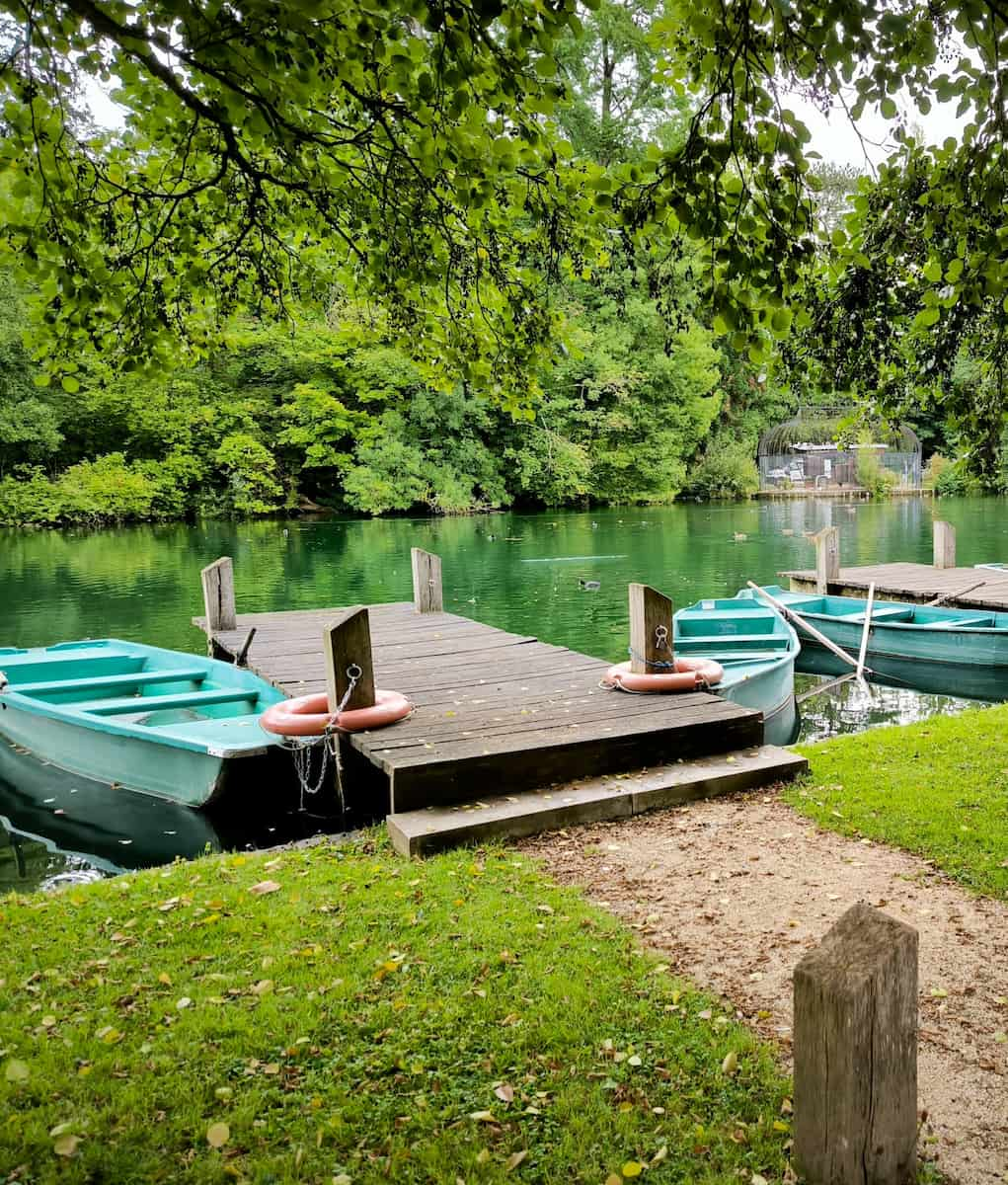
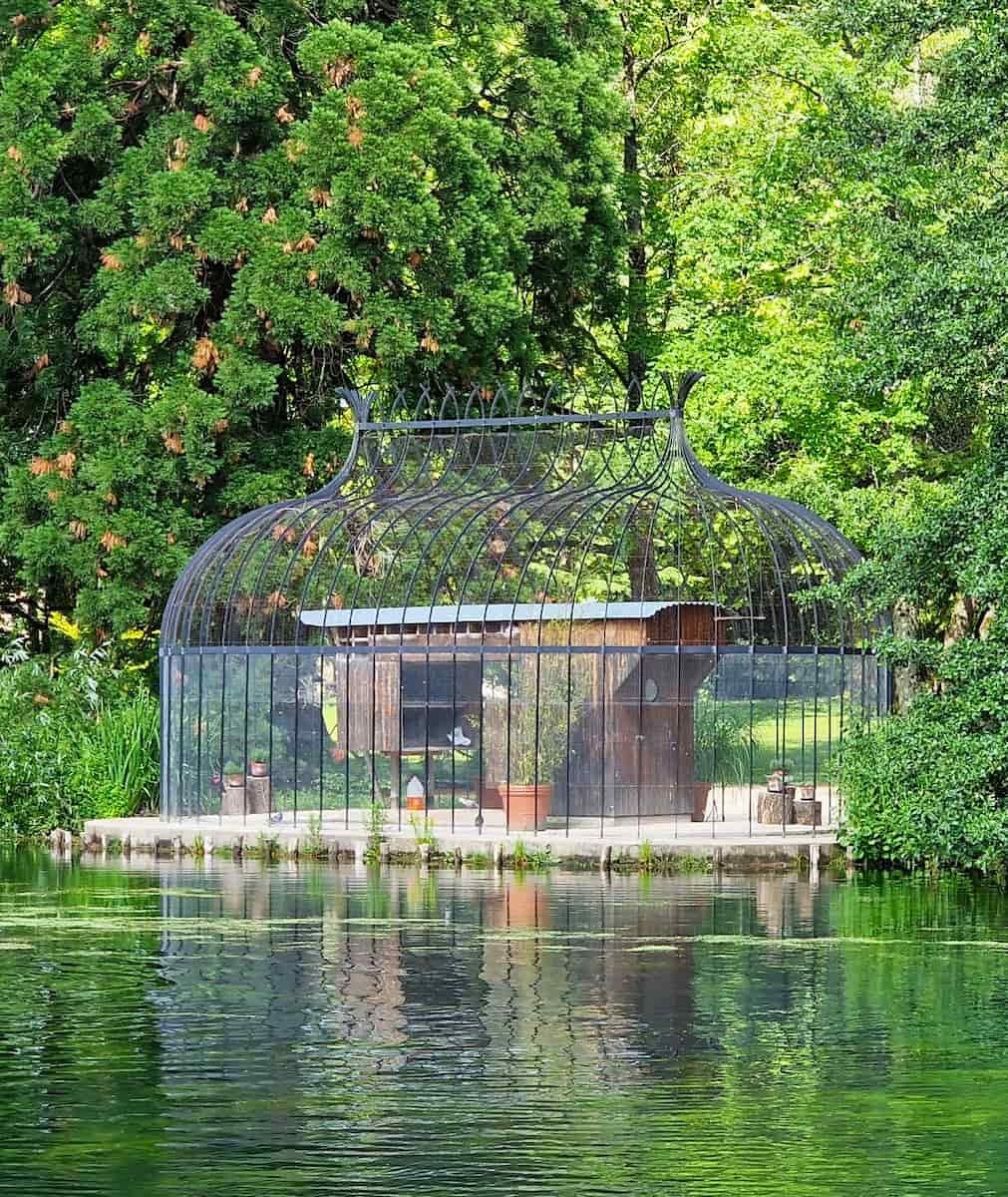
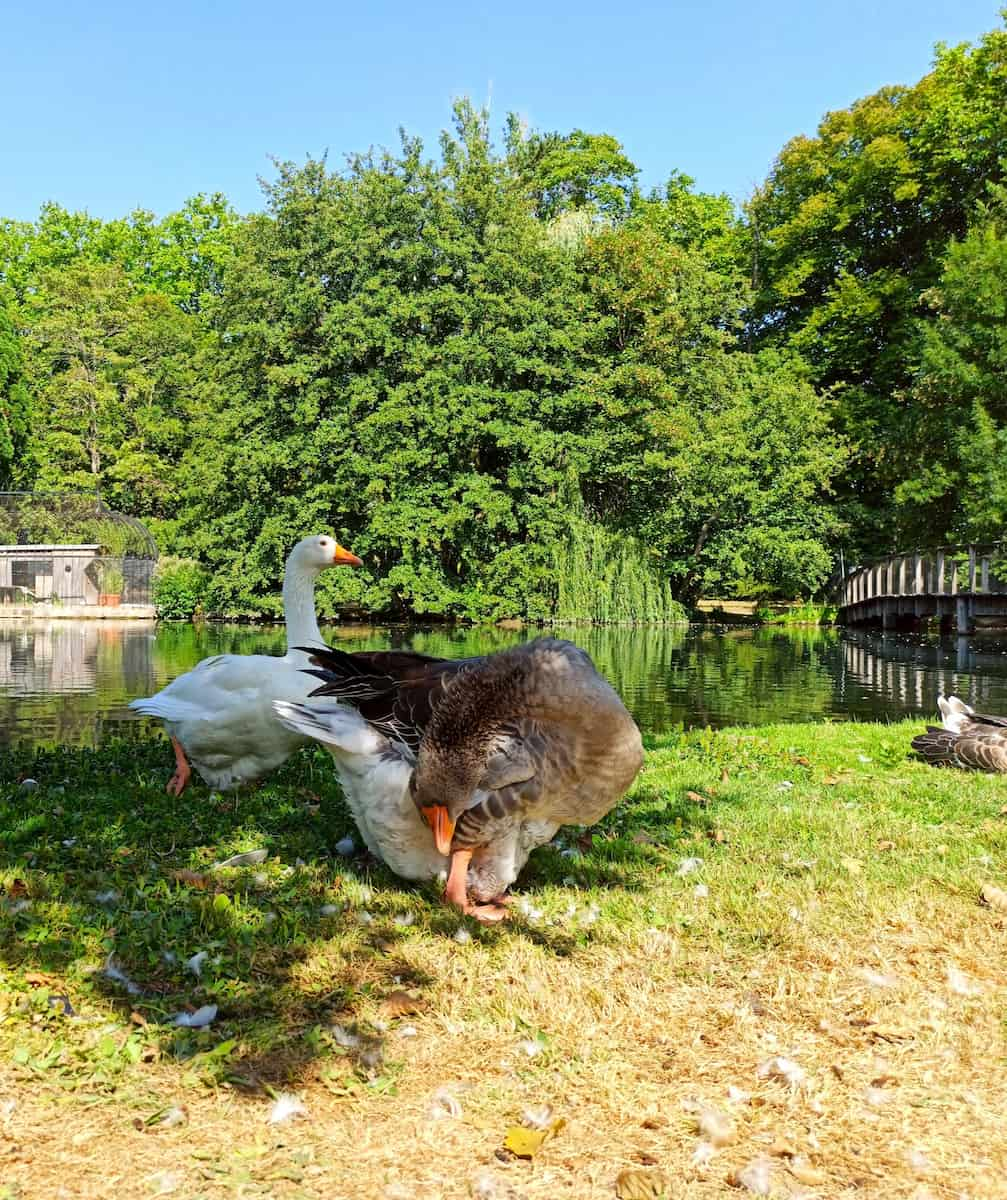
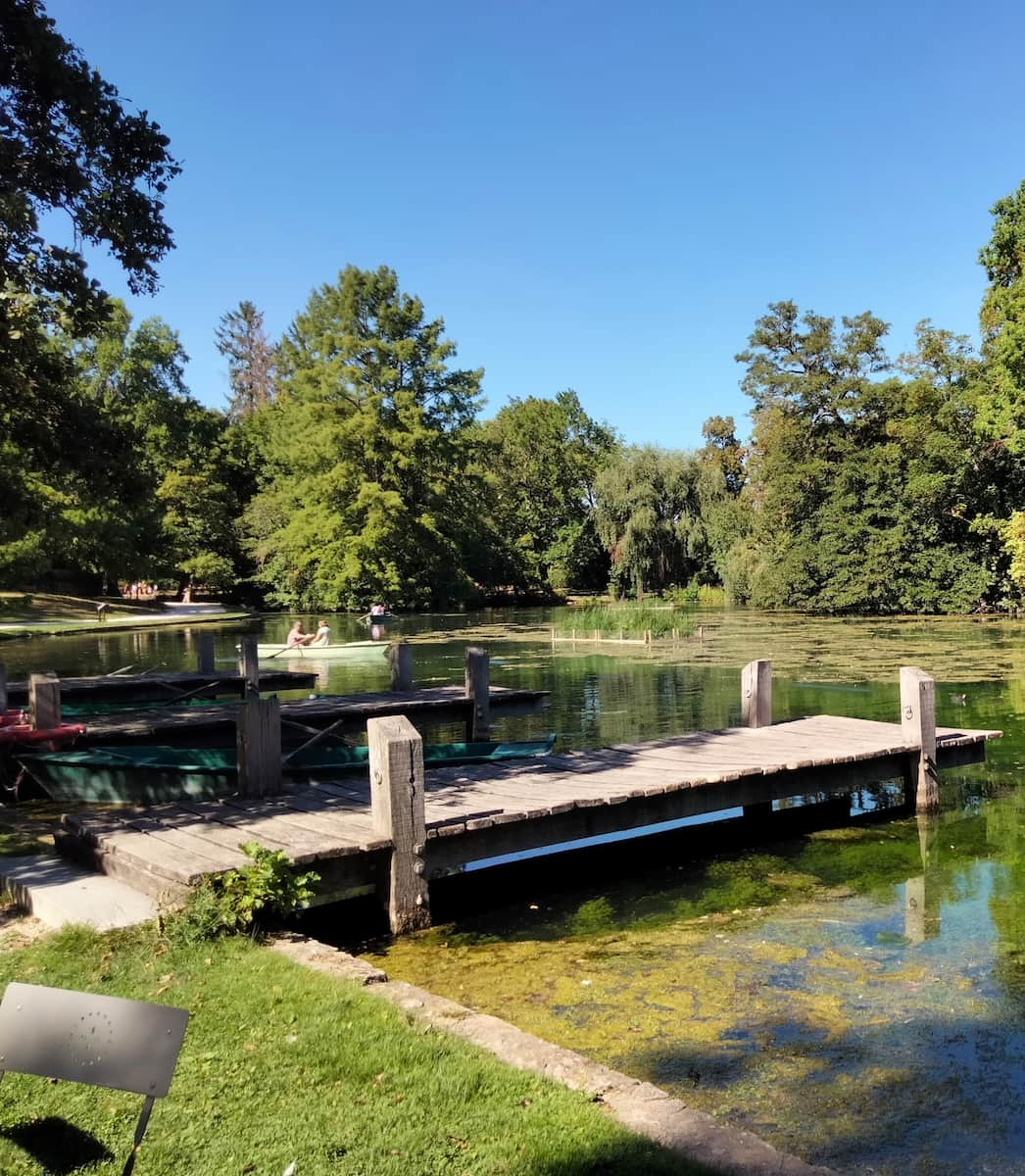
Nature education. Throughout the park, informative signs identify the various species of trees, plants, and birds you might encounter. This educational aspect makes it more than just a pretty space – it’s a chance to learn about the region’s natural heritage. The small animal park with its friendly residents delighted both children and adults alike.
Artistic elements. Near where the river resurges, I discovered a beautiful bronze nude sculpture by Belgian artist Irénée Duriez called “Béléna” – named after the spring in the town center that gave Beaune its name. This artistic touch adds cultural significance to the natural beauty of the setting.
| Activity | Price | Hours |
|---|---|---|
| Park Entry | Free | 8:00AM-9:00PM daily |
| Rowboat Rental | €5 for 30 minutes | 10:00AM-6:00PM (Apr-Oct) |
| Carousel | €2 per ride | Varies seasonally |
9. Maison Louis Jadot Cellar Tour
Wine legacy. My private tour of Maison Louis Jadot began at their impressive facility on Route de Savigny, where I learned this prestigious wine house has been crafting exceptional Burgundies since 1859. Despite its modern exterior, stepping through the arched entrance revealed a world where tradition and innovation harmoniously coexist.
Production scale. The sheer magnitude of their operation astounded me – they control an enormous 270 hectares of vineyards throughout Burgundy. In the red vinification hall, rows of massive oak and stainless steel tanks stretched before me, each playing a crucial role in creating Jadot’s distinctive style that balances power with elegance.
Cellar depths. Descending 30 meters underground, I entered the cool, dimly lit Grand Cru cellar where the most prestigious wines mature in French oak barrels. The limited number of barrels – sometimes just five for certain Grand Crus – highlighted the exclusivity of these wines, which are typically sold out long before official release. The immaculate cleanliness of the facility impressed me as much as the wines themselves.
Tasting expertise. The highlight was undoubtedly the tasting led by a WSET-certified sommelier who guided me through ten exceptional wines. I particularly appreciated learning about Jadot’s unique approach to white wines, where they often partially block malolactic fermentation to preserve acidity and finesse – a technique that gives their Chardonnays remarkable aging potential.
Personal touches. What made the experience special was the intimate, customized nature of the tour. Rather than a scripted presentation, my guide tailored the experience to my interests and knowledge level. This personalized approach, combined with the opportunity to taste wines directly from the barrel, created memories that will last far longer than the bottles I purchased.
| Tour Type | Price | Duration |
|---|---|---|
| Standard Cellar Tour | €50 | 1.5 hours |
| Hospices de Beaune Special | €50 | 1.5 hours |
| Private Tastings | Varies | 1-2 hours |
Opening Hours:
- Monday-Friday: 3:00PM-7:00PM
- Saturday: 11:00AM-5:30PM
- Sunday: Closed
10. Beaune Old Town
Medieval charm. Wandering through Beaune’s Old Town felt like stepping back in time, with its narrow cobblestone streets lined with half-timbered houses and elegant stone mansions. Unlike many medieval towns that feel like museums, Beaune pulses with authentic daily life – locals shopping at specialty stores, friends meeting at cafés, and wine merchants going about their centuries-old trade.
Architectural diversity. What struck me most was the harmonious blend of architectural styles spanning several centuries. From 15th-century merchants’ houses with their distinctive Burgundian glazed tile roofs to elegant 18th-century townhouses with wrought-iron balconies, each building tells a chapter of Beaune’s prosperous history as a center of wine commerce.
Hidden courtyards. Some of my most delightful discoveries came from following narrow passages that opened unexpectedly into tranquil courtyards. Behind an unassuming doorway on Rue Maizières, I found a secret garden with a 16th-century well and climbing roses – one of many private spaces that reveal themselves to curious explorers willing to venture beyond the main streets.
Culinary scene. Beaune’s compact center houses an impressive concentration of excellent restaurants and specialty food shops. I spent a morning exploring fromageries with wheels of aged Époisses, charcuteries offering jambon persillé (parsley-flecked ham terrine), and patisseries displaying golden-crusted pain d’épices. The Old Town is a paradise for food lovers seeking authentic Burgundian flavors.
Evening atmosphere. As twilight descended, the medieval streets took on a magical quality as warm light spilled from restaurant windows and subtle illumination highlighted historic facades. With fewer tourists around, this became my favorite time to absorb the authentic atmosphere of this ancient wine capital – perhaps with a glass of local Pinot Noir at one of the intimate wine bars tucked away on side streets.
Practical tips:
- The tourist office on Avenue de la République offers excellent walking tour maps
- Visit early morning or evening to avoid day-tripping crowds
- Look up to appreciate architectural details above street level
- Many shops close between 12:00PM-2:00PM for lunch
Things to Do in Beaune France with Kids
1. Beaune Visiotrain
Effortless exploration. I hopped aboard the charming Visiotrain departing from rue de l’Hôtel-Dieu and settled in for a delightful 40-minute journey through Beaune. This little tourist train proved to be the perfect introduction to the city, especially after a morning of walking wine cellars. My tired feet were grateful for the break while my curiosity remained fully satisfied.
Comprehensive commentary. The audio guide provided fascinating insights into Beaune’s history and culture in ten different languages. I chose English, but was impressed to hear they offer everything from Japanese to Russian and Portuguese. The narration perfectly synchronized with our route, highlighting architectural details I might have missed while walking.
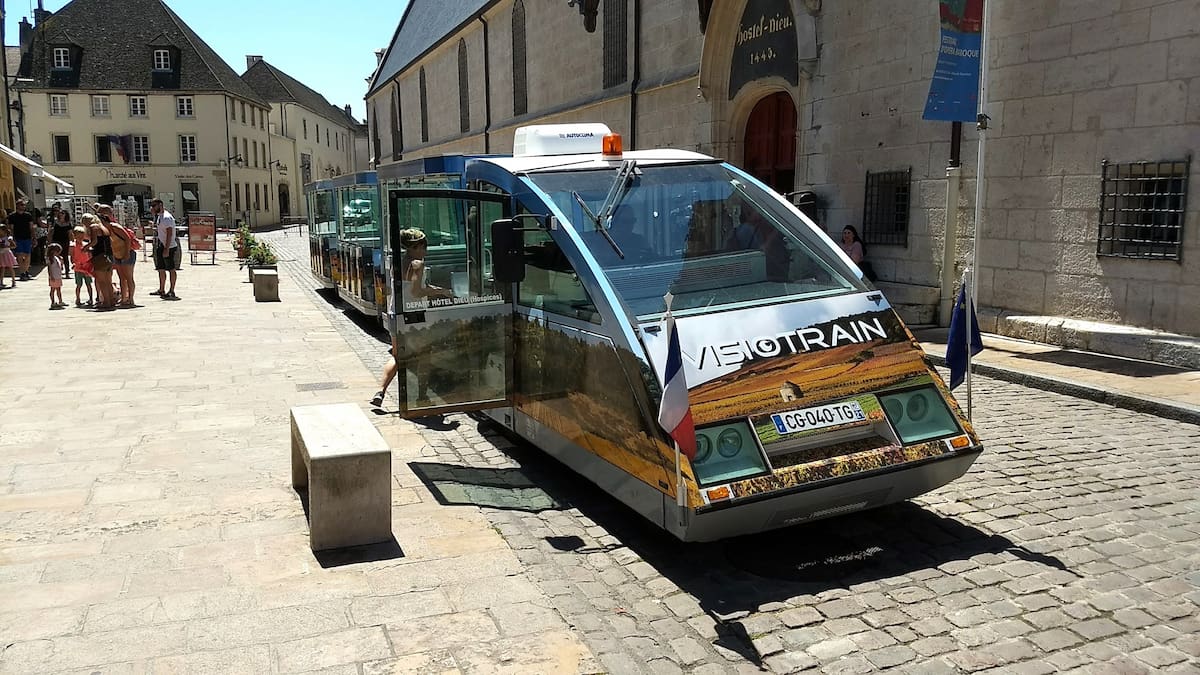
Vineyard views. What surprised me most was how the route extended beyond the old town and into the surrounding vineyards. Seeing the famous Burgundy slopes from this perspective gave me a better understanding of the region’s terroir. The gentle climb offered spectacular panoramic views of Beaune’s terracotta rooftops against the backdrop of endless vine rows.
Time-saving solution. For families with young children or anyone with limited mobility, the Visiotrain offers an ideal solution. At just €10 for adults and €6 for children, it’s an affordable way to experience the highlights of Beaune without the physical strain of walking the entire historic center.
Visiotrain route highlights:
- Hospices de Beaune (Hôtel-Dieu)
- Notre-Dame Basilica
- Place Carnot and the market hall
- The surrounding vineyards with panoramic views
- Historic wine merchants’ houses
- The Burgundy Wine Museum
2. Parc de la Bouzaize Playground
Children’s paradise. The playground at Parc de la Bouzaize quickly became my nephew’s favorite spot in Beaune. Designed specifically for children aged 5 to 12, the play area features modern equipment that blends harmoniously with the park’s natural setting. I watched as kids climbed, slid, swung, and balanced their way through the various structures, their laughter adding to the park’s cheerful atmosphere.
Inclusive design. What particularly impressed me was the thoughtful accessibility features. Several play elements are specifically designed for children in wheelchairs, making this a truly inclusive space where all kids can participate. The smooth pathways throughout the playground area ensure easy navigation for strollers and wheelchairs alike.
Water play zone. The highlight for most children seemed to be the water animation area with its creative labyrinth, fountains, and jets. On a warm spring afternoon, kids squealed with delight as they ran through sprays of water and vapor. Parents sat nearby on comfortable benches, enjoying the shade of mature trees while keeping an eye on their little ones.
Natural surroundings. Unlike many urban playgrounds, this one benefits from its integration into the larger 5-hectare park. Children can take breaks from playing to feed the ducks at the nearby pond or visit the small animal park just steps away. This connection with nature adds an educational dimension to what might otherwise be just physical play.
Refreshment options. The convenience of having a small bar near the playground meant parents could grab cold drinks or ice cream without having to pack up and leave. This thoughtful addition made it easy to extend our visit when my nephew inevitably begged to stay “just a little longer” as the afternoon stretched on.
Playground features:
- Climbing structures for different age groups
- Accessible play equipment for children with mobility challenges
- Water play area with fountains and jets
- Swings and slides for various ages
- Balance beams and climbing nets
- Shaded seating areas for parents
- Nearby refreshment stand with ice cream and drinks
3. Place Carnot Carousel
Vintage charm. The beautiful carousel on Place Carnot instantly caught my eye with its old-world charm and hand-painted figures. Unlike modern plastic merry-go-rounds, this traditional carousel features intricately carved wooden horses, carriages, and fantastical creatures that harken back to a more elegant era. The nostalgic music from its organ completed the magical atmosphere.
Central location. Positioned in the heart of Beaune on the picturesque Place Carnot, this carousel serves as both an attraction and a convenient meeting point. Parents can easily combine a ride with visits to nearby shops and cafés. I noticed many families using it as a promised reward to children who had patiently endured museum visits or shopping excursions.
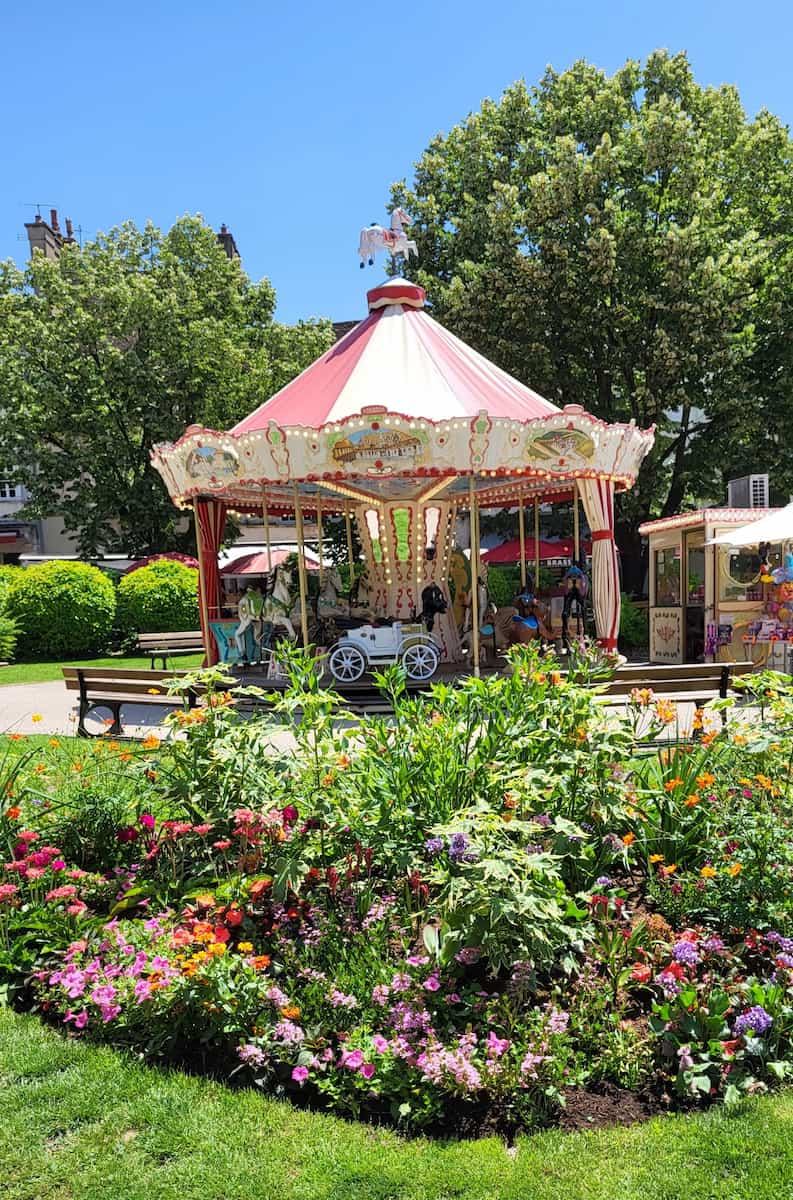
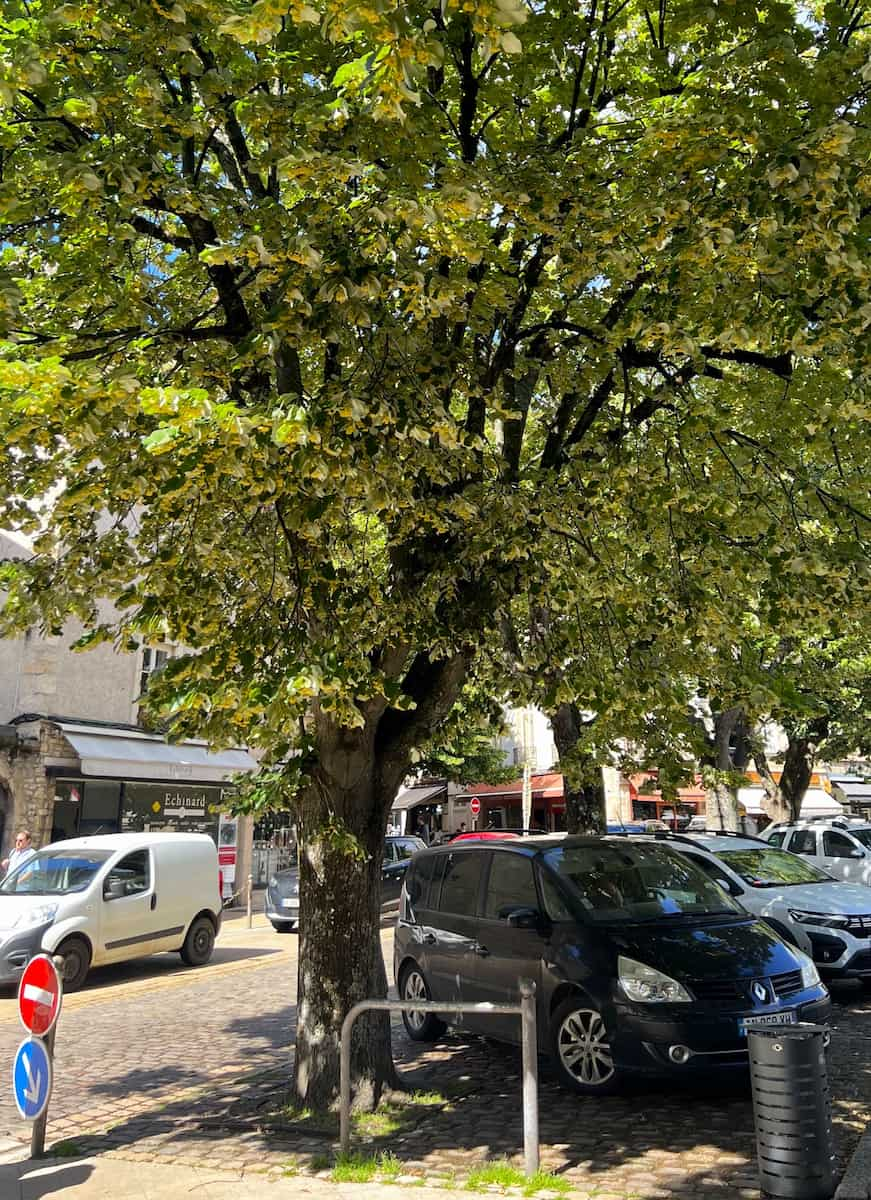
Photography opportunity. The carousel creates a perfect foreground for photos of Beaune’s historic architecture. As the sun began to set, the warm glow of the carousel lights against the twilight sky created a postcard-perfect scene. I wasn’t surprised to see several professional photographers capturing this quintessentially French tableau.
Simple pleasure. In an age of digital entertainment and complex amusements, there was something refreshingly simple about the joy this traditional carousel brought to children. At just €2 per ride, it offers an affordable moment of delight that connects visitors to generations of children who have spun around this same square throughout Beaune’s history.
Carousel features:
- Hand-carved wooden horses and carriages
- Traditional organ music with classic French melodies
- Ornate decorative panels depicting Burgundian scenes
- Special seats for very young children
- Evening illumination with hundreds of twinkling lights
- Central location near cafés and ice cream shops
- Affordable pricing (€2 per ride)
4. Chemins de Lumières Light Show
Nocturnal spectacle. As darkness fell over Beaune, I stumbled upon one of the city’s most magical experiences – Les Chemins de Lumières. These remarkable light shows transform Beaune’s historic buildings into dynamic canvases after sunset. Standing in front of the bell tower at Place Monge, I watched in awe as vibrant projections brought the ancient stones to life with color and movement.
Architectural storytelling. What makes these displays so captivating is how they tell the story of each building through light. The bell tower show began by illustrating its construction, stone by stone, before revealing the inner staircase and clockwork mechanisms that have marked time for centuries. The technical precision was astonishing – light perfectly mapped to every architectural detail.
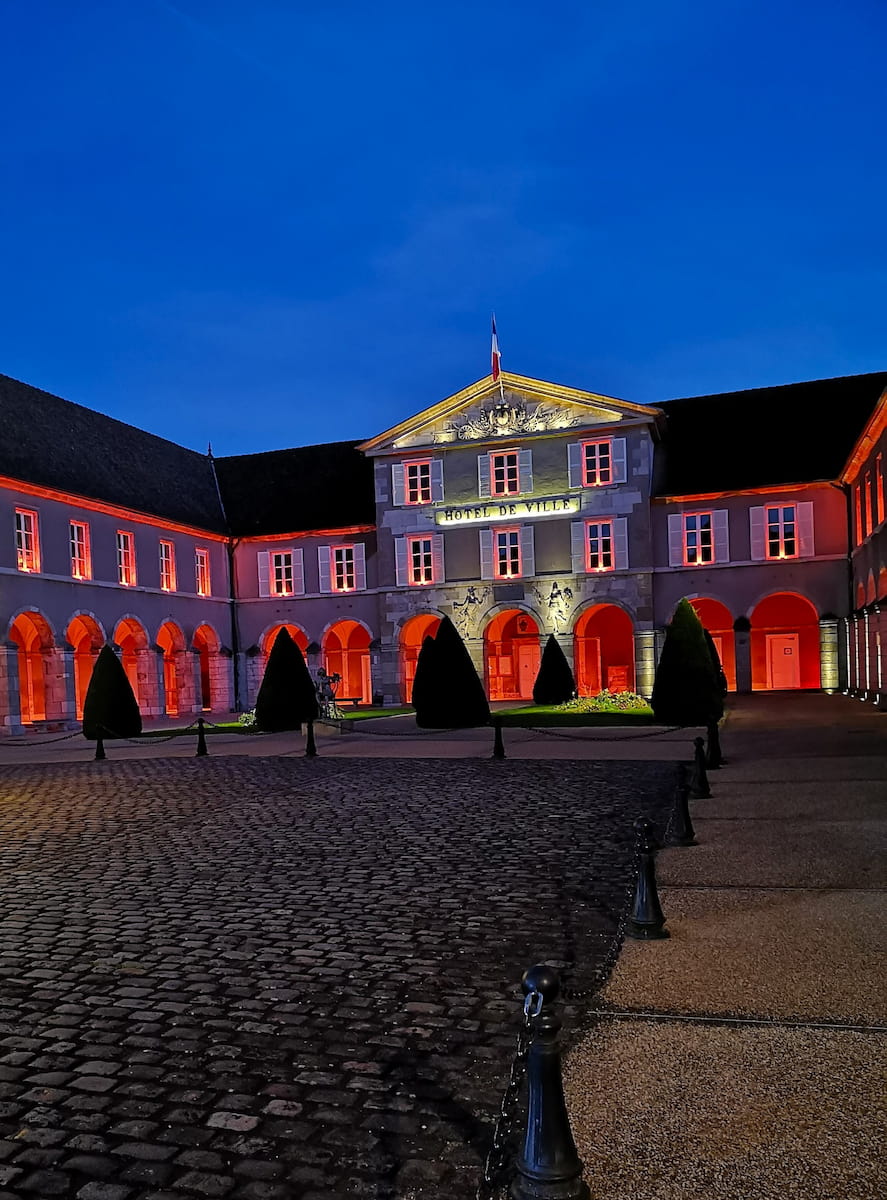
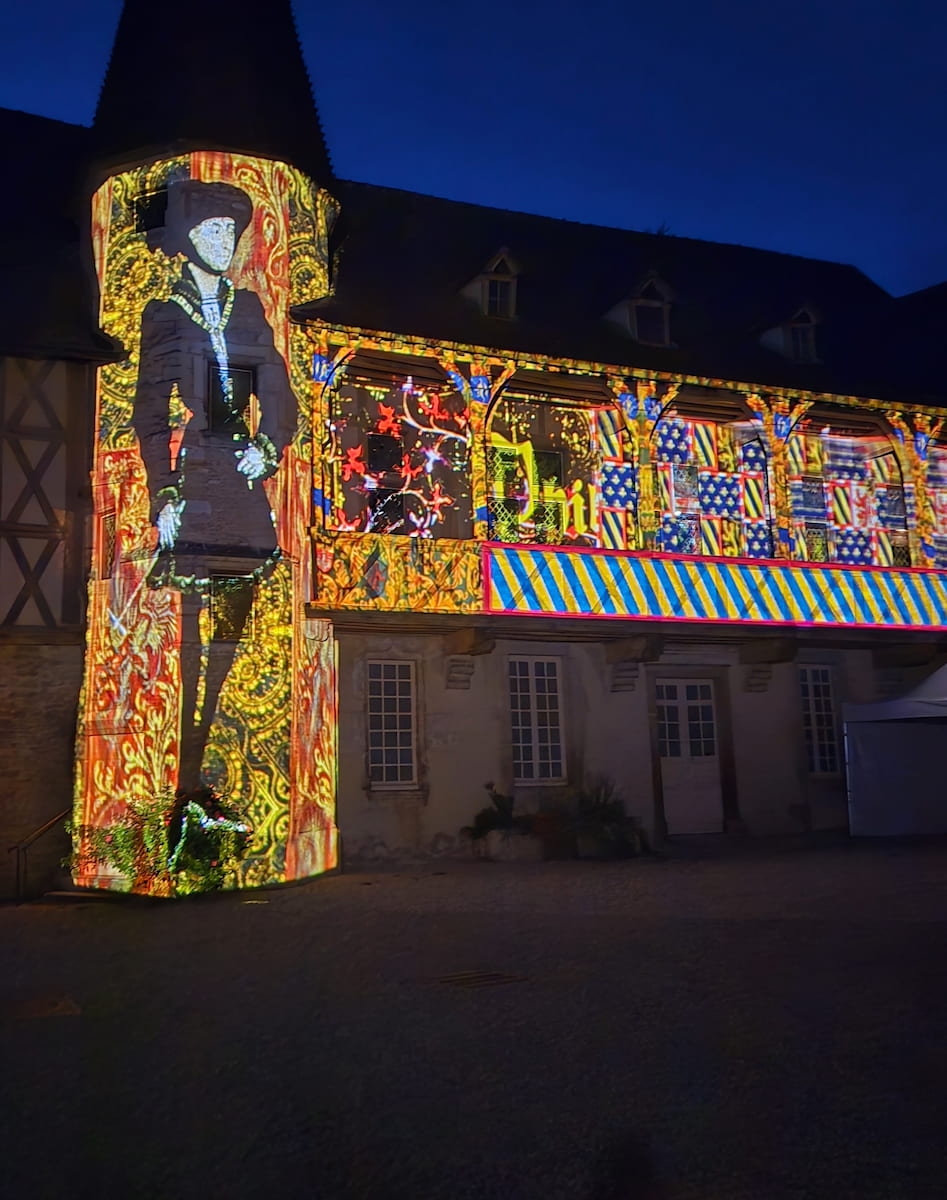
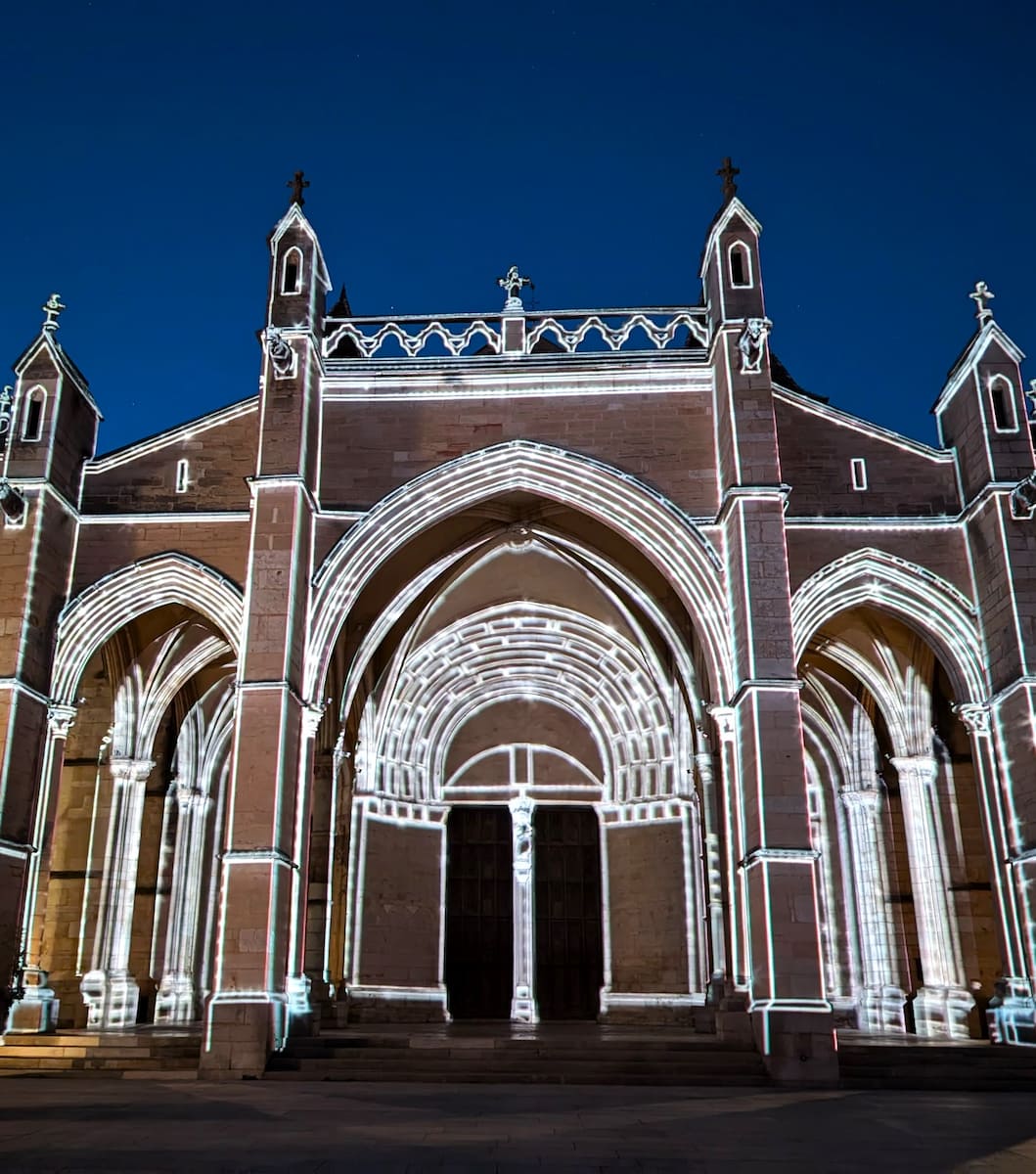
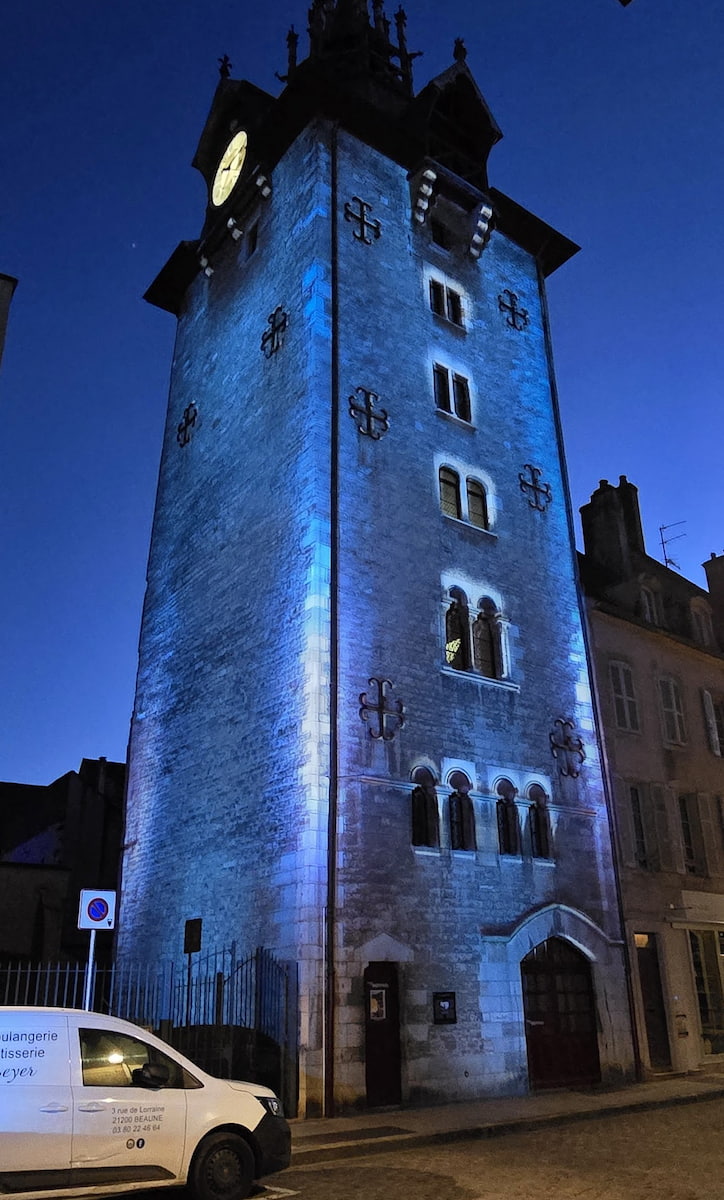
Playful elements. The most delightful moment came when a projected cat appeared to climb out from a window and chase a ball of light around the tower. Children gasped and pointed, while adults marveled at the illusion. These whimsical touches transform what could be a dry historical presentation into an engaging experience for all ages.
Self-guided experience. Unlike many tourist attractions, there are no explanatory signs or formal start times for these light shows. This creates a sense of serendipitous discovery as you wander through evening Beaune. Locals told me there are seven different installations throughout the city, each with its own theme and story to tell about Beaune’s rich heritage.
Evening atmosphere. Beyond the technical impressiveness of the projections, what I loved most was how the light shows transformed the evening atmosphere of Beaune. Families and couples strolled from one installation to another, creating a festive ambiance in the streets. The shared experience of wonder connected visitors and locals alike in appreciation of Beaune’s beauty.
Light show locations:
- The Beffroi (bell tower) at Place Monge
- Notre-Dame Basilica façade
- The courtyard of the Hôtel des Ducs de Bourgogne
- The historic washhouse (lavoir)
- The Théâtre de Verdure
- The façade of the Hôtel de Ville (town hall)
Free Things to Do in Beaune France
1. Beaune Ramparts
Medieval defenses. Walking along Beaune’s remarkably preserved ramparts gave me a fascinating glimpse into the city’s medieval past. These ancient fortified walls once completely encircled the town, protecting its wealthy wine merchants and precious cellars from invaders. Today, they offer visitors a free and accessible way to experience Beaune’s history while enjoying elevated views of both the historic center and surrounding countryside.
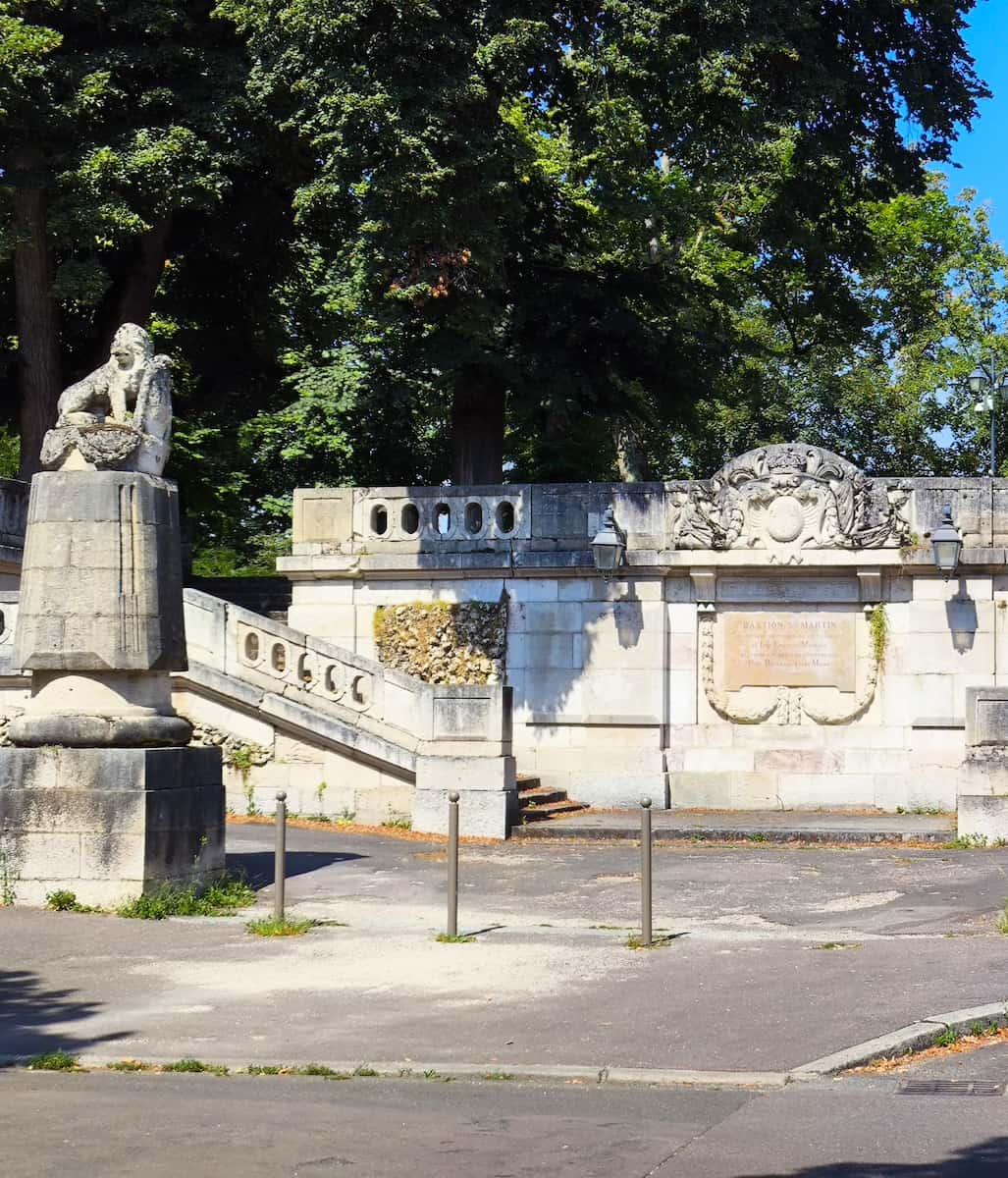
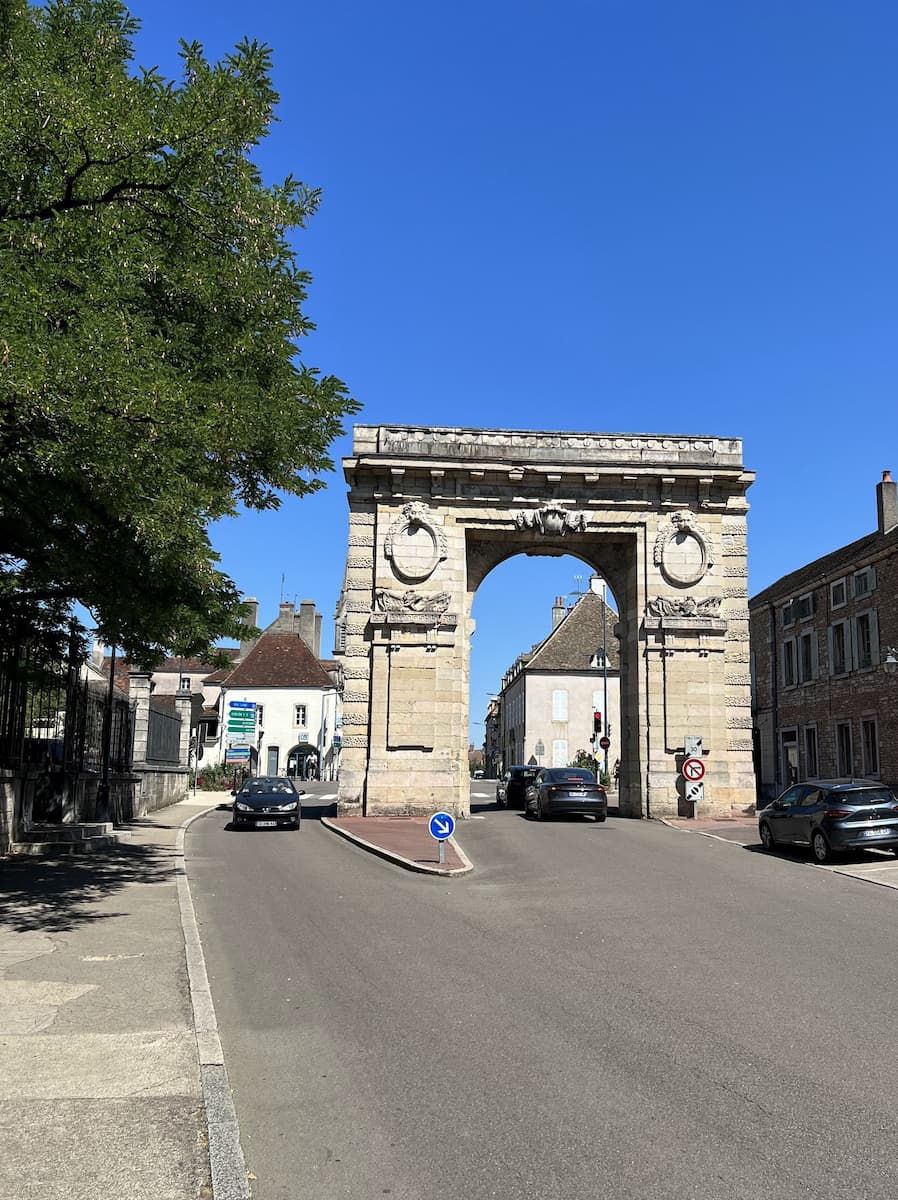
Architectural evolution. What fascinated me most was seeing how the defensive structures evolved over centuries. The oldest sections date from the 12th century, while later additions reflect changing military technologies. The massive round towers and bastions were designed to withstand cannon fire, replacing earlier square towers that were more vulnerable to artillery. Each section tells a chapter in the story of medieval warfare and urban defense.
Historical immersion. Walking these walls, I felt a tangible connection to centuries of Burgundian history. These same stones witnessed the Hundred Years’ War, religious conflicts, and the unification of France. Information panels along the route explain key historical events and architectural features, making this free attraction both entertaining and educational for history buffs and casual visitors alike.
Rampart highlights:
- Porte Saint-Nicolas (medieval gateway)
- Bastion Saint-Martin with its panoramic views
- Tour des Billes (Tower of Marbles)
- The 15th-century watchtower
- The ancient moat (now gardens)
- Remnants of the drawbridge mechanism
- The western section with its elevated walkway
2. Square des Lions
Elevated garden. Climbing the elegant staircase designed by architect Le Noir-Le Romain, I discovered the charming Square des Lions perched atop the former Bastion Saint-Martin. This peaceful 7,500-square-meter garden takes its name from the two lion statues guarding its entrance – silent sentinels that have welcomed visitors since the square’s creation in the late 19th century.
Historical transformation. What struck me most was learning how this space has evolved over centuries. Originally constructed as a military bastion during the Thirty Years’ War in 1637, it was later transformed into a public promenade in 1765 by Mayor Maufoux. The former defensive structure now serves as a tranquil retreat from the bustling city center below – a perfect example of how urban spaces can be reimagined over time.
Botanical diversity. The square boasts an impressive collection of remarkable trees that provide welcome shade on warm Burgundian afternoons. I was particularly drawn to the ancient Ginkgo biloba (maidenhair tree), known locally as “l’arbre aux 400 écus” (the 400 coins tree). Other botanical treasures include maple-leaved plane trees, Osage orange trees, and a towering sequoia that seems oddly at home in this French landscape.
Strategic viewpoint. From this elevated position, I enjoyed sweeping views over Beaune’s terracotta rooftops and the surrounding vineyards. Information panels helped me identify key landmarks in the distance, including the spire of Notre-Dame Basilica and the distinctive polychrome roof of the Hôtel-Dieu. This perspective helped me understand how the city’s layout developed within its defensive walls.
Local atmosphere. Unlike more famous attractions, Square des Lions remains primarily a locals’ spot. I watched elderly gentlemen playing pétanque in the dappled shade while mothers pushed strollers along gravel paths. This authentic slice of Beaune life offered a welcome respite from more touristed areas and a chance to experience the city as residents do.
Square des Lions features:
- The twin lion statues guarding the entrance
- The ancient Ginkgo biloba tree (“l’arbre aux 400 écus”)
- The panoramic viewpoint over Beaune’s rooftops
- The pétanque court where locals gather
- The elegant staircase designed by Le Noir-Le Romain
- The towering sequoia tree
- The information panels identifying distant landmarks
3. Local Market Window Shopping
Sensory feast. Even without spending a euro, wandering through Beaune’s local markets provides a rich sensory experience. The vibrant displays of seasonal produce – from jewel-like cherries in spring to plump porcini mushrooms in autumn – create a kaleidoscope of colors that professional food photographers would envy. The mingled aromas of fresh bread, ripe cheese, and fragrant herbs create an olfactory map of Burgundian cuisine.
Cultural immersion. Market day in Beaune offers a window into authentic French life that no museum can provide. I loved observing the interactions between vendors and regular customers – the animated discussions about the ripeness of peaches, friendly arguments about the best way to prepare rabbit, and the ritual of adding “un petit quelque chose” (a little something extra) to loyal customers’ purchases.
Artisanal craftsmanship. Beyond food, the markets showcase local artisans whose craftsmanship reflects centuries of Burgundian tradition. I spent a fascinating hour watching a basket weaver demonstrate techniques unchanged since medieval times. Nearby, a knife sharpener practiced his trade with mesmerizing precision, drawing a small crowd of appreciative onlookers. These living traditions cost nothing to observe but offer priceless cultural insights.
Photography opportunities. For photography enthusiasts, markets provide endless opportunities to capture authentic moments of French life. Early morning light filtering through the canvas awnings creates a magical atmosphere as vendors arrange their displays. The expressions of concentration as a cheese monger cuts a perfect wedge of aged Comté, or the weathered hands of a vineyard worker selling homemade wine – these unposed moments tell the true story of Beaune.
Language practice. As a visitor trying to improve my French, I found market vendors remarkably patient and encouraging. Even when I only browsed without buying, most were happy to explain their products and production methods. Several vendors seemed genuinely pleased by my interest in their craft, leading to impromptu French lessons on specialized food vocabulary that no textbook would cover.
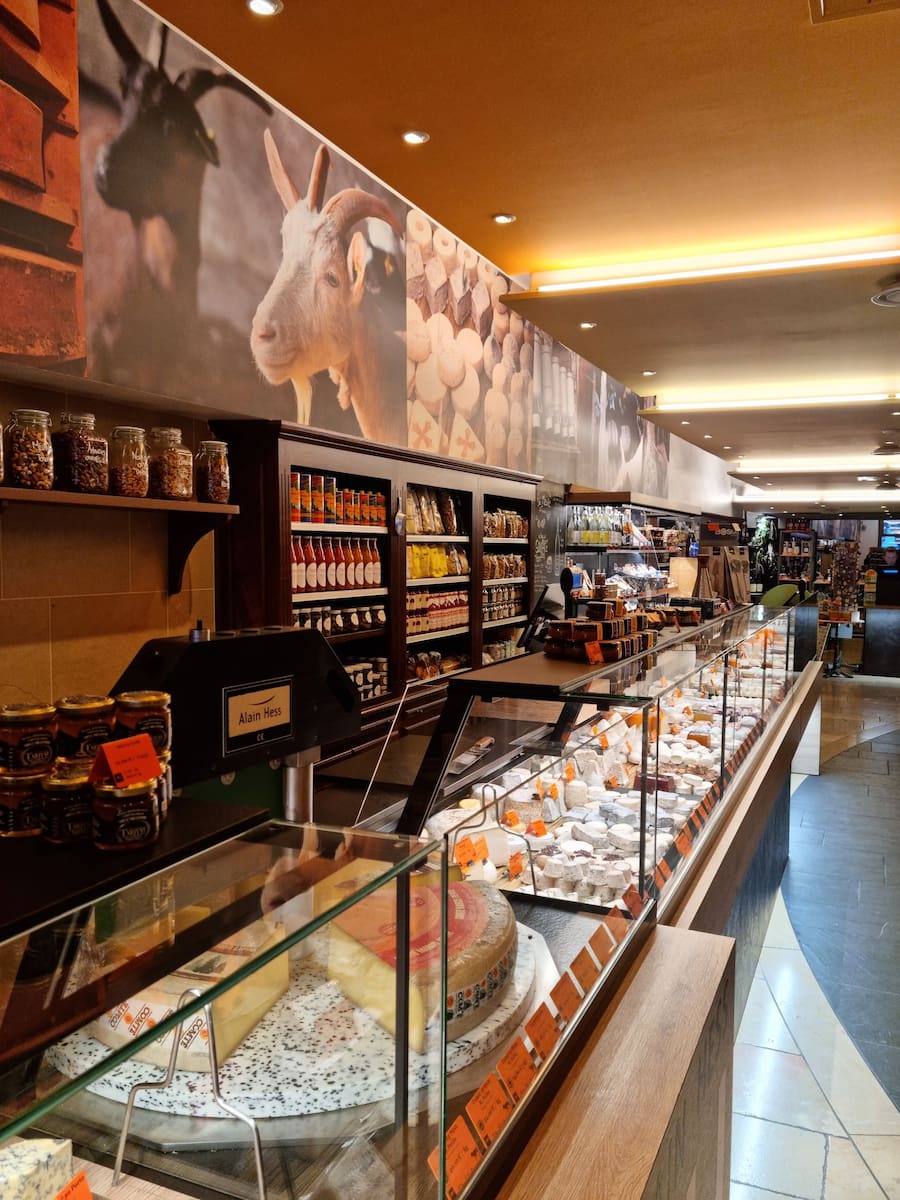
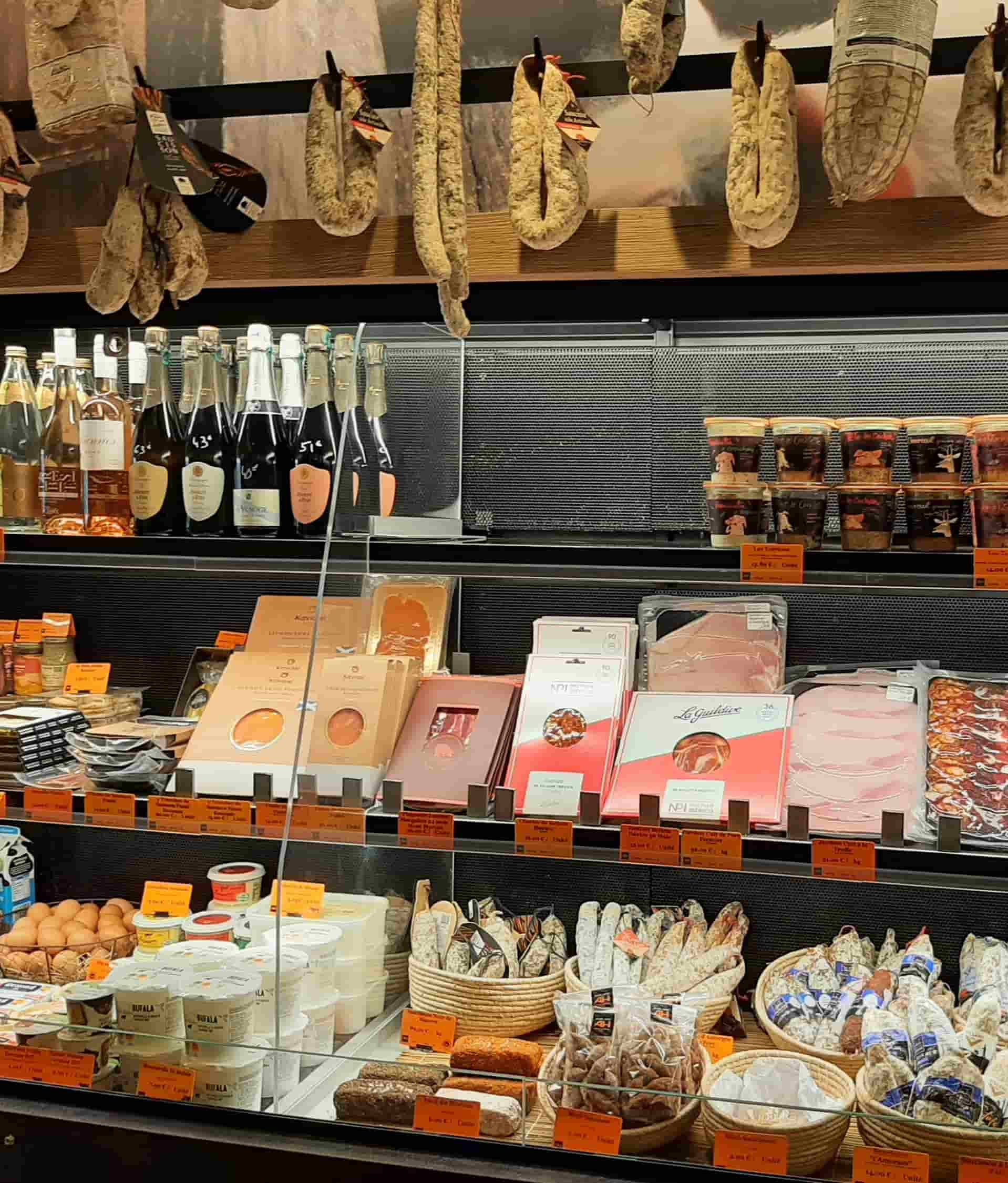
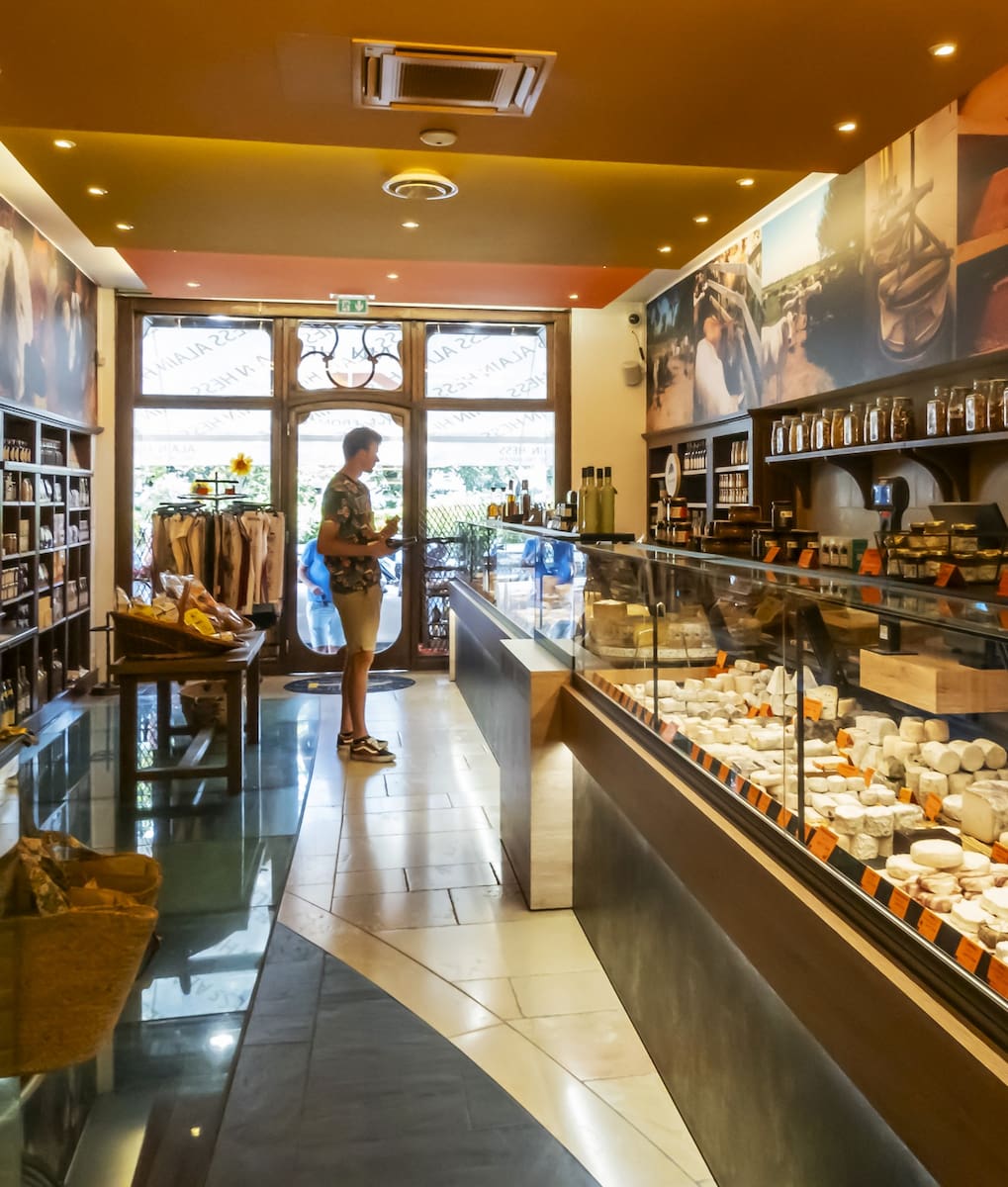
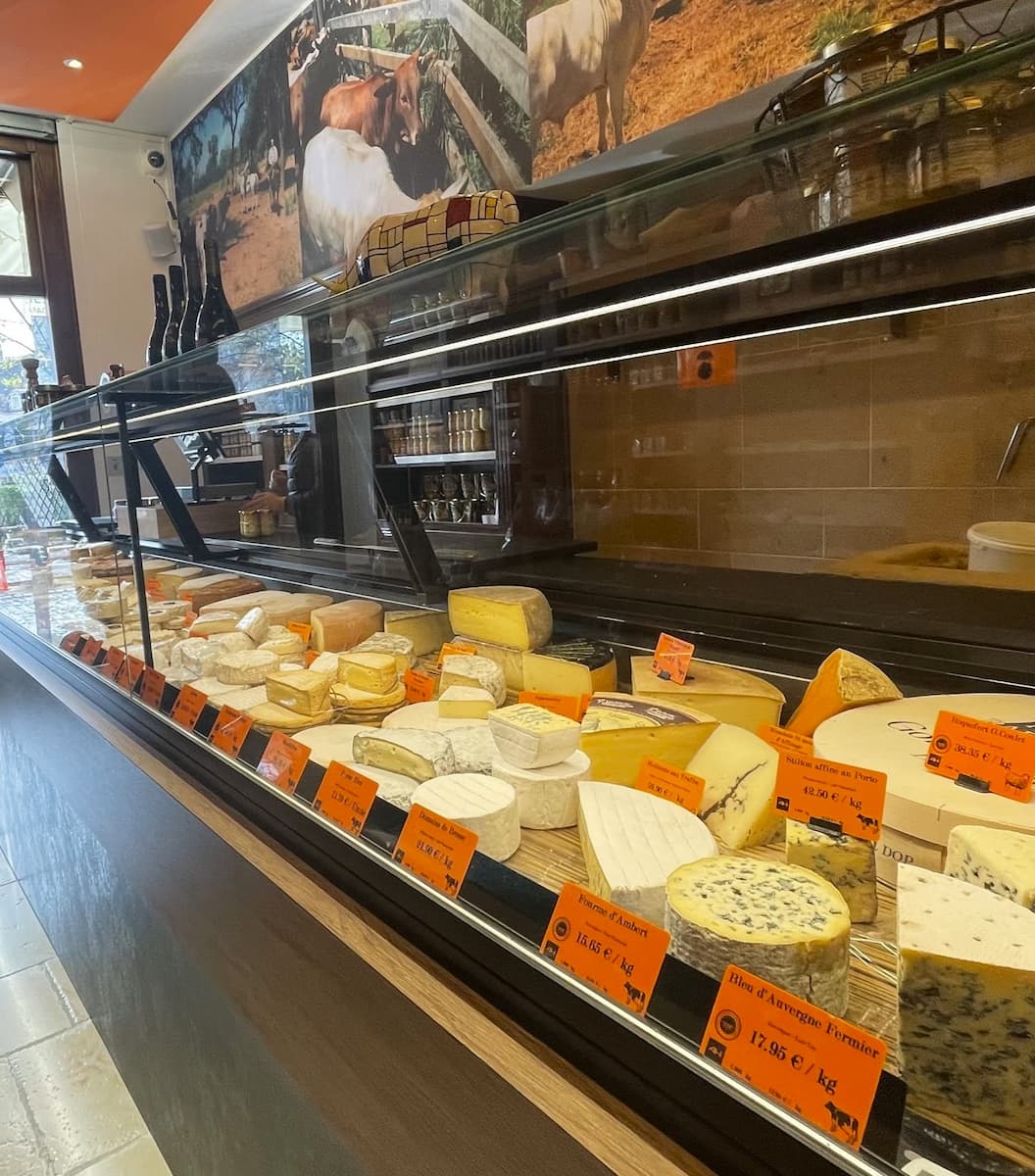
Market highlights to observe:
- The cheese stalls with their regional specialties
- Seasonal produce displays that change throughout the year
- Artisanal bread bakers with wood-fired loaves
- Local wine producers offering tastings
- Craftspeople demonstrating traditional skills
- Flower vendors with stunning seasonal arrangements
- The social interactions between vendors and regular customers
4. Historic Architecture
Architectural timeline. Simply walking Beaune’s streets offers a free education in architectural history spanning nearly a millennium. The oldest buildings, like the 12th-century Romanesque Notre-Dame Basilica with its distinctive porch, stand alongside elegant 18th-century townhouses with wrought-iron balconies. This juxtaposition creates a living museum where you can trace the evolution of French architectural styles without paying a single entrance fee.
Hidden courtyards. Some of my most rewarding discoveries came from glimpsing through open doorways into private courtyards. Many of Beaune’s grand façades conceal interior courtyards with Renaissance staircases, ancient wells, and flowering gardens. While respecting private property, I found many architectural treasures visible from public streets – particularly along Rue de Lorraine and Rousseau Deslandes.
Architectural details. The joy of exploring Beaune’s architecture lies in discovering small details that reveal the city’s history. I spent hours spotting carved stone faces (mascarons) above doorways, ancient merchant signs, and decorative door knockers shaped like wine grape clusters. These elements tell stories about the building’s original purpose and the status of its inhabitants across centuries.
Adaptive reuse. What impressed me most was how Beaune has preserved its architectural heritage while adapting historic buildings for modern use. The former Hôtel des Ducs de Bourgogne now houses the Wine Museum, while ancient wine cellars have become tasting rooms. This thoughtful balance between preservation and practical use ensures that Beaune’s architectural treasures remain living spaces rather than mere monuments.
Architectural highlights to spot:
- Polychrome glazed tile roofs (particularly on the Hôtel-Dieu)
- Half-timbered medieval merchant houses
- Renaissance doorways with carved stone details
- 18th-century mansions with wrought-iron balconies
- Ancient merchant signs above storefronts
- Decorative door knockers and hardware
- Interior courtyards visible through open passages
Seasonal Activities in Beaune France
Christmas in Beaune
Christmas Market magic. Walking through Beaune’s Christmas Market, I was immediately captivated by the cozy wooden chalets selling everything from handcrafted gifts to regional delicacies. The market features a special “Marché des Créateurs” section where talented local artisans showcase their unique creations – perfect for finding one-of-a-kind gifts that you won’t see anywhere else.
Festive flavors. The air is filled with the enticing aromas of mulled wine (vin chaud) and traditional Burgundian treats. I couldn’t resist sampling the pain d’épices (spiced bread), a local specialty that pairs perfectly with a steaming cup of spiced wine as you browse the market stalls. The food vendors offer an impressive selection of regional products, from foie gras to local cheeses and escargots.
Illuminated heritage. What makes Beaune’s Christmas celebrations truly special is how the historic buildings are beautifully illuminated. The Hôtel-Dieu looks particularly stunning with its colorful geometric-patterned roof highlighted against the night sky. The Chemins de Lumières light shows project mesmerizing displays onto historic buildings throughout the city, telling stories of Beaune’s rich heritage.
Festive events. Beyond the market, Beaune hosts special holiday concerts, performances, and activities for all ages. The Festival Mômes & Wonderland (December-January) features dream-like shows and fairy tales that enchant children and adults alike. The atmosphere throughout the city is genuinely festive, with locals and visitors coming together to celebrate the season.
Christmas in Beaune highlights:
- Christmas Market with artisanal crafts and regional products
- Festival Mômes & Wonderland with family-friendly performances
- Chemins de Lumières illuminations on historic buildings
- Vin chaud and pain d’épices tasting opportunities
- Beautifully decorated medieval streets and squares
- Special holiday wine tastings at local cellars
- Festive concerts at Notre-Dame Basilica
Summer Festivals
International Opera Festival. The highlight of Beaune’s summer calendar is undoubtedly the International Festival of Baroque Opera, taking place from July 18-27. This prestigious event transforms the city’s historic venues into stages for world-class performances. I was fortunate to attend a magnificent performance of Dardanus in the atmospheric Cour des Hospices, where the medieval architecture created a perfect backdrop for the baroque masterpiece.
Scenes of Summer. From June through September, the “Scenes of Summer” festival (Scenes d’été côté cours, jardins côté) brings street performances to Beaune’s most picturesque corners. Wandering through the city, I stumbled upon everything from acrobats performing in hidden courtyards to musicians playing in garden settings. As darkness falls, the city is illuminated with special light projections that transform familiar landmarks.
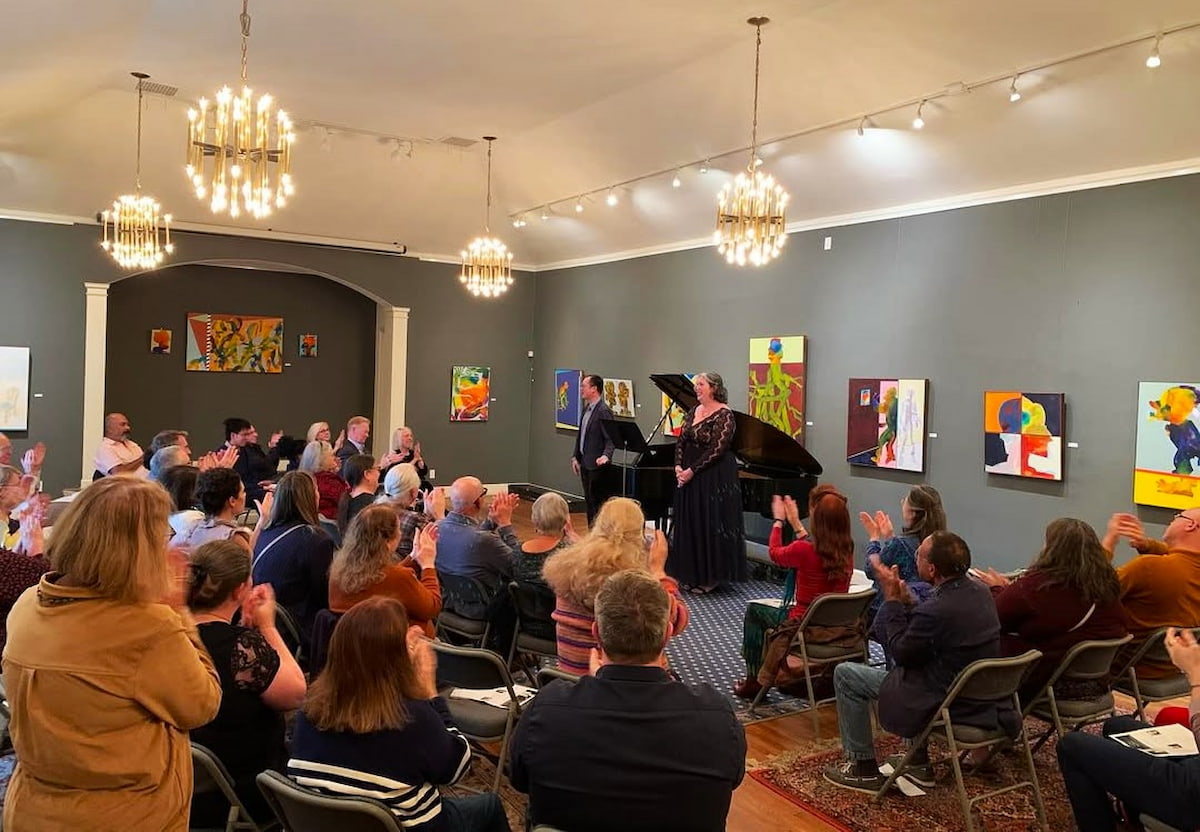
Wine celebrations. Summer is the perfect time to experience special wine events throughout Beaune. Many domaines host outdoor tastings, vineyard tours, and special events that allow visitors to enjoy Burgundy’s famous wines in their natural setting. The warm evenings are ideal for wine garden parties and outdoor degustations that continue well into the night.
Outdoor dining. The pleasant summer weather transforms Beaune into an outdoor dining paradise. The city’s squares and streets come alive with restaurant terraces offering everything from casual meals to fine dining experiences. I particularly enjoyed evening meals in the Place Carnot, where the combination of historic surroundings, delicious food, and local wine created unforgettable summer memories.
Summer festival highlights in Beaune:
- International Festival of Baroque Opera (July 18-27)
- “Scenes of Summer” street performances (June-September)
- Outdoor wine tastings and vineyard events
- Evening light shows and illuminations
- Open-air concerts in historic settings
- Alfresco dining in medieval squares
- Special exhibitions at museums and galleries
Spring Blooms
Floral displays. Arriving in Beaune during spring, I was immediately struck by the beautiful floral arrangements adorning traffic circles, public squares, and hidden corners throughout the city. As a proud recipient of 4 flowers in the “Villes et Villages Fleuris” classification, Beaune takes its floral displays seriously. The municipal gardeners create stunning arrangements that change with the season, incorporating perennials and Japanese grasses in artistic compositions.
Park explorations. The 5-hectare Parc de la Bouzaize transforms into a verdant paradise in spring. Walking along its peaceful paths, I discovered flowering trees, meticulously maintained garden beds, and tranquil water features. The English-style garden section is particularly beautiful in spring, with its rare tree species and carefully planned flower displays creating a perfect setting for relaxation.
Vineyard awakening. Spring is a magical time in the vineyards surrounding Beaune. The dormant vines begin their annual cycle of growth, with tiny buds breaking through in a process known as “budbreak.” Cycling along the Voie des Vignes during this season, I witnessed the beginning of the growing season that would eventually produce Burgundy’s famous wines. The landscape transforms from winter browns to vibrant greens, creating a stunning backdrop for outdoor activities.
Garden discoveries. Beyond the public parks, spring reveals hidden garden treasures throughout Beaune. The Boussard de la Chapelle garden with its climbing roses comes alive in spring, creating a romantic spot that feels worlds away from the bustle of tourism. Many private courtyards visible from public streets display impressive spring blooms, adding splashes of color to the historic stone buildings.
Spring bloom highlights in Beaune:
- Award-winning floral displays throughout the city
- Parc de la Bouzaize’s English garden and flowering trees
- Budbreak in the surrounding vineyards
- Boussard de la Chapelle garden’s climbing roses
- Hidden courtyard gardens visible from public streets
- Spring flowers in Square des Lions
- Flowering trees along the ancient ramparts
Autumn Vineyard Walks
Harvest atmosphere. Depending on the exact timing, you might witness the excitement of the grape harvest (vendange). Even after the grapes have been picked, the atmosphere remains charged with anticipation as winemakers begin the vinification process. Many domaines offer special autumn tastings where visitors can sample wines while learning about the current vintage’s progress.
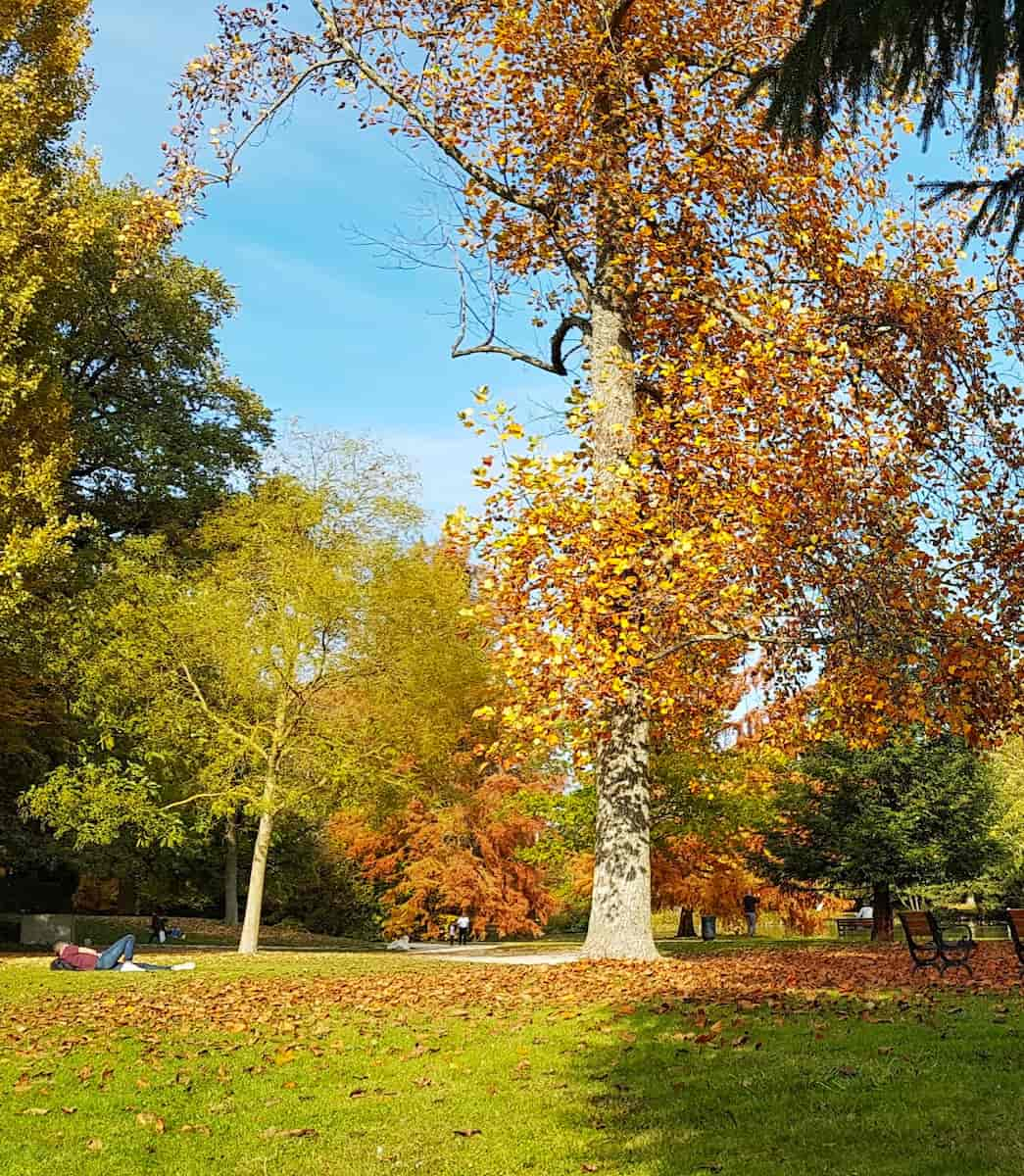
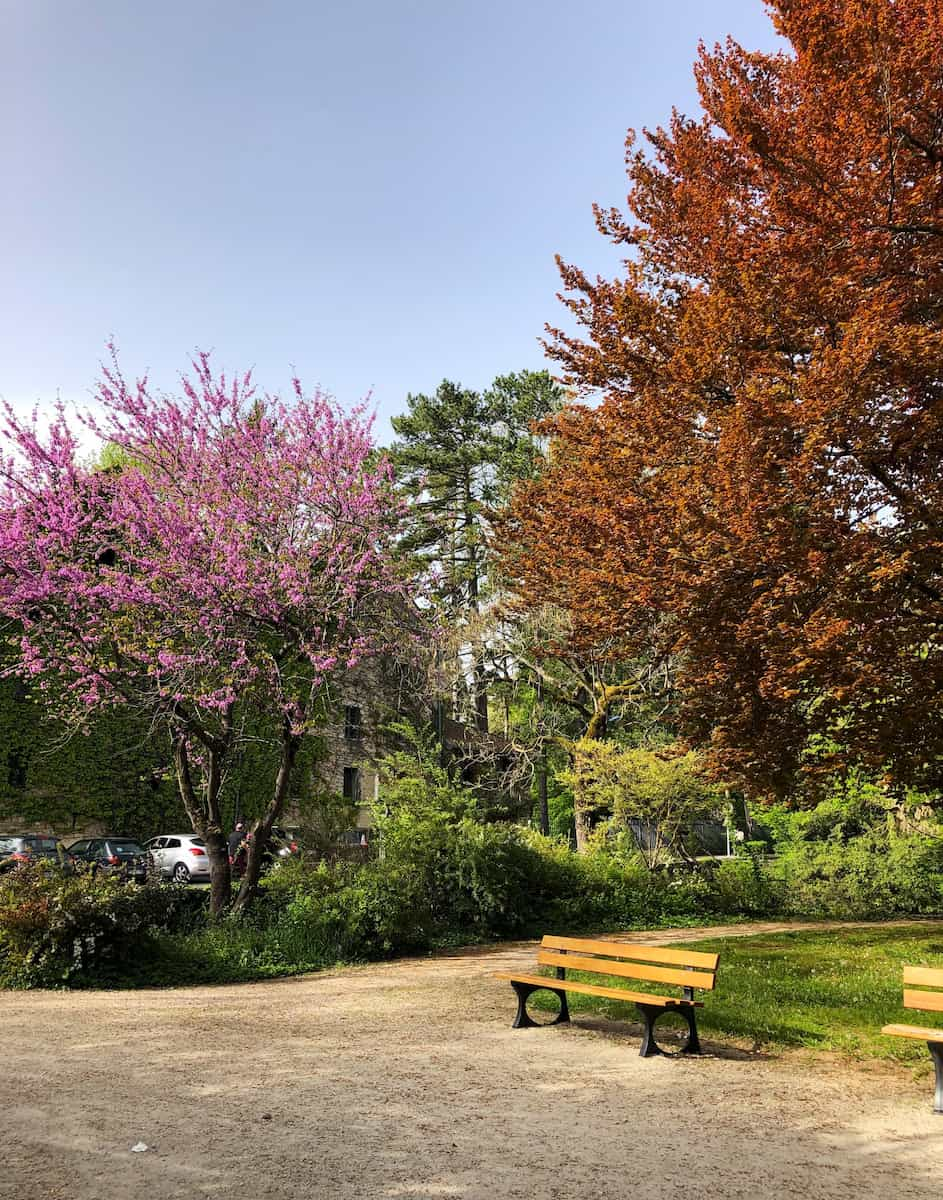
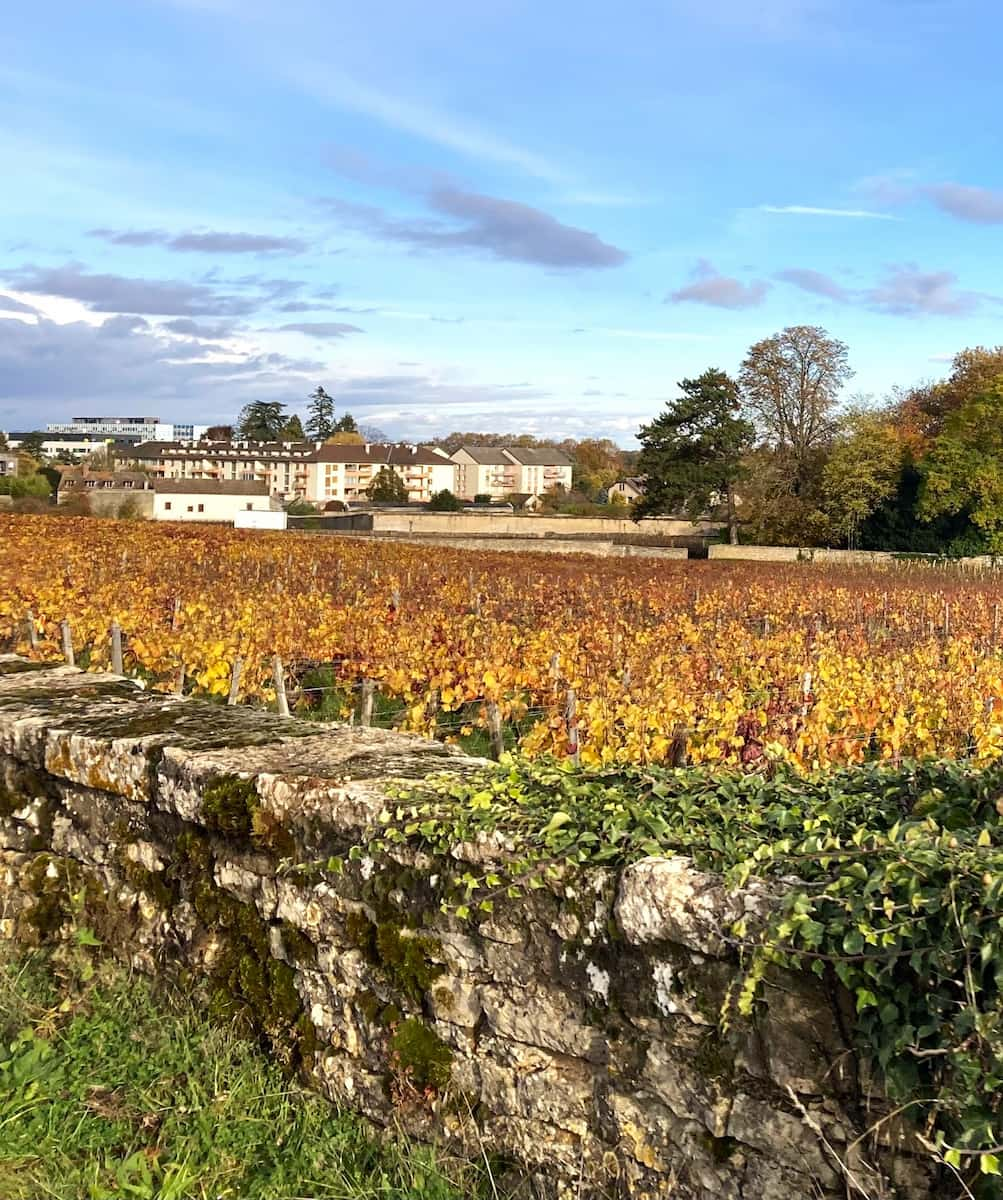
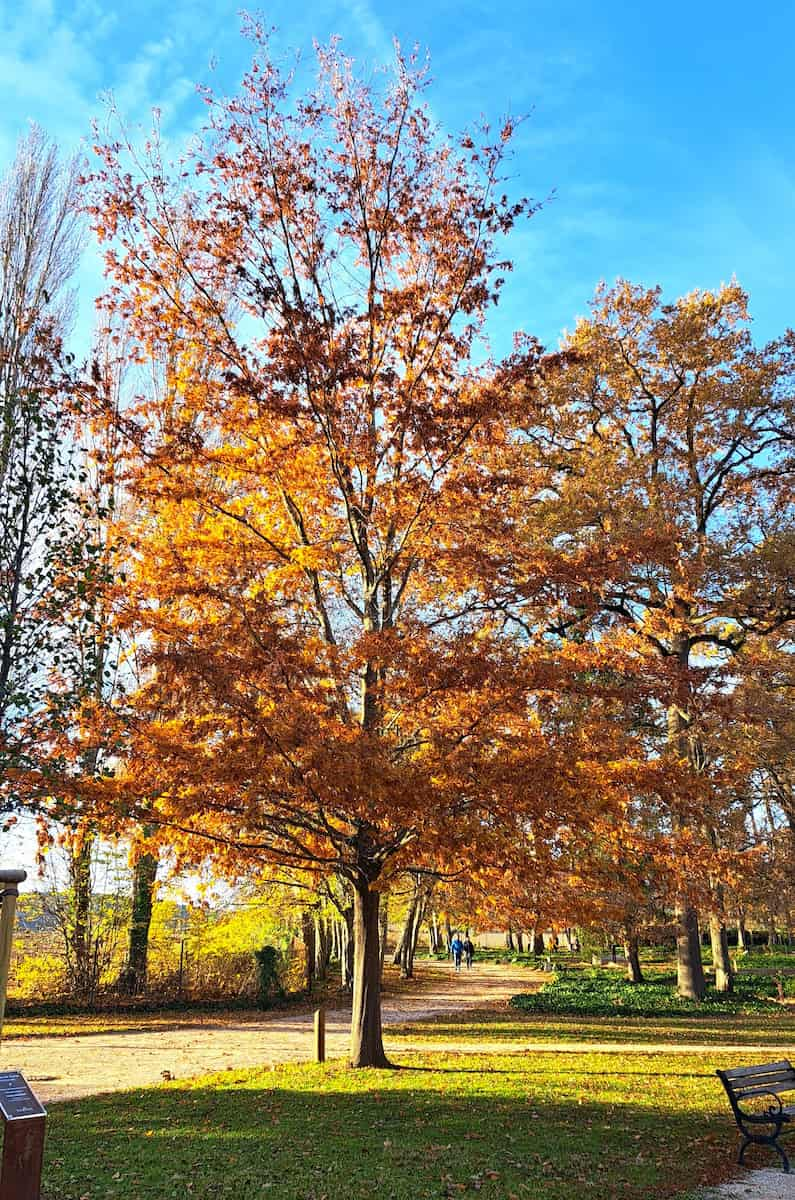
Scenic routes. The hiking trails around Pommard and Volnay are particularly spectacular in autumn. Following these well-marked paths, I enjoyed panoramic views of the golden vineyards stretching toward the horizon. The Route des Grands Crus provides another excellent way to experience the autumn colors, either by car, bicycle, or on foot, with numerous viewpoints offering perfect photo opportunities.
Seasonal celebrations. Autumn in Beaune culminates with the world-famous Hospices de Beaune Wine Auction in November. This prestigious charity auction has been held for over 150 years and creates a festive atmosphere throughout the region. For active visitors, the Foulée des Vendanges race in Savigny-lès-Beaune offers the chance to run through the autumn-colored vineyards on half-marathon, 10km, or 5km routes.
Autumn vineyard highlights:
- Hiking trails around Pommard and Volnay
- The Route des Grands Crus scenic drive
- Hospices de Beaune Wine Auction (November)
- La Foulée des Vendanges race in Savigny-lès-Beaune
- Special autumn wine tastings and cellar tours
- Seasonal truffle and mushroom hunting experiences
Day Trip from Beaune France
1. Meursault Wine Tour
White wine paradise. Arriving in Meursault, I was immediately struck by the village’s dedication to Chardonnay. This is the kingdom of white Burgundy, where the limestone-rich soils produce some of the world’s most prestigious white wines. The village is home to 19 Premier Cru vineyards, each producing wines with distinctive characteristics that reflect their specific terroir.
Village exploration. Beyond wine tasting, Meursault itself is a charming village worth exploring. Walking through its streets, I admired the beautiful residences and winegrowers’ houses built from white Burgundy stone. The village center features flowerbeds that add colorful accents to the otherwise monochromatic architecture. The church and town hall are particularly noteworthy architectural highlights.
Panoramic views. For a broader perspective, I followed a local recommendation to visit the “mountain” of Saint Christophe, which offers a fantastic panorama over Meursault and its surrounding vineyards. This vantage point helped me understand the layout of the different vineyards and appreciate the meticulous organization of Burgundy’s wine landscape.
Meursault wine tour highlights:
- Château de Meursault guided cellar tours and tastings
- Le Manoir des Parcellaires de Saulx wine experiences
- Domaine Yves Boyer Martenot tastings of village and Premier Cru wines
- The panoramic viewpoint at Saint Christophe mountain
- The village’s white Burgundy stone architecture
- Landscape reading table amidst the Grand Cru vineyards
- Specialized tastings comparing different terroirs and vintages
⭐ Best Tours
- Meursault Tour of Vineyards on Motorbike with Sidecar – Experience the vineyards of Meursault in a unique way, riding through the countryside on a vintage motorbike with sidecar.
- Small Group Day Tour from Beaune including Tastings at two producers and Lunch – Spend a full day exploring Burgundy’s wine country with tastings at two producers and a delicious local lunch.
2. Châteauneuf-en-Auxois
Medieval marvel. As I approached Châteauneuf-en-Auxois, the village’s strategic position became immediately apparent. Built on a hilltop overlooking the Auxois plains, this fortified village has earned its place among “Les Plus Beaux Villages de France” (The Most Beautiful Villages in France). Walking through its ancient streets, I felt transported back in time, surrounded by well-preserved medieval architecture dating back many centuries.
Fortress exploration. The highlight of my visit was undoubtedly the impressive medieval fortress that dominates the village. This remarkable example of 14th-century Burgundian military architecture has a fascinating history, including the dramatic story of its last heir, Isabelle de Chaudenay, who was burned alive for allegedly poisoning her husband. The castle’s various buildings are open to visitors, offering insights into medieval life and spectacular views of the surrounding countryside.
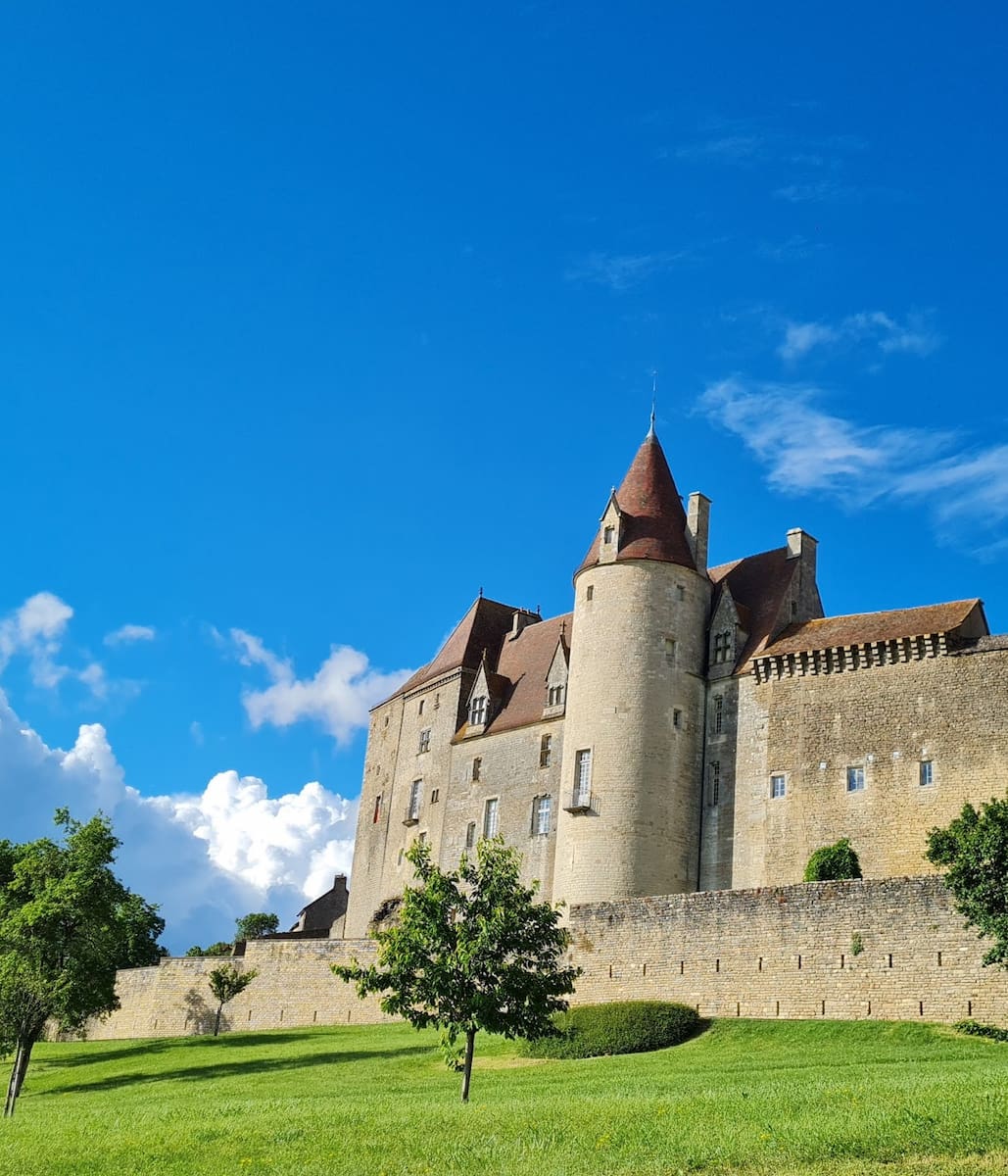
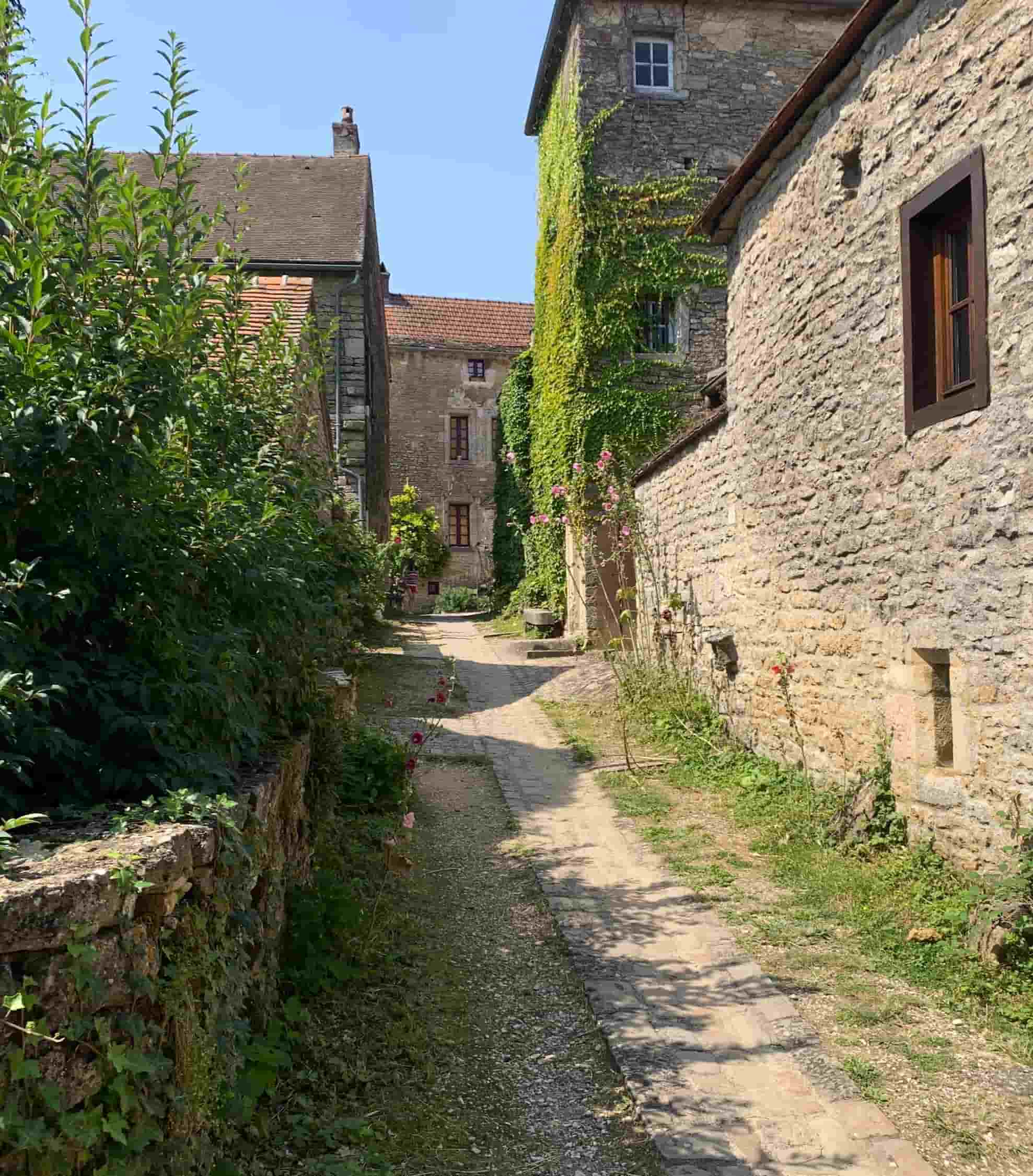
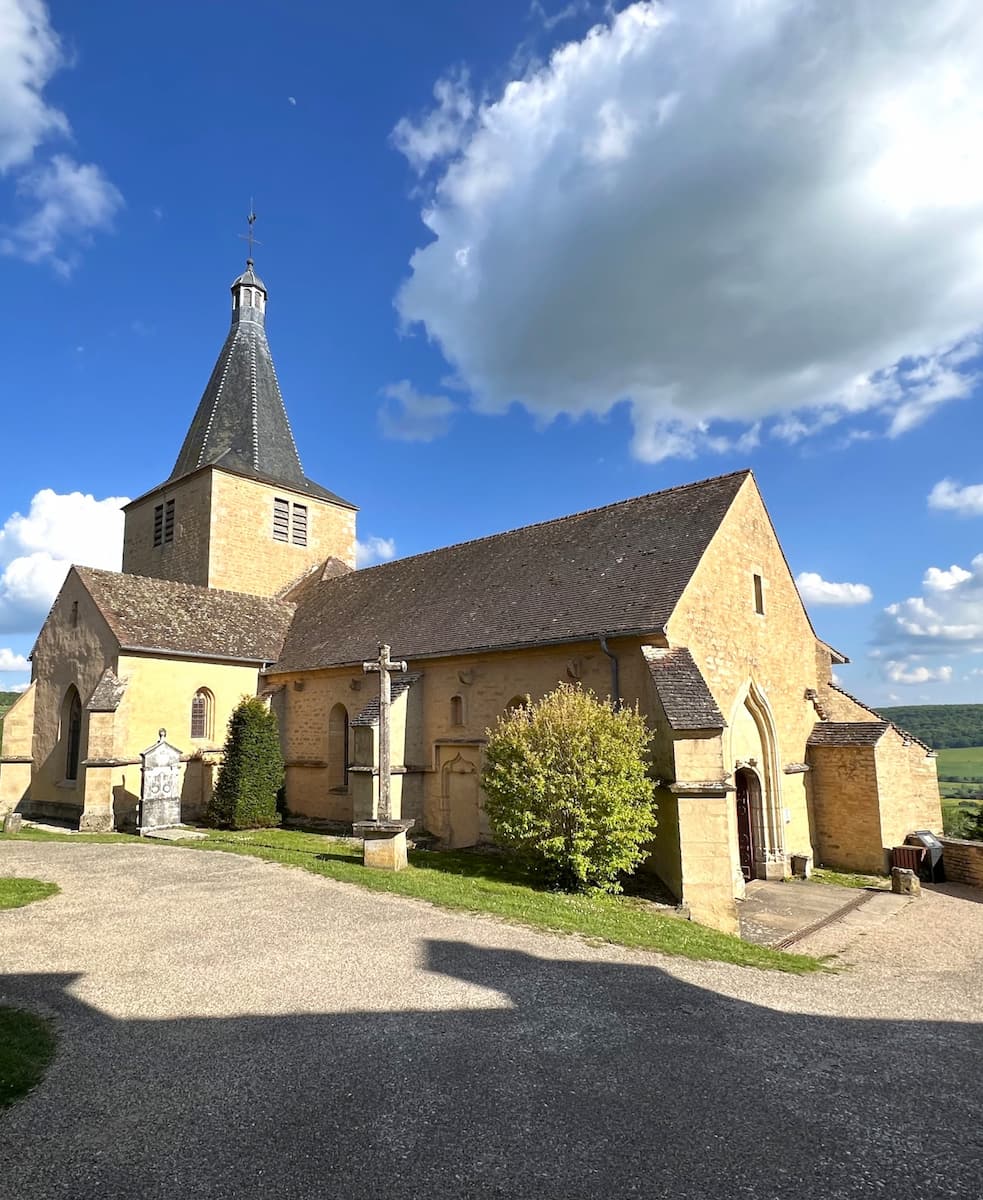
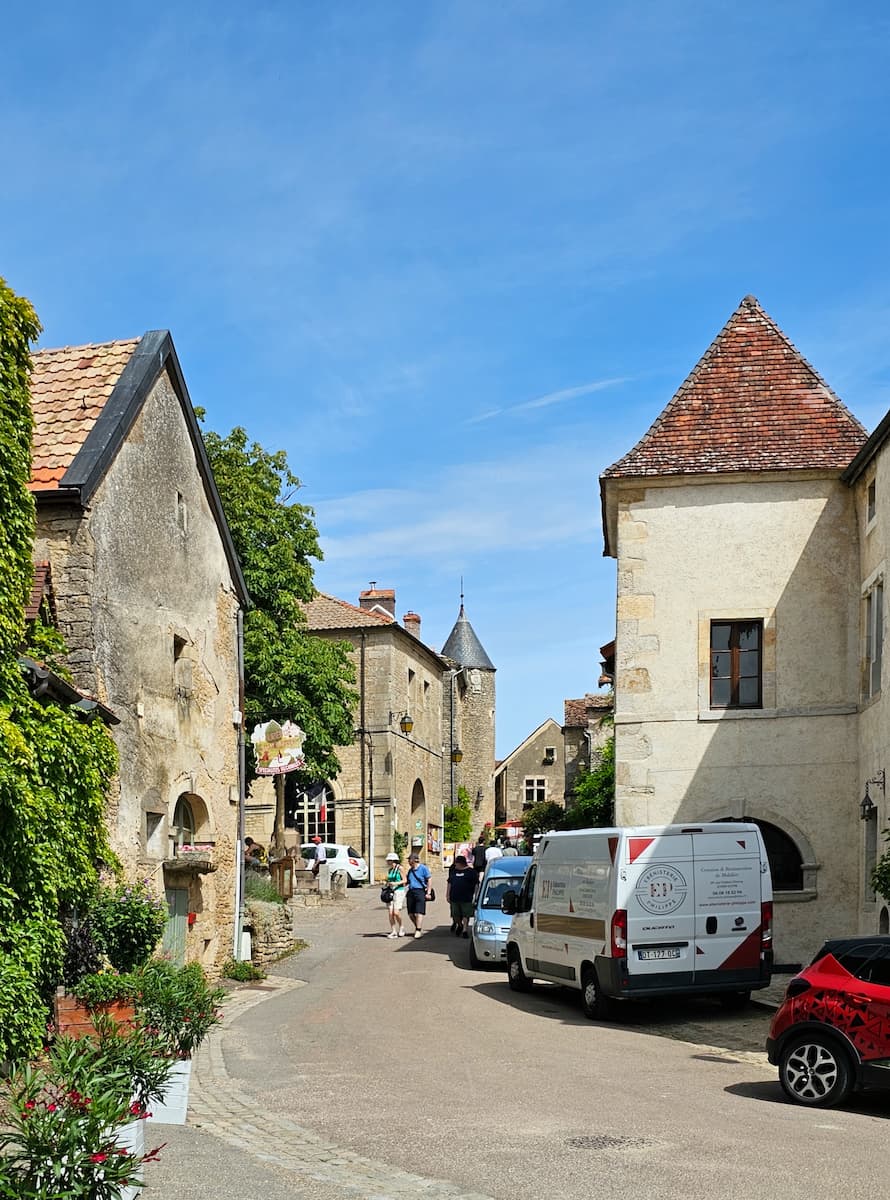
Panoramic vistas. Near the main car park, I discovered a cross by a hollow oak tree that provides an impressive view of the Auxois plain and the Burgundy Canal below. From this vantage point, I could see at least three reservoirs and the distant Morvan hills. Another spectacular viewpoint is the mission cross belvedere near the church’s north door, which reveals a stunning panorama of the surrounding landscape.
Local gastronomy. After exploring the village, I enjoyed a delicious meal at one of Châteauneuf’s excellent restaurants. The village is home to several dining options, ranging from casual bistros to more upscale establishments. Sitting on the terrace at Auberge du Marronier, I savored regional specialties while taking in the magnificent views that have attracted visitors for centuries.
Châteauneuf-en-Auxois highlights:
- The 14th-century medieval fortress with guided tours
- Panoramic viewpoints overlooking the Burgundy Canal
- The 15th-century Church of St. James and St. Philip with polychrome statues
- Medieval Market held every two years on the last weekend of July
- Scenic country walks through surrounding woods and hills
- Five excellent restaurants offering regional cuisine
- The mission cross belvedere with views of the Auxois and Morvan hills
3. Dijon
Historical center. Stepping off the train in Dijon, I was immediately drawn into the city’s well-preserved medieval core. The historic center is compact enough to explore on foot, with highlights including the magnificent Palace of the Dukes of Burgundy, which now houses the impressive Fine Arts Museum. Walking along the narrow streets, I admired the half-timbered houses and elegant mansions that reflect Dijon’s prosperous past as the capital of the powerful Dukes of Burgundy.
Culinary traditions. No visit to Dijon would be complete without exploring its famous culinary heritage. I started at the covered market (Les Halles), designed by Gustave Eiffel, where local producers sell everything from fresh produce to regional cheeses and charcuterie. Of course, I had to sample the city’s namesake mustard, visiting a traditional mustard shop where I tasted varieties ranging from the classic Dijon to more creative flavors infused with local ingredients.
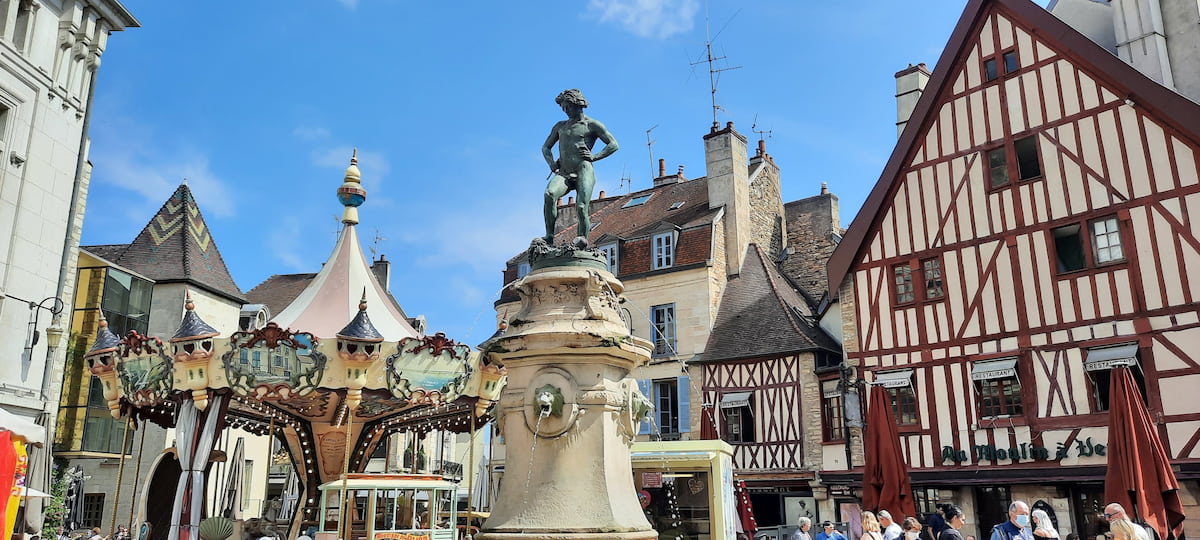
Cultural treasures. Dijon boasts an impressive array of museums and cultural sites. The Musée des Beaux-Arts, housed in the ducal palace, contains masterpieces spanning several centuries, including the famous tombs of the Dukes of Burgundy with their mourning figures (pleurants). I was particularly impressed by the well-preserved medieval architecture of Notre-Dame Church, with its famous owl (la chouette) carved into the exterior – touching it is said to bring good luck.
Christmas atmosphere. During the holiday season, Dijon’s Christmas Market transforms the city center into a festive wonderland. The market features beautifully decorated chalets selling artisanal products, regional specialties, and unique gifts. The city’s historic buildings are illuminated with festive lights, creating a magical atmosphere perfect for a winter day trip from Beaune.
Dijon day trip highlights:
- Palace of the Dukes of Burgundy and Fine Arts Museum
- Notre-Dame Church with its famous owl sculpture
- Les Halles covered market designed by Gustave Eiffel
- Traditional mustard shops with tasting opportunities
- Tour Philippe le Bon offering panoramic city views
- The pedestrianized Rue de la Liberté shopping district
- Christmas Market with regional specialties (during holiday season)
⭐ Best Activities
- Burgundy wines masterclass with a sommelier – Deepen your wine knowledge with a sommelier-led masterclass in Dijon, focusing on the renowned wines of Burgundy.
FAQ about Visiting Beaune
What are the top things to do in Beaune?
The best experiences include visiting the museum – Hospices de Beaune, exploring the ramparts de Beaune, and wine tastings along the Burgundy wine route. Don’t miss a stroll through the heart of the city and a stop at Notre Dame.
How do I visit the Hospices de Beaune?
The Hospices de Beaune is located in the center of Beaune and is open for tours daily. It’s one of the most famous buildings in eastern France and a highlight for anyone interested in the history of the city.
Where should I stay in Beaune for a wine trip?
Stay in Beaune city center to be close to the best restaurants, wine cellars, and places to visit. For a quieter experience, choose a guesthouse in the vineyards of Burgundy around the city.
What is the history of the city of Beaune?
Beaune has a rich history dating from the Roman era, through the French Revolution, and into its current status as the heart of the Burgundy wine region. The city is famous for its medieval buildings, the ramparts, and its role in wine tourism.
How do I get to Beaune from Paris or Dijon?
Take a train from Paris to Dijon, then transfer to a local train to Beaune; the trip to Beaune is fast and scenic. Driving from Dijon is also easy, following the Burgundy wine route through vineyards of Burgundy.
What are the best restaurants in Beaune?
Beaune offers many top restaurants in the heart of the city, including those with extensive wine lists and regional cuisine. Book ahead, especially during wine auction weekends and festivals.
What makes the museum – Hospices de Beaune unique?
The museum – Hospices de Beaune is famous for its flamboyant Gothic architecture, colorful roof, and historical hospital ward. It’s also the site of the world’s most famous wine auction, held every November.
What are the delights of Beaune along the wine route?
Enjoy wine tastings along the Burgundy wine route, sample crème de cassis, and visit renowned cellars like Château de Beaune and Château de Pommard. Cycling or driving the route is one of the best ways to discover the vineyards of Burgundy.
Is Notre Dame in Beaune worth visiting?
Notre Dame is a stunning Romanesque basilica in the center of Beaune, known for its historic tapestries and beautiful architecture. It’s a must-see for anyone interested in the history of Beaune and religious sites in France.
What are the best day trips from Beaune?
Top day trips from Beaune include a Meursault wine tour, exploring the medieval village of Châteauneuf-en-Auxois, and visiting Dijon, the historic capital of the Burgundy wine region. Each offers a unique perspective on the heart of Burgundy and its surrounding wine regions.
